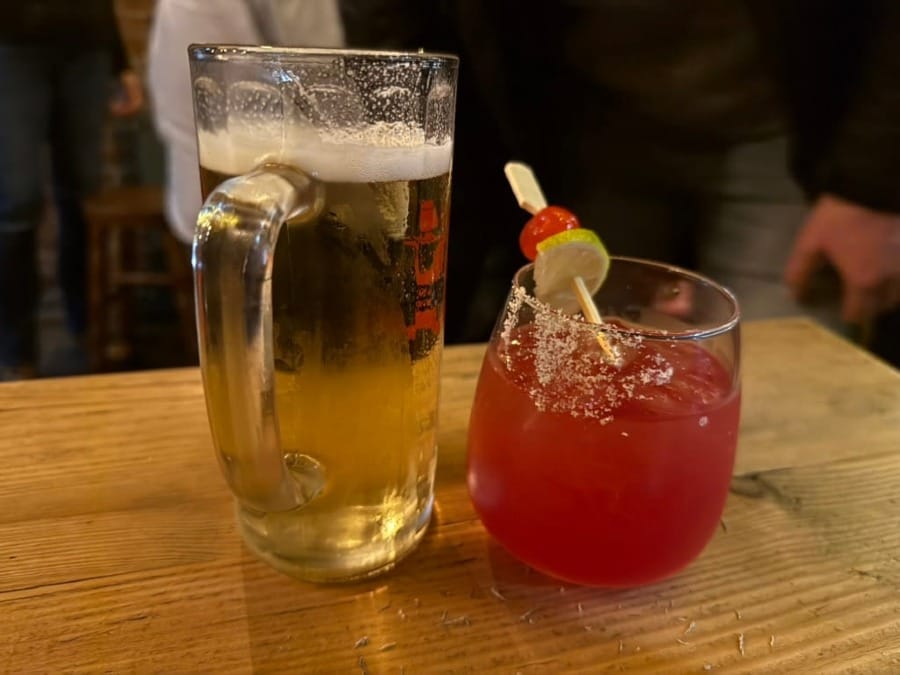
Pub Edition 🍻🍹
Kind words about the Genius Loci Digest
To receive your Digest is to take a long drink from a cool stream on a hot day. Your beautiful word paintings take me to places I'd forgotten. Thank you. Chris
⚡️ View the latest digest and the full archive here.
📐 My Goals ℹ️ Donations Page & Status 📸 MPP Status 🛍️Shop
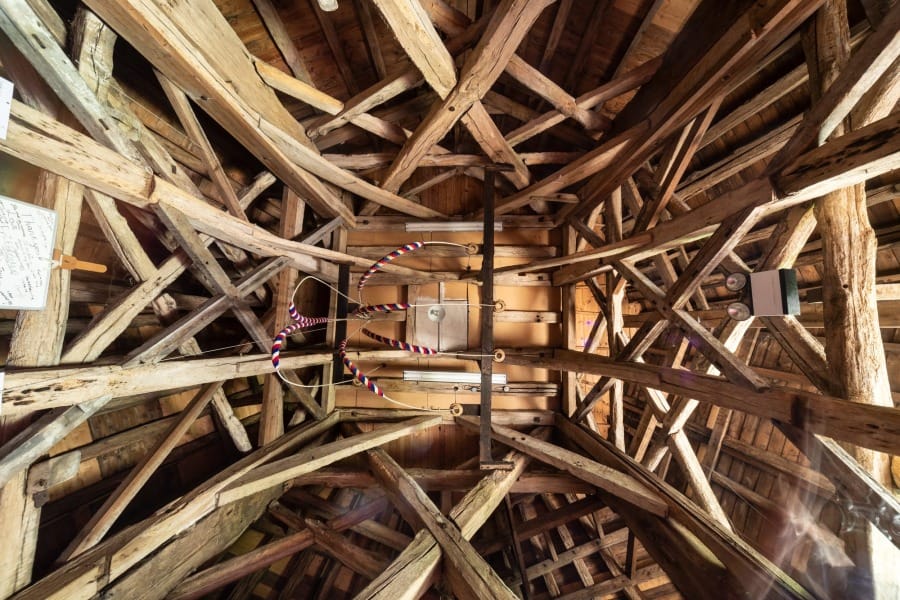
Inside the remarkable tower of St. Augustine, Brookland on the Romney Marsh.
"A good local pub has much in common with a church, except that a pub is warmer, and there's more conversation."
William Blake
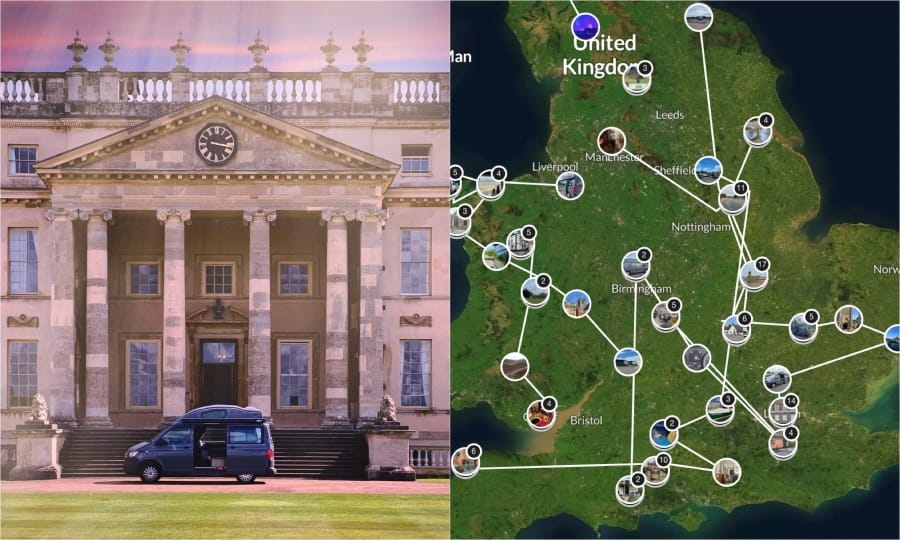
I daren’t think how many miles I’ve travelled over the last thirty years – chasing the perfect photograph of a building and, at the same time, pursuing something far harder to capture: a sense of who I am, how I fit within things, and how to navigate the times we’re living through.
Old buildings seem to provide the framework that offers up clues as to what ignites me. Churches, especially – even though I’m not religious – continue a kind of dialogue that calms the anxious self, helps me feel rooted, and offers the long view: a perspective on the future through the steady lens of the past.
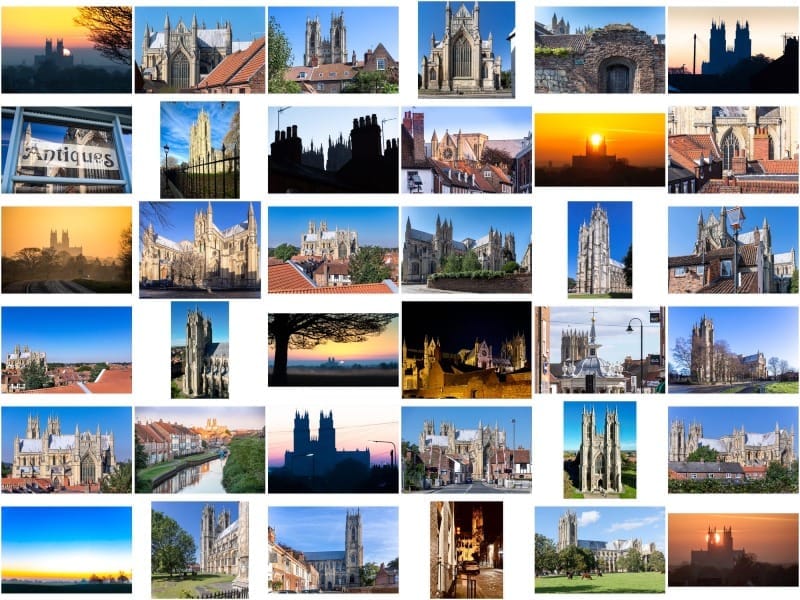
But there’s another kind of building that has quietly become a sanctuary for me – the public house – and not for the obvious reasons.
Sometimes, after a long shoot, I’ll park up in the van and feel that creeping sense of emptiness that comes with solitude. The kind that seeps in during the depths of winter when the day’s work is done and the light has gone. Over the years, I’ve built a network of familiar pubs – and, in turn, familiar faces – that seem to cast out the loneliness. A kind of geography of belonging mapped across the country.
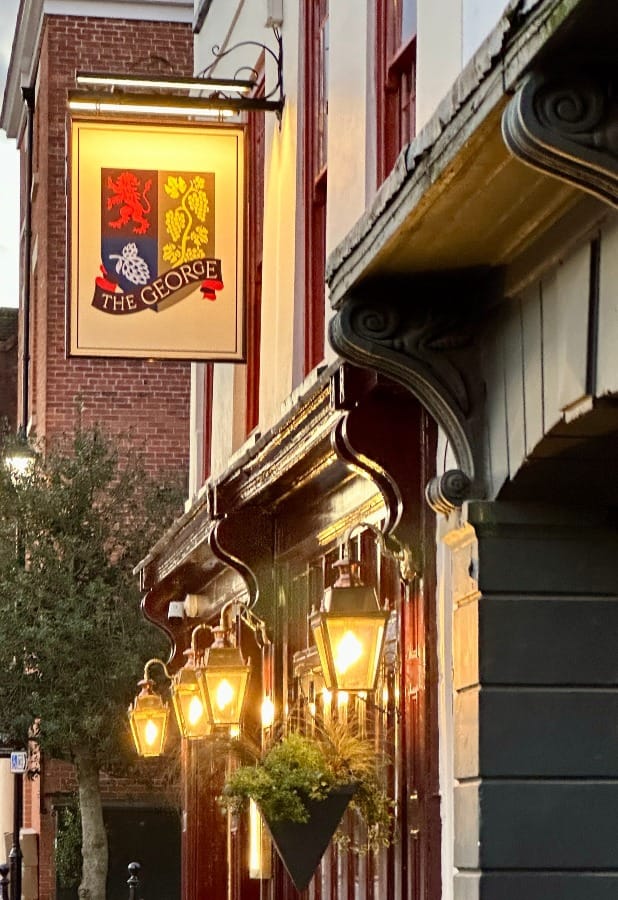
In that respect, I’m reminded of some words by John Warland, founder of Liquid History Tours in London:
“…it’s the enduring senses of community and celebration of humanity embodied by the public house that rings out loud and clear. The pub is much more than the sum of these parts. It’s often the very heart of community – raising funds for its patrons, providing ad-lib counselling services, and offering a sociable antidote to the prevalent plague of loneliness.”
In many respects, pubs share something of the same spirit as churches – sometimes even rooted in the monastic tradition of making ale. Both hold the residue of countless human gatherings. Their walls have absorbed laughter, sorrow, gossip, confession. Each pint poured or candle lit becomes part of a shared ritual – gestures that reaffirm belonging in a world that too often pulls us apart. Like churches, many pubs are layered with history: stones and timbers reused, signs repainted, rooms repurposed. They are palimpsests of community life, where generations have left fingerprints of warmth and intent. Perhaps that’s why, when loneliness presses in, I find myself drawn towards them. They offer not salvation, but solace.
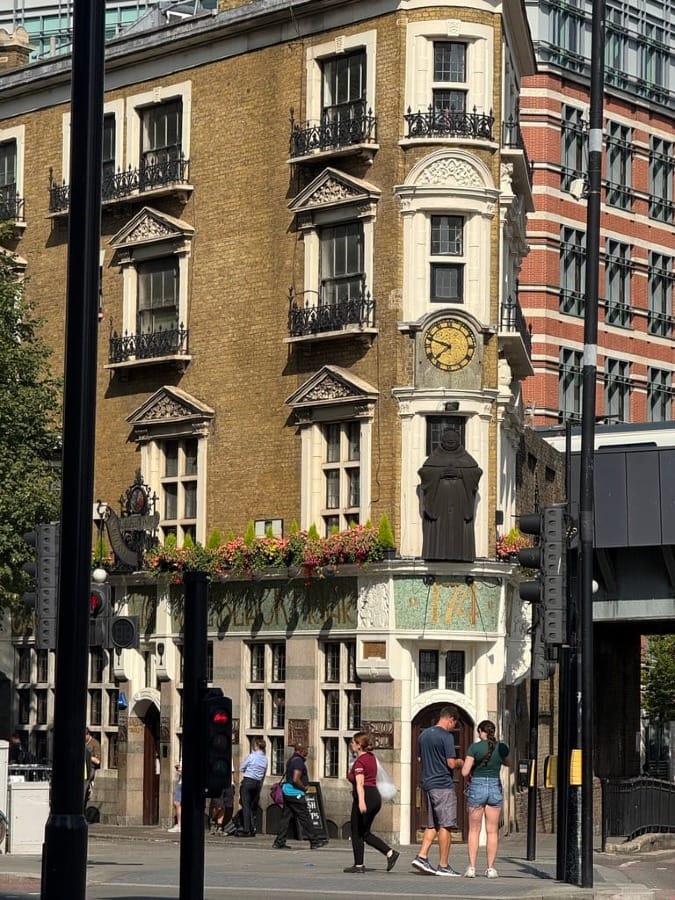
I’m now sitting within The Black Friar on Queen Victoria Street in London. The light is low, caught and mellowed by alabaster and copper. Every surface feels touched by human hand – carved, engraved, or inlaid with fragments of meaning. Much of the decoration is repoussé work, which is the art of shaping metal (often copper) by pressing from behind so that the image rises forward. It has always struck me as a kind of alchemy – a way of shaping something from nothing, of turning raw material into expressions of joy. Every mark from the unseen side brings a form to life; a reminder that what endures is made not by force, but by the million-petalled flower of being alive – hundreds of little touches, micro-adjustments.
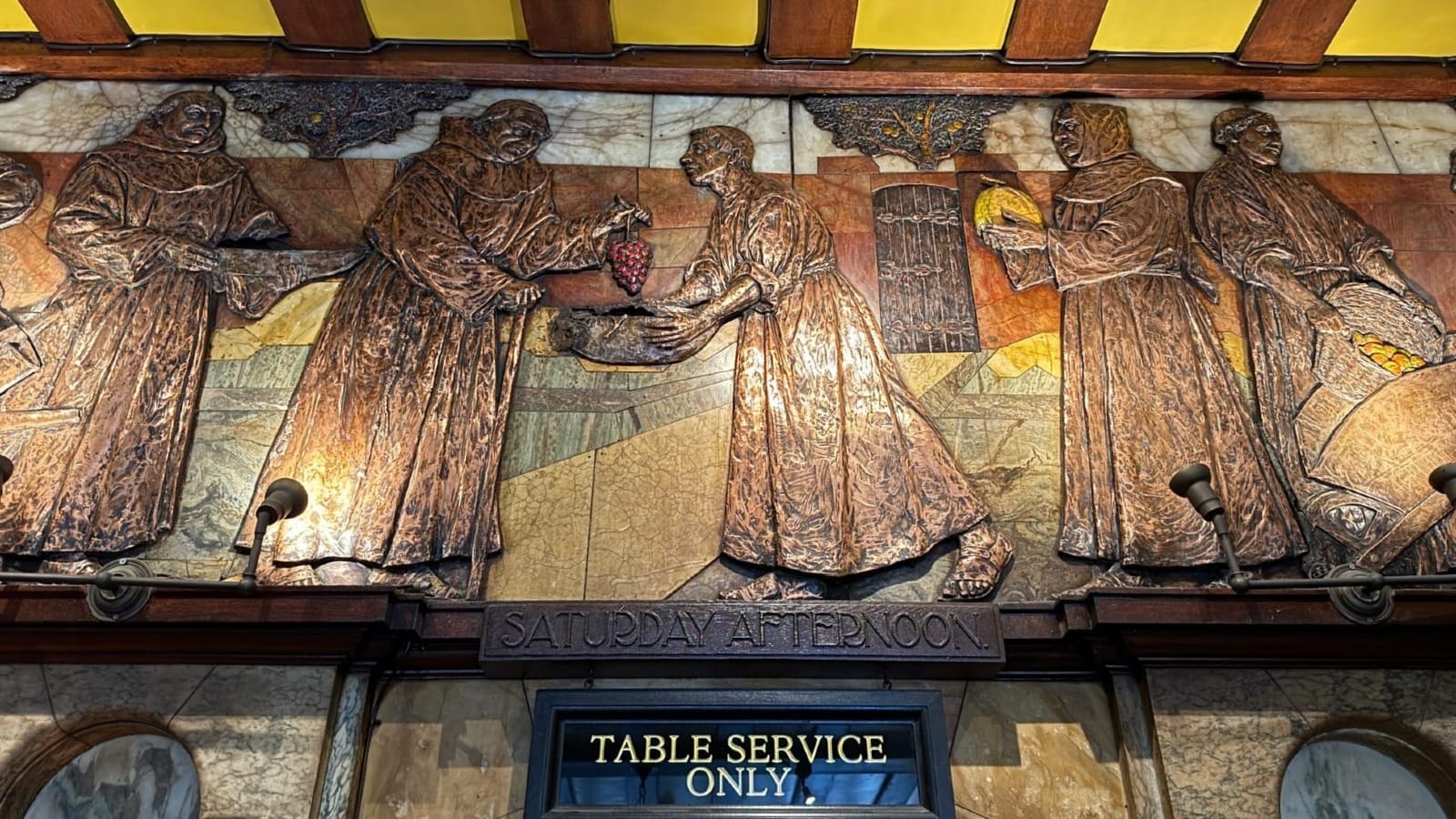
Here, every surface seems to be decorated. Cherubic friars gather in sculpted panels, their faces softened by time, offering up small moralities – “Don’t advertise, tell a gossip,” “Contentment surpasses riches.” Around them, Edwardian whimsy runs riot: friars brewing, feasting, harvesting pumpkins for Saturday Afternoon, and gathering grapes for Tomorrow will be Friday. These inscriptions are more than decoration – they’re playful reminders that human beings, even in devotion, are capable of humour and joy. Around me, the décor glows with a warmth that feels earned, as if polished by a century of laughter and conversation. The vaulted ceiling, the mother-of-pearl, the smell of ale and brass polish – all merge into a kind of secular liturgy.
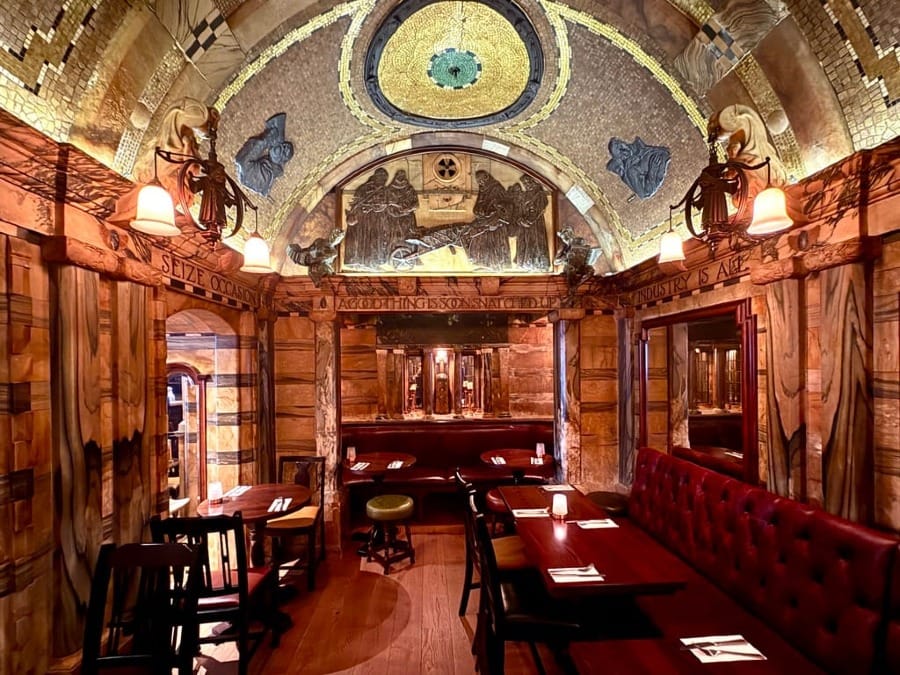
About an hour after resting within its honeyed walls, I step back into the city. The amber light spilling from the pub windows catches on the vast glass monoliths of London – a fleeting reflection that feels like a small act of resistance against the machinery of modern life. Places like this remind me that what truly lasts isn’t engineered or cast upon us with words, acts or slogans – it’s made by hand, through care and conversation, and sung into being across generations. From churches to pubs, from carvings to copper, our architecture of belonging is repoussé in spirit – pressed from within by countless human gestures, each one shaping the soul of the place.
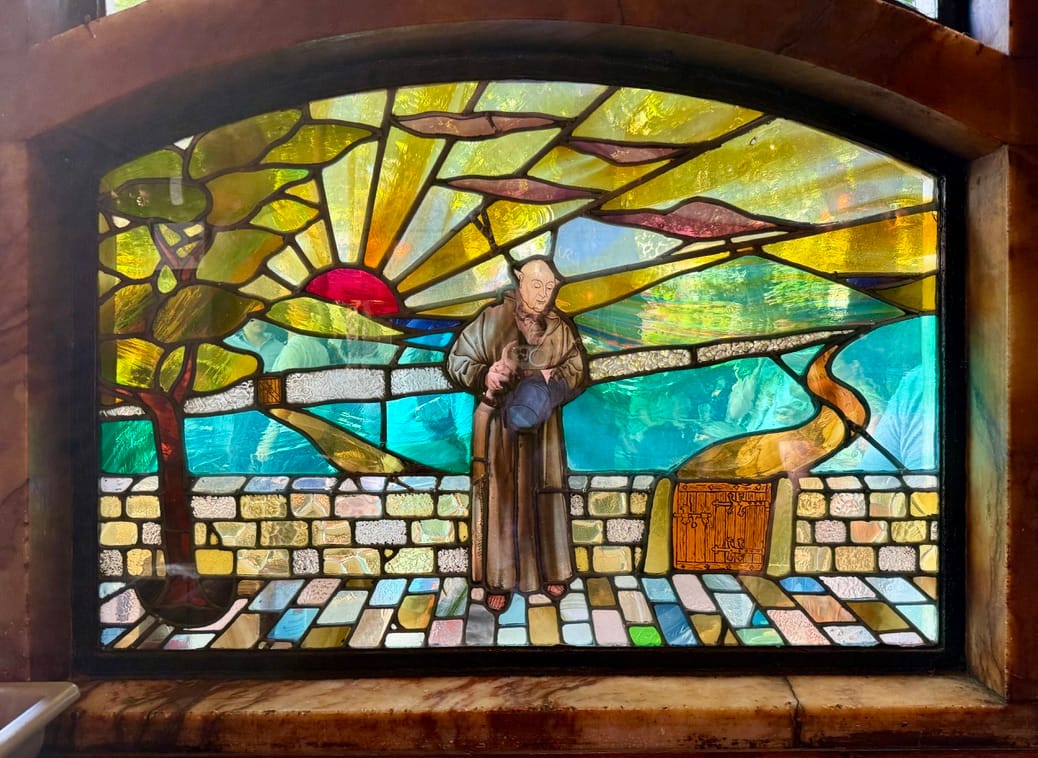
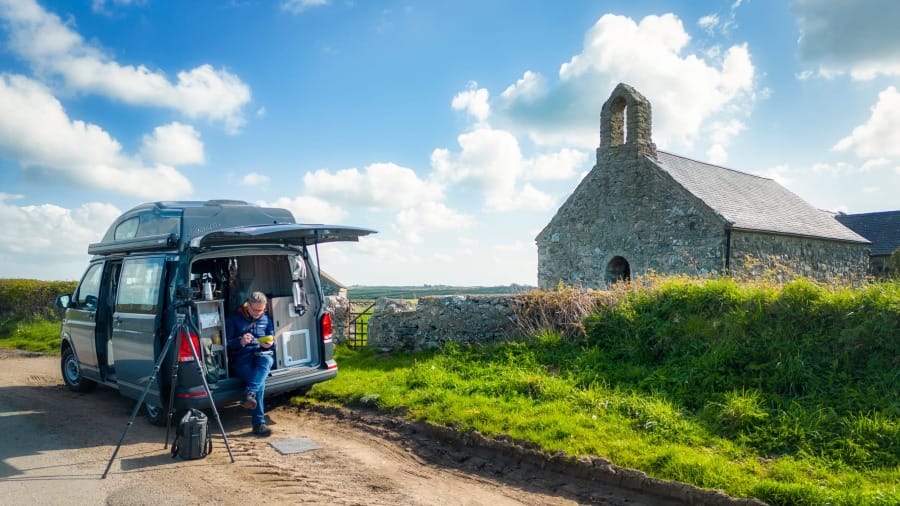
🔆 Does the Digest light up your Friday?
Can you help support me and keep Woody on the road?
Support The DigestAndy Marshall's Most Delectable Public Houses
I hope that wandering through this collection of the most characterful pubs across these isles brings a flicker of that first-step feeling - the hush before the door closes behind you, the glow of the hearth on your face, and the easy warmth of shared laughter rising from the bar.
The Map
The Black Friar, London
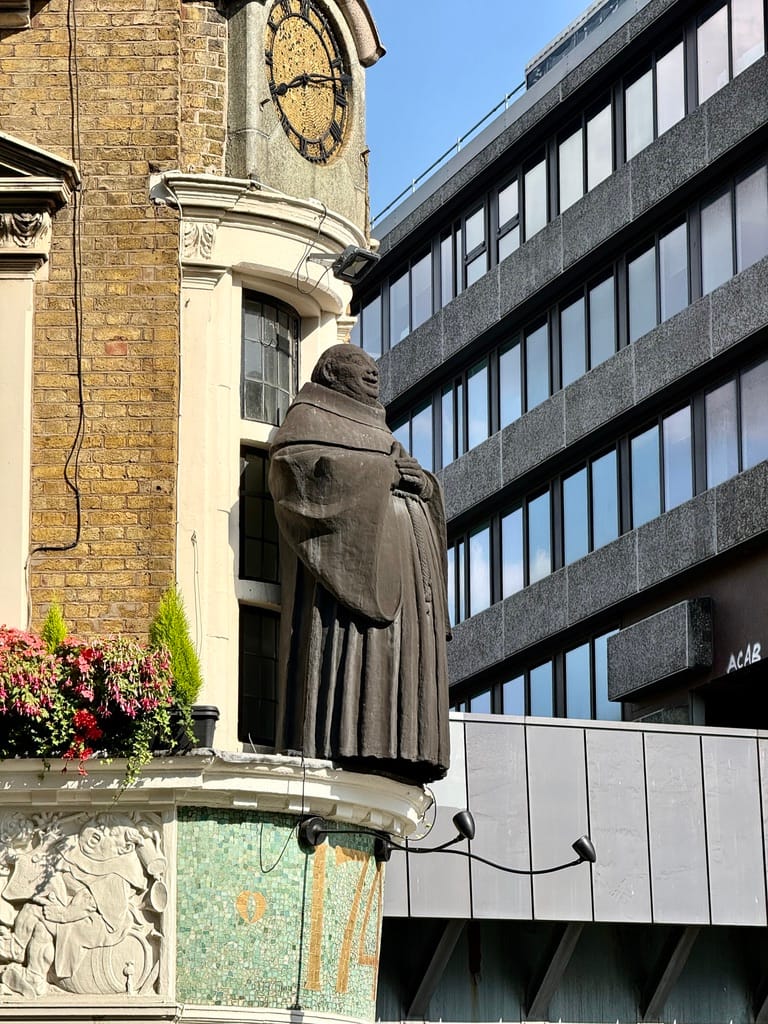
The Black Friar in London, built in 1875 and remodelled around 1905 by architect Herbert Fuller-Clark, is a masterpiece of the Art Nouveau milieu.
The exterior reminds me of the Flatiron Building in New York - that same bold, triangular thrust into the street, as if the pub itself were cutting through the fast stream of modernity, holding its ground while the city rushes by.
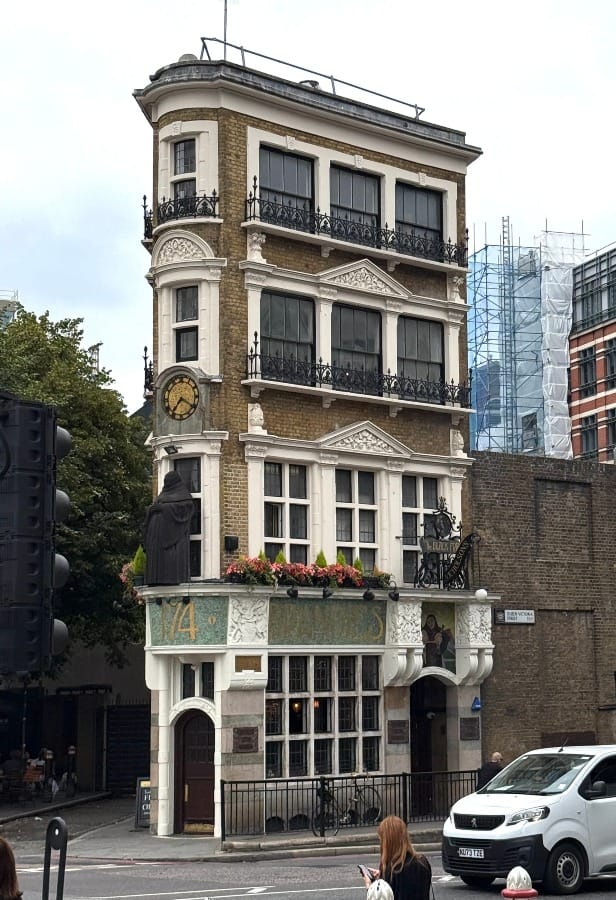
Whilst a merry monk leans from the corner of the building, around the bend the façade bursts into delight - golden mosaics gleam with the word Brandies, and brass signage, its lettering curled and lyrical, directs the passer-by toward the saloon bar.
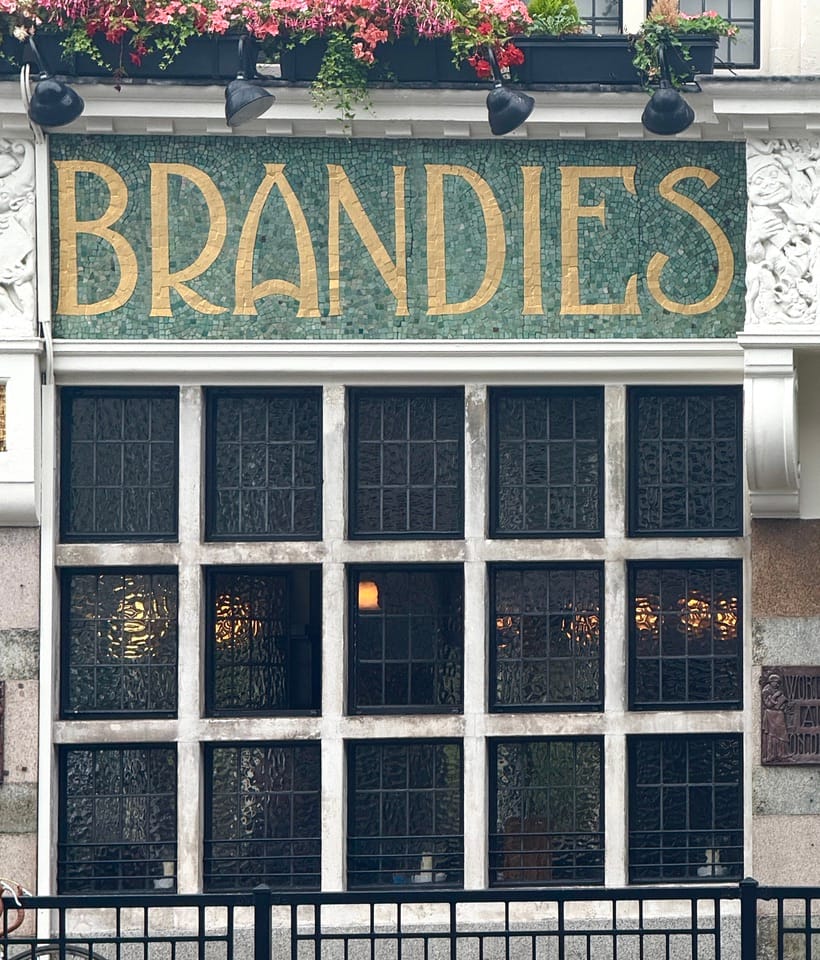
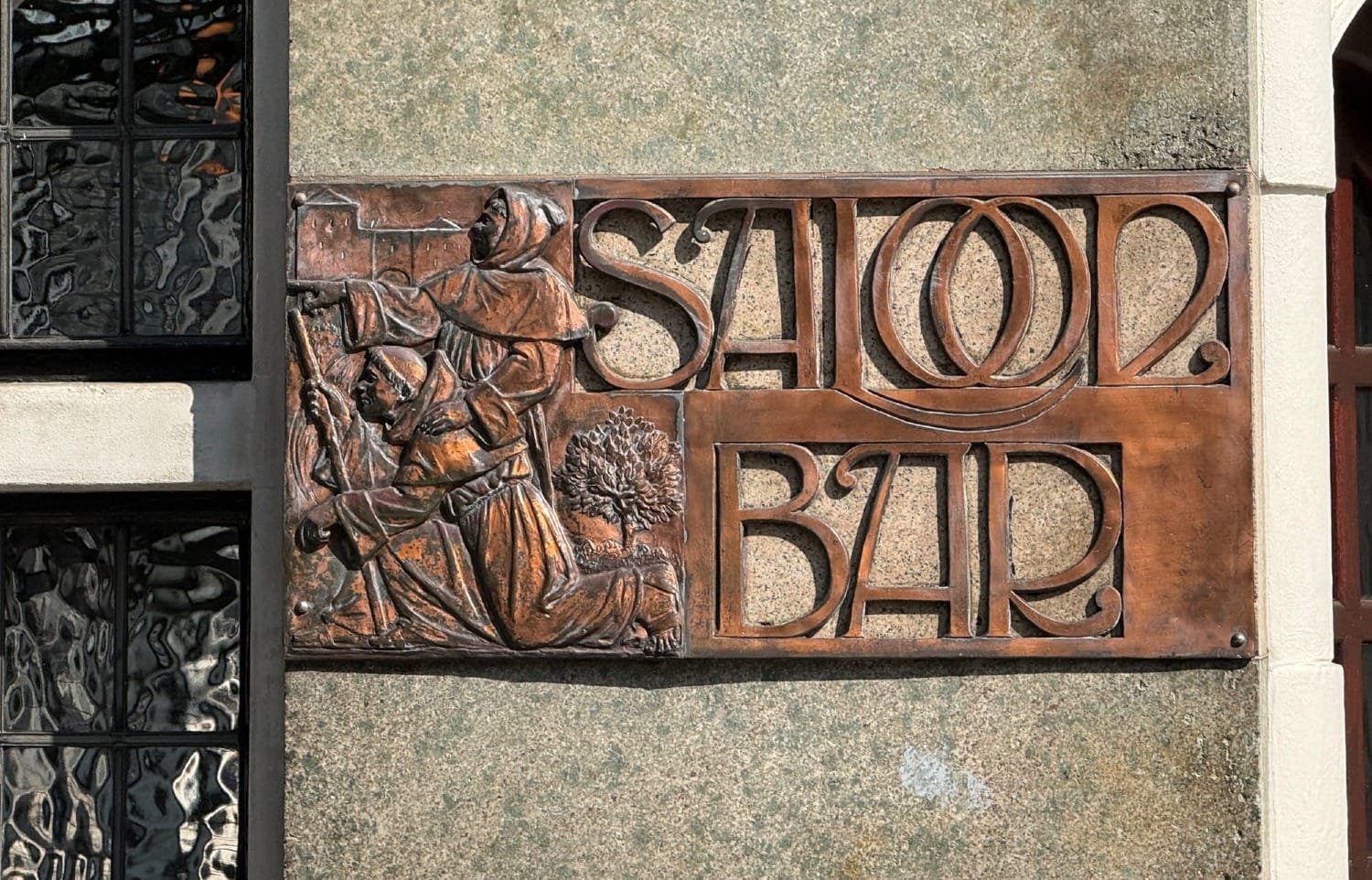
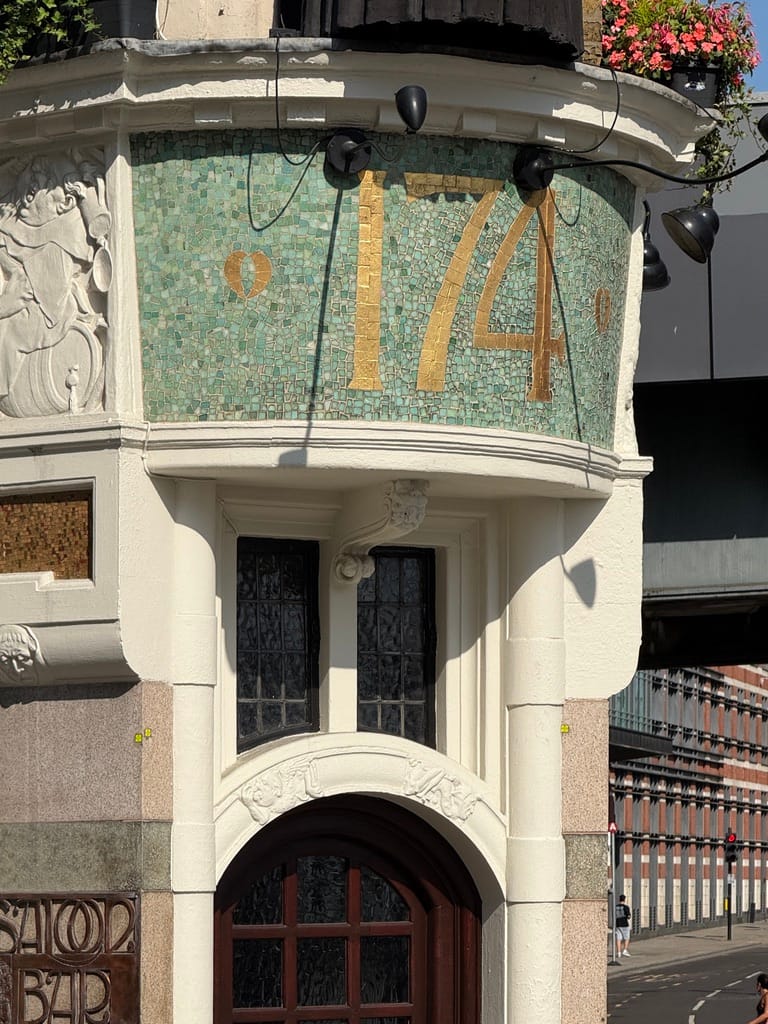
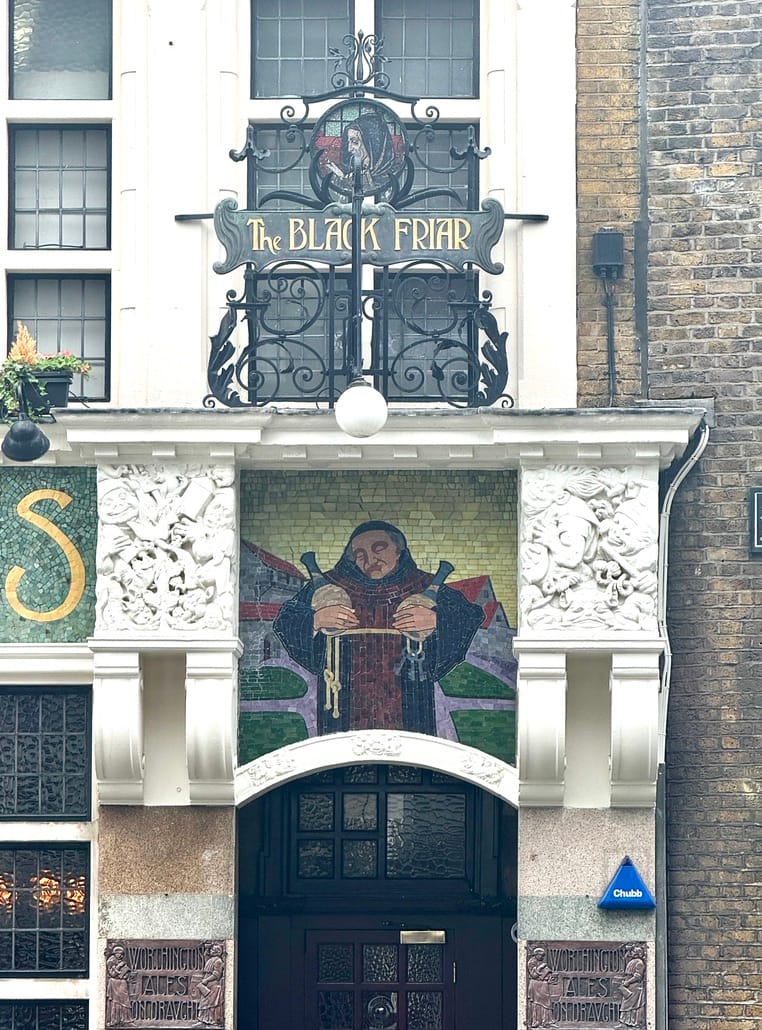
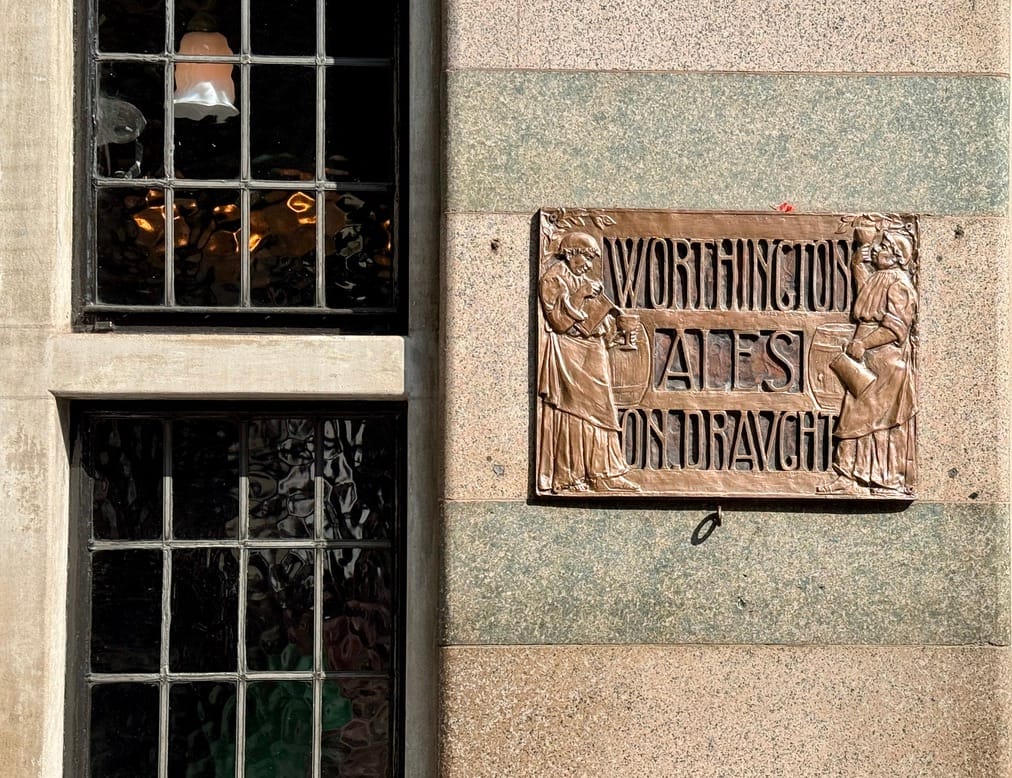
Its exuberant copper repoussé panels were designed by sculptor Henry Poole RA and executed with metalworker Frederick T. Callcott, uniting skill and imagination in true Arts and Crafts spirit. Every surface - bronze, alabaster, mosaic, and marble - bears the mark of care and humour: cherubic friars brewing, feasting, and laughing beneath tongue-in-cheek mottos. A living pub and total artwork, the Black Friar celebrates fellowship, craftsmanship, and the handmade poetry of the Edwardian age.
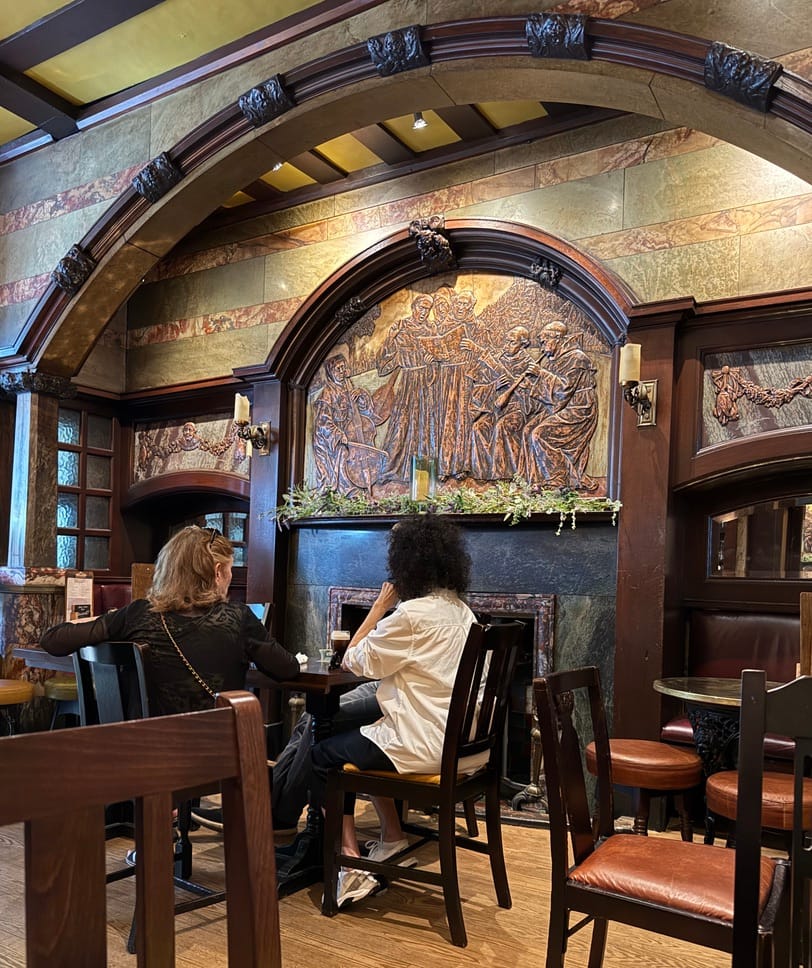
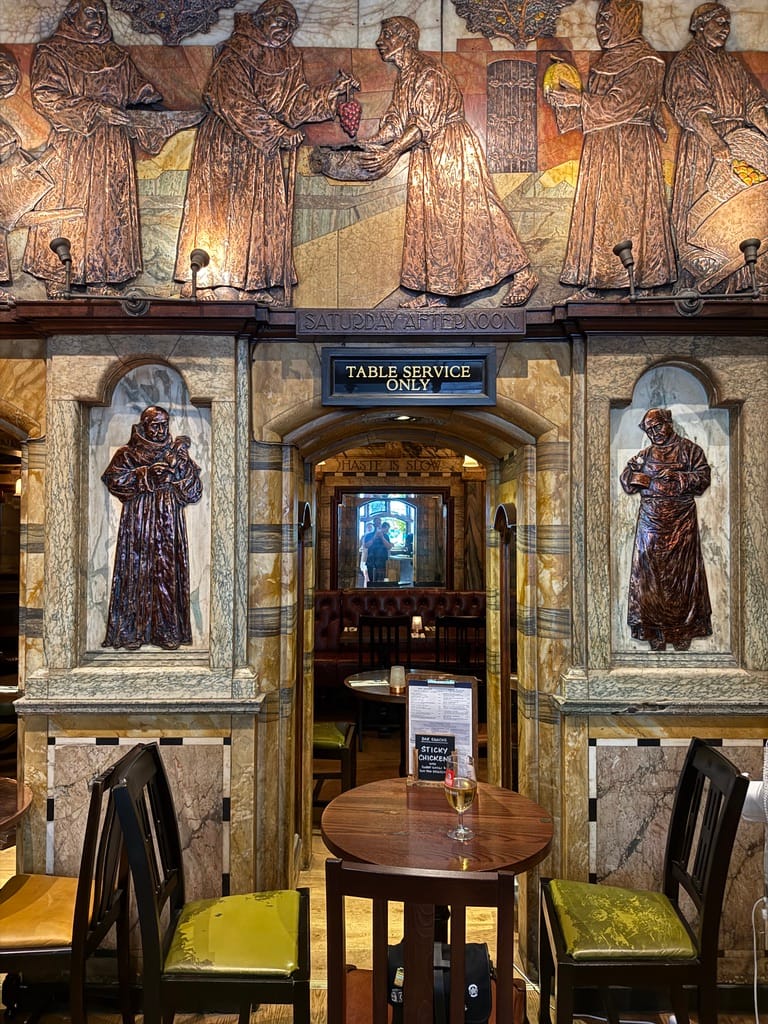
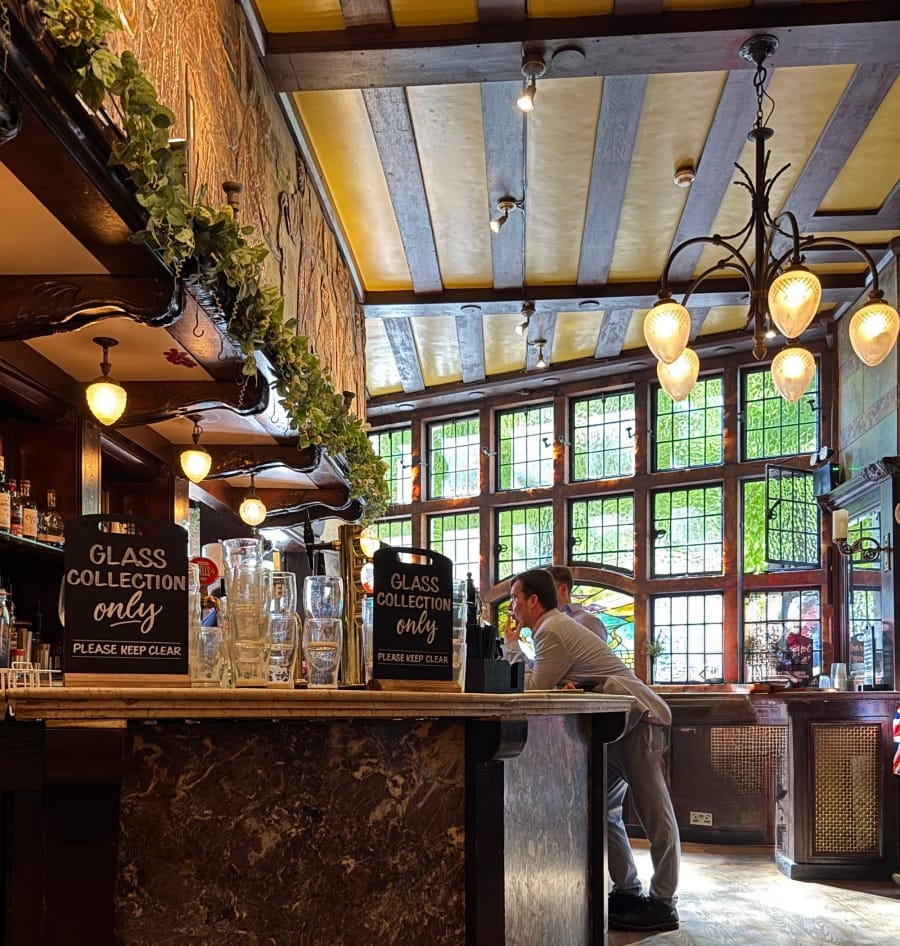
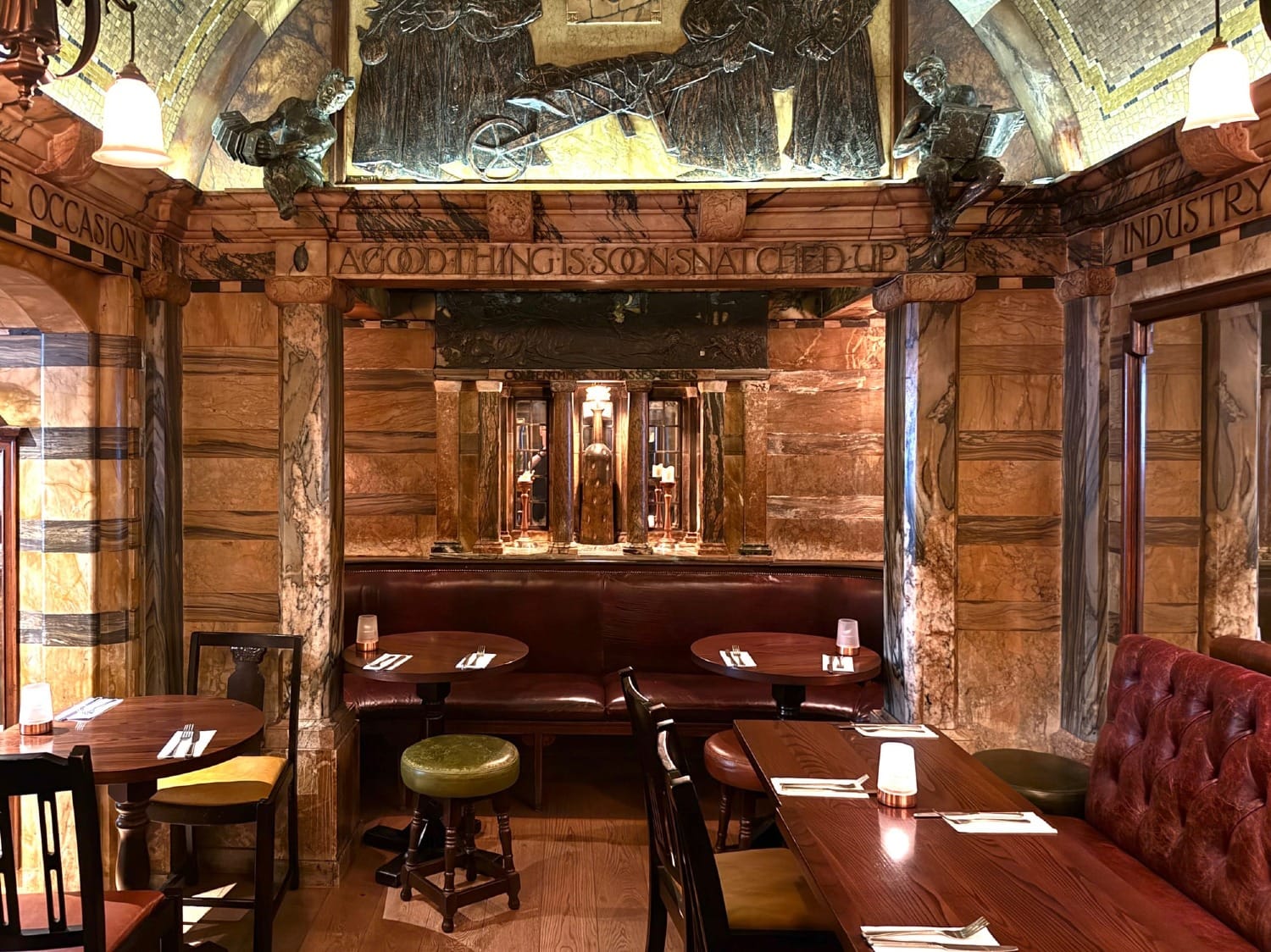
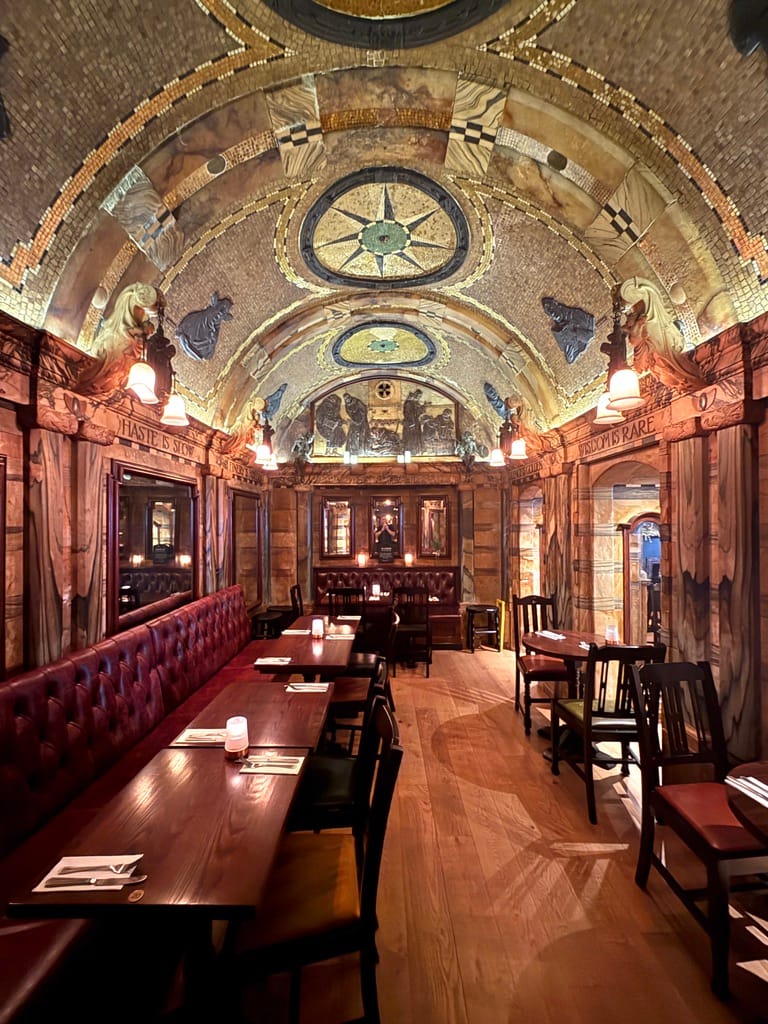
The White Horse (Nellie's), Beverley, Yorkshire
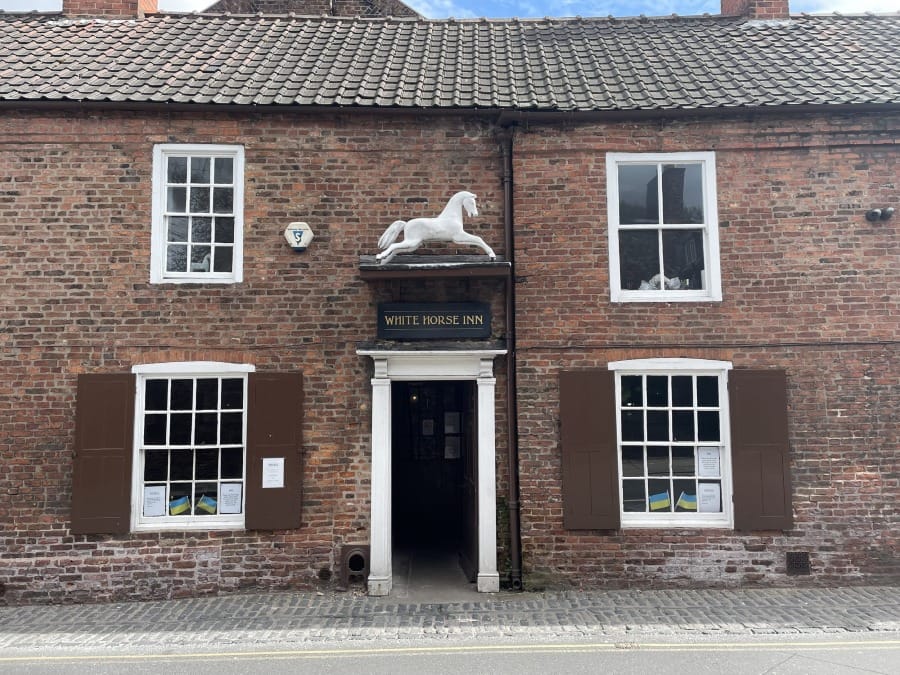
This is my favourite pub of all time, I've met countless people who have become long term friends here, I've sat sketching here, and kick started many of my digests here - all under the glow of gas-light.
I have written about it in my draft book A Singular Point of Light (which is being serialised for Members):
"A visit to the hostelry involves an ocular passage of lights, a visual photosynthesis of surface plane and detail which is completely reliant upon vaguely subdued pockets of light. Light levels have not been standardised or subject to European norms."
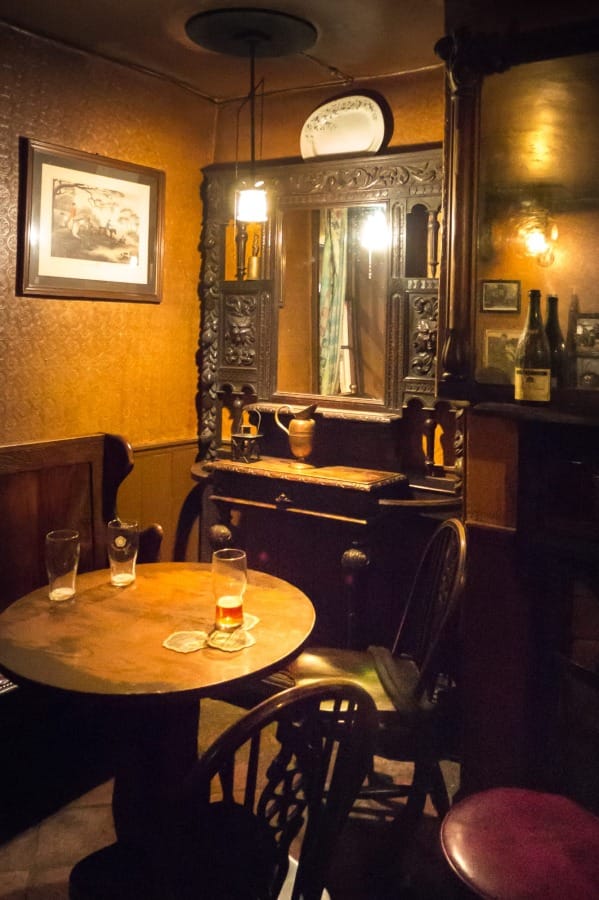
The building has grown organically over hundreds of years culminating in a Dickensian warren of corridors and cosy fire-lit rooms. Entering Nellies involves stepping down into post medieval floor levels mixed with a pupil dilating mellowed light.
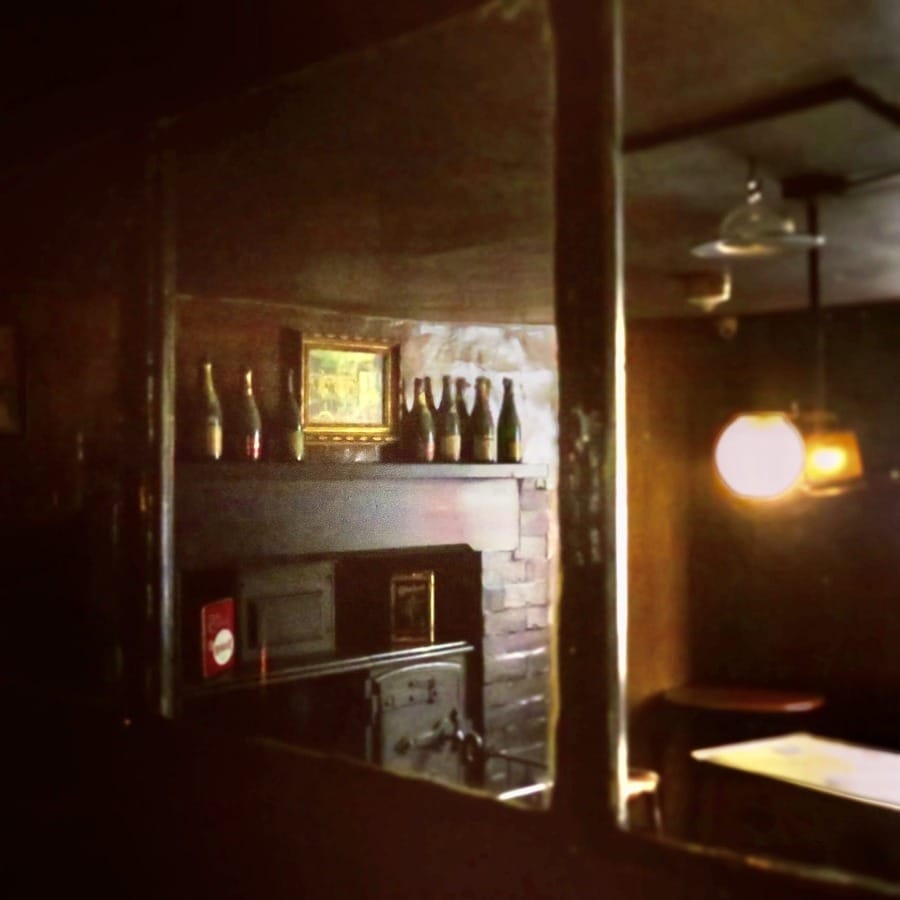
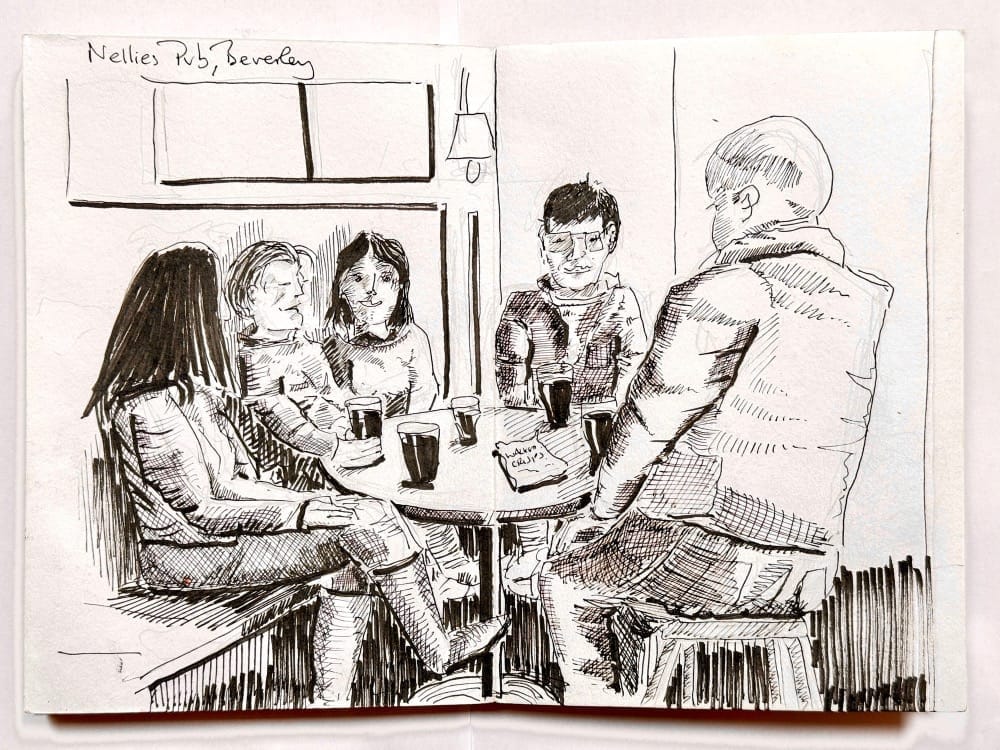
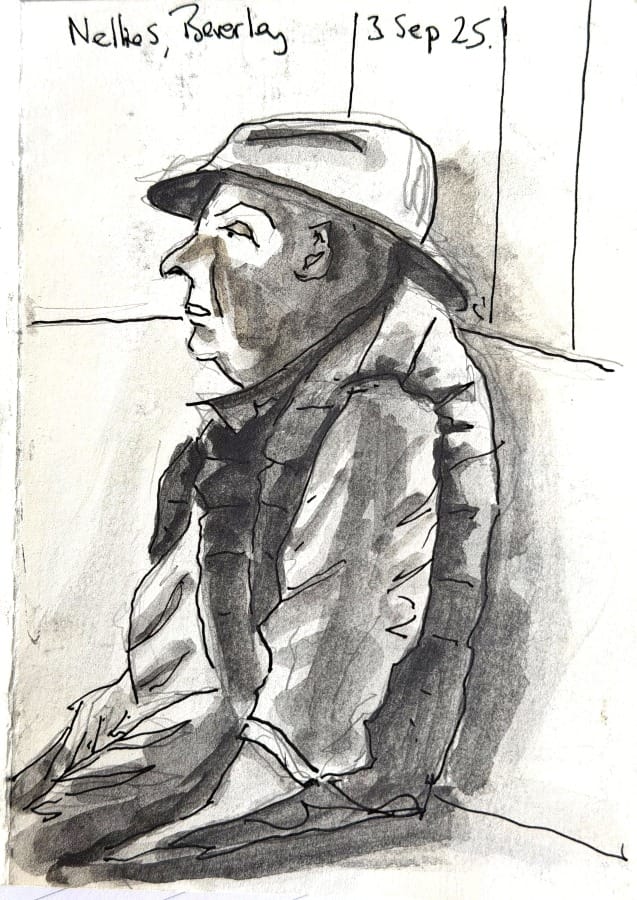
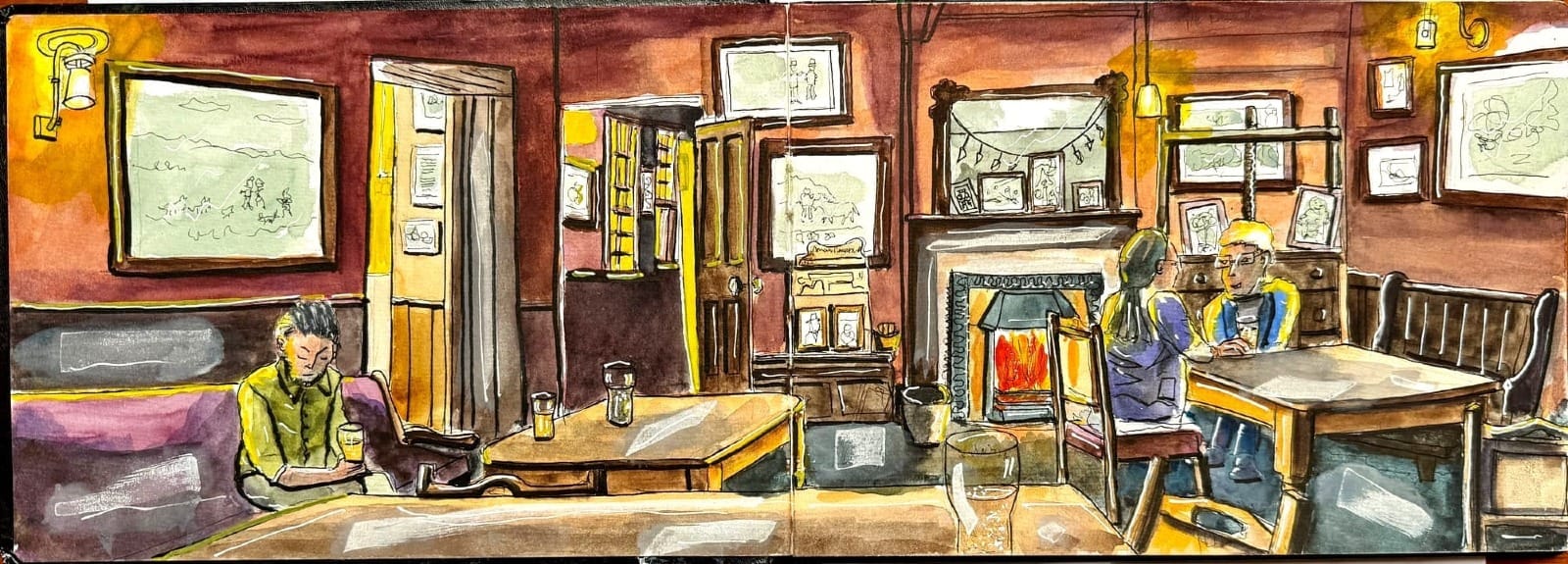
The Scran and Scallie, Stockbridge, Edinburgh.
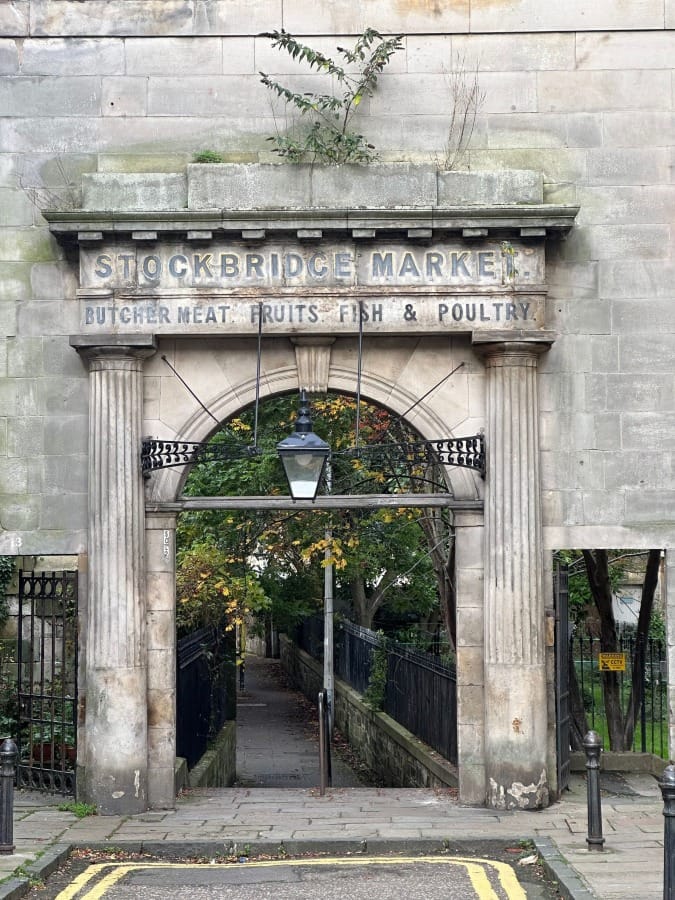
More a bar and restaurant than a pub - but I'm including it here - because I found respite and bonhomie with the staff whilst sat at the bar. It's such a welcoming place.
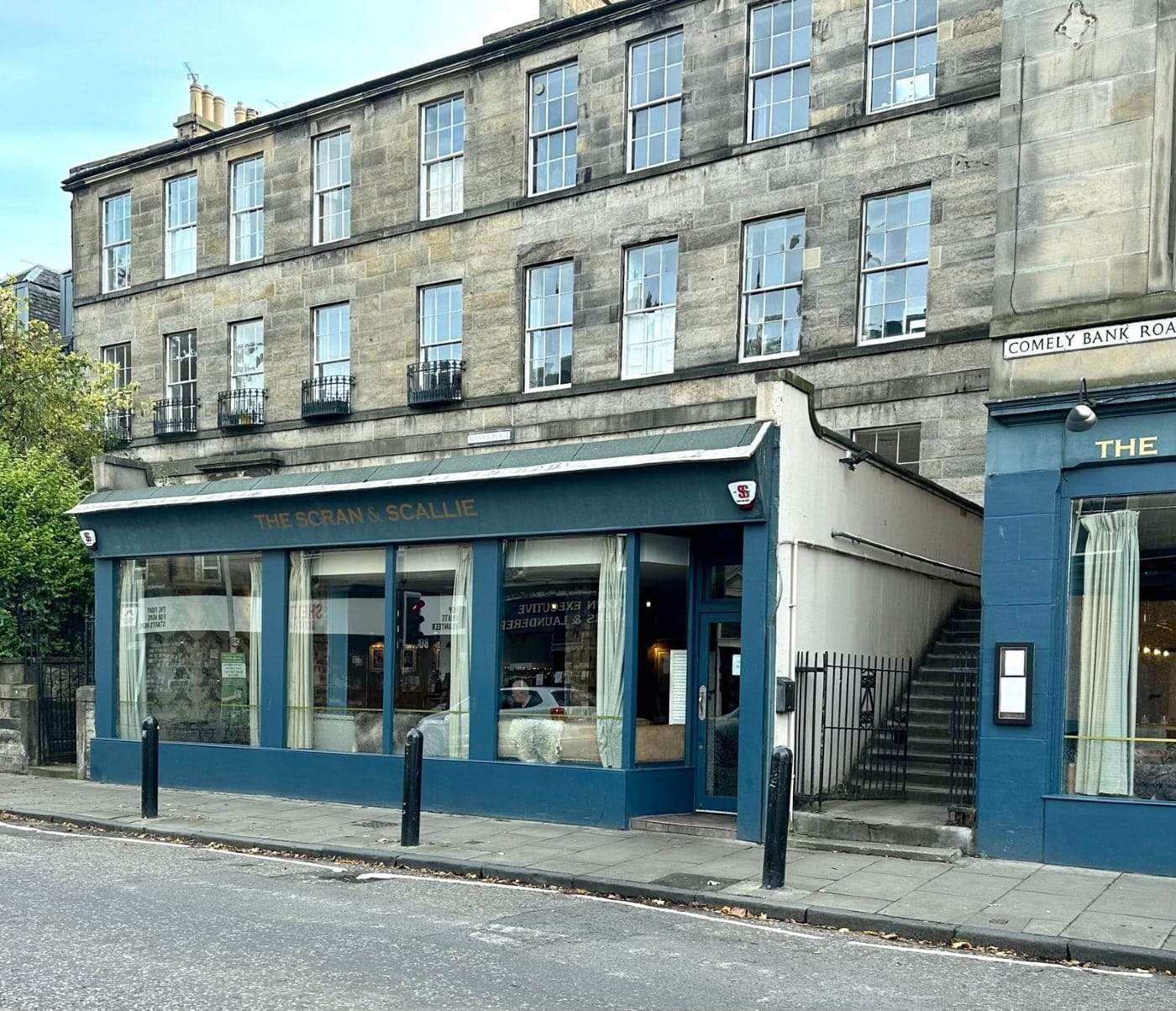
Sometimes, when I'm on my own and feel a bit daunted by a bustling eatery, I walk in and ask them if they have room for a traveller to have a quick aperitivo - I'm always taken to a quiet spot (usually a great spot for observation of others). People are always accommodating for an aperitivo.
With my aperitivo - came a bowl of home made crisps - rendered and salted. All consumed in a warm bar on Comely Bank Road.
The charm worked perfectly here because they found me a quiet place where I had the full attention of the welcoming staff. Here they gave me a few local insights and told me the best shops to visit in Stockbridge
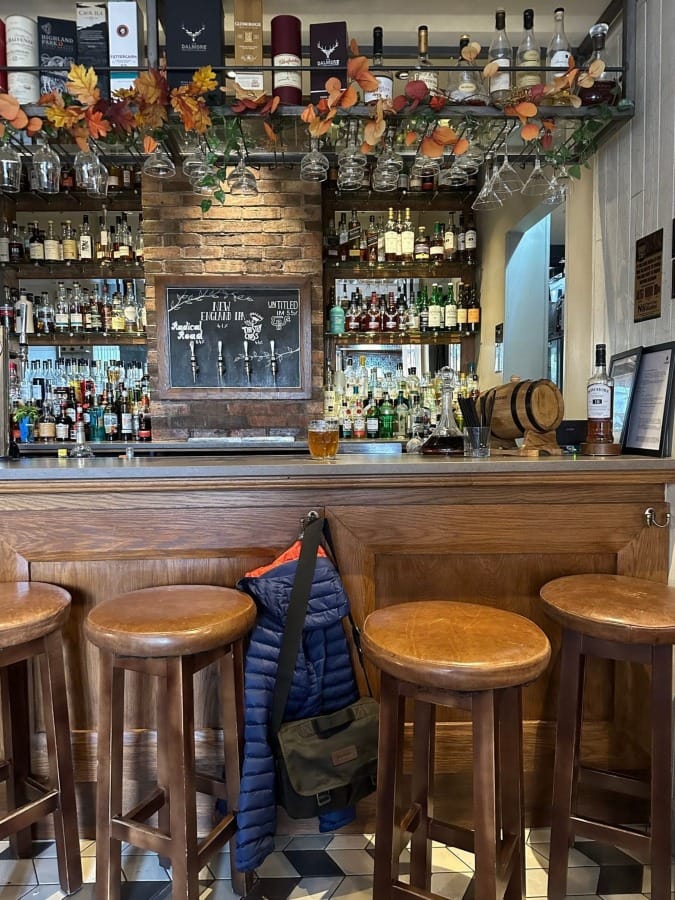
The George Inn, Southwark, London
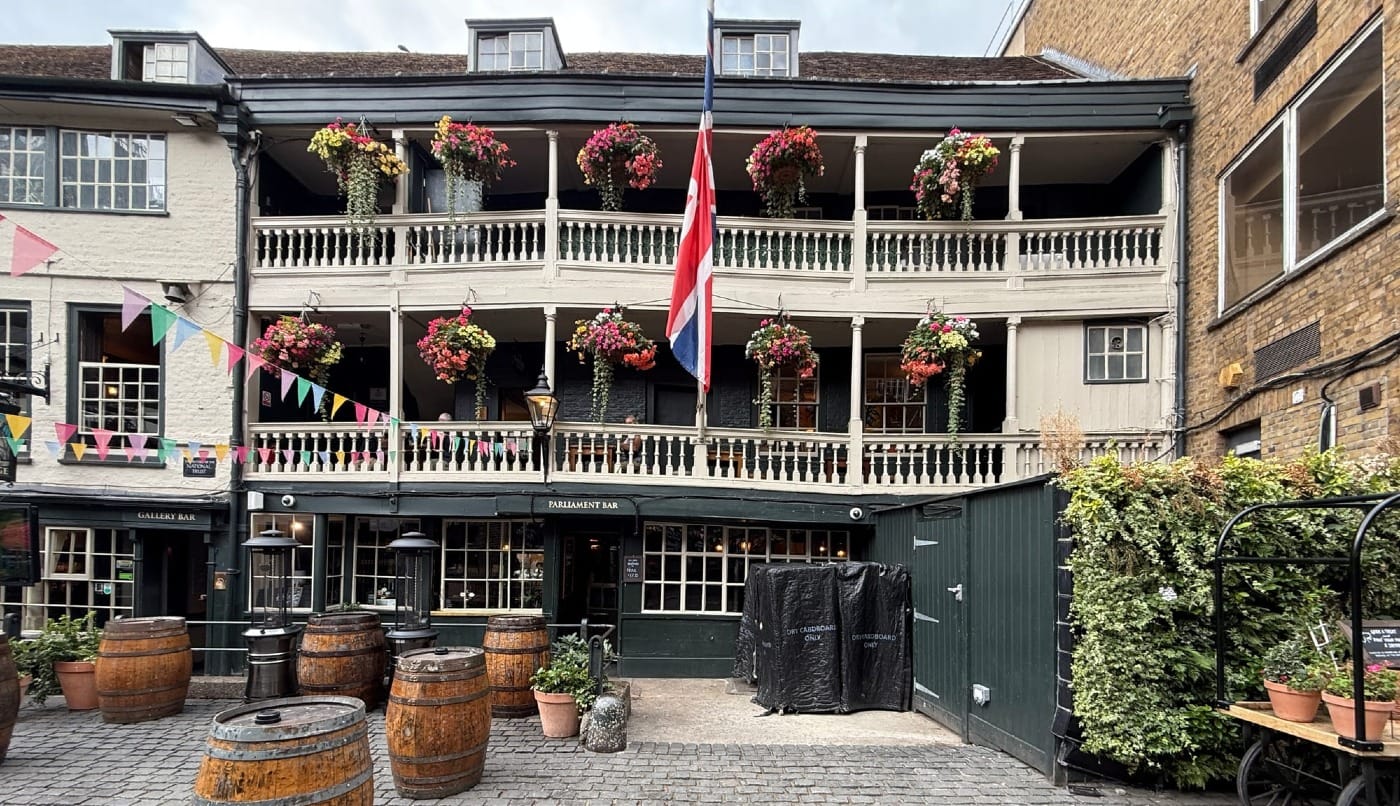
A real hidden gem, the George Inn, Southwark, is the last of London’s galleried inns, its timber galleries once thronged with travellers, merchants and playgoers bound for the nearby theatres.
The only surviving galleried London coaching house. It was rebuilt in 1676 after the Southwark fire. It later welcomed Dickens who refers to it in Little Dorrit.
The George outsurvived its neighbour The Tabard Inn which was the location for Chaucer's start of the Canterbury Tales:
Bifel that in that season on a day,
In Southwerk at the Tabard as I lay
Redy to wenden on my pilgrymage
To Caunterbury with ful devout corage,
At nyght was come into that hostelrye
Wel nyne and twenty in a compaignye
Of sondry folk, by aventure yfalle
In felaweshipe, and pilgrimes were they alle,
That toward Caunterbury wolden ryde;
The chambres and the stables weren wyde,
And well we weren esed atte beste;
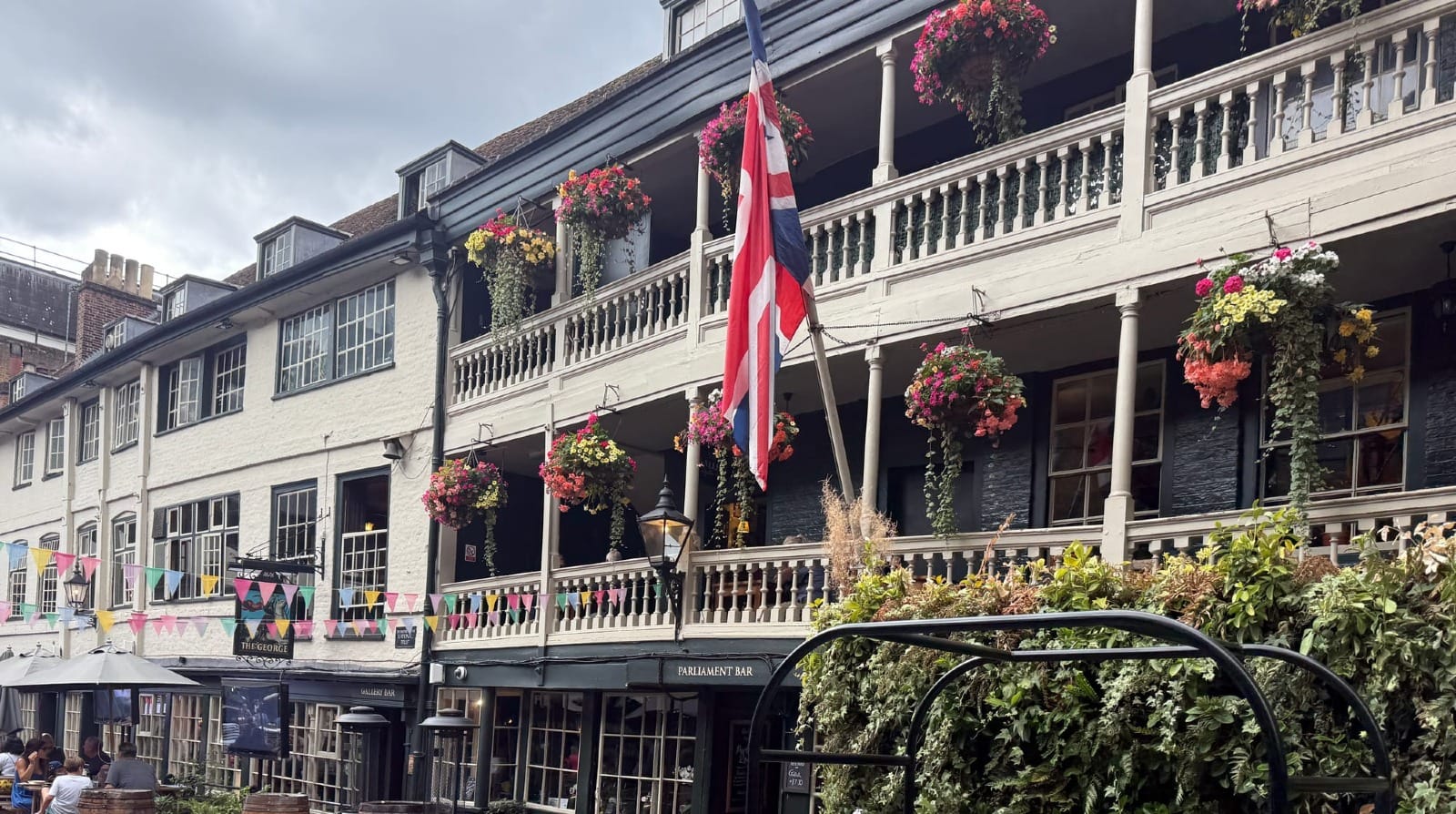
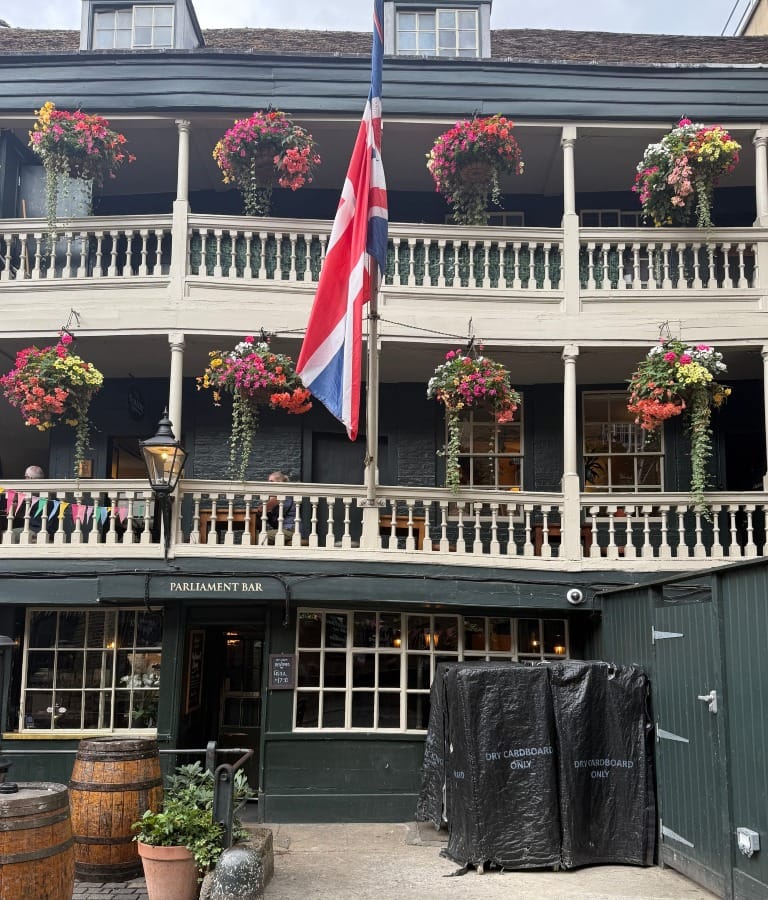
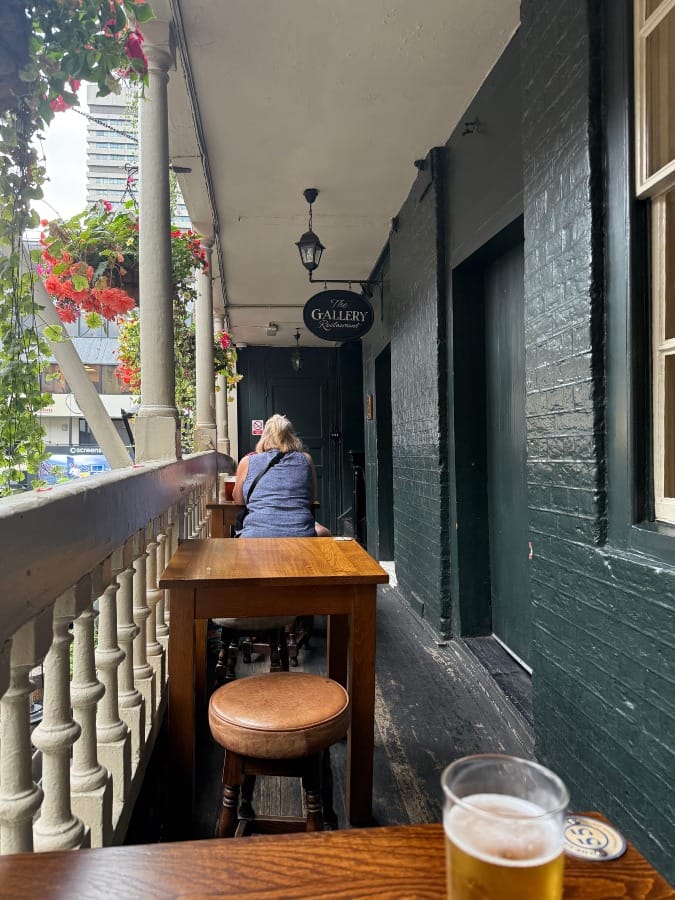
The Three Stags' Heads, Wardlow, Buxton, Derbyshire.
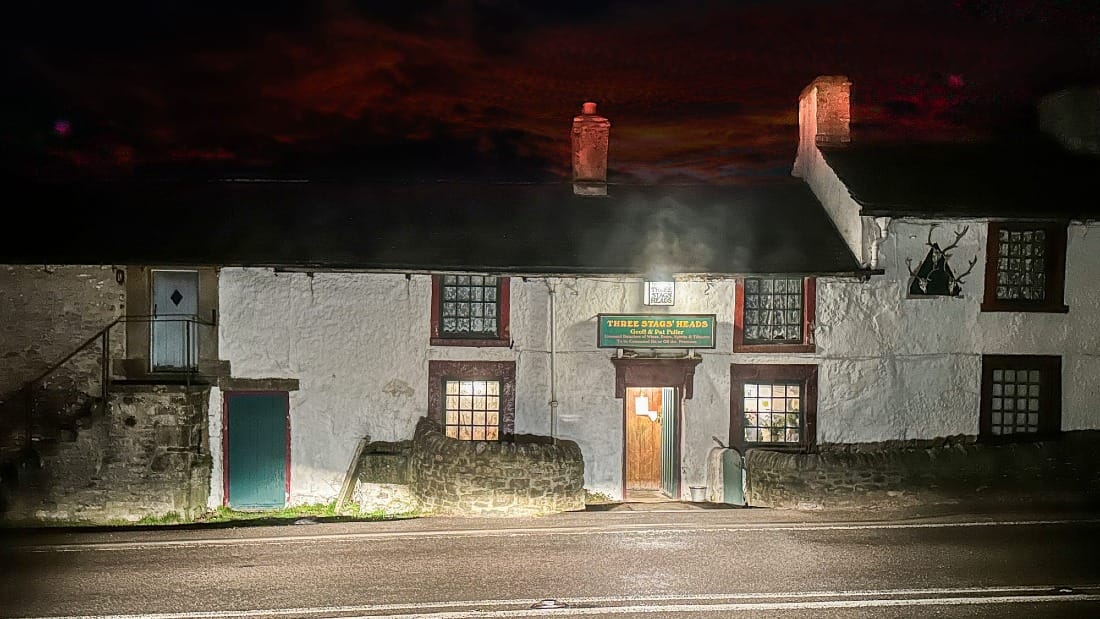
It's always the case that places like the Three Stags' Heads can only be accessed by a dream state of winding lanes; for, beyond the roughcast, this place is the closest anybody can come to time travel.
The interior retains the domestic scale of the mid C18th farmhouse that it once was.
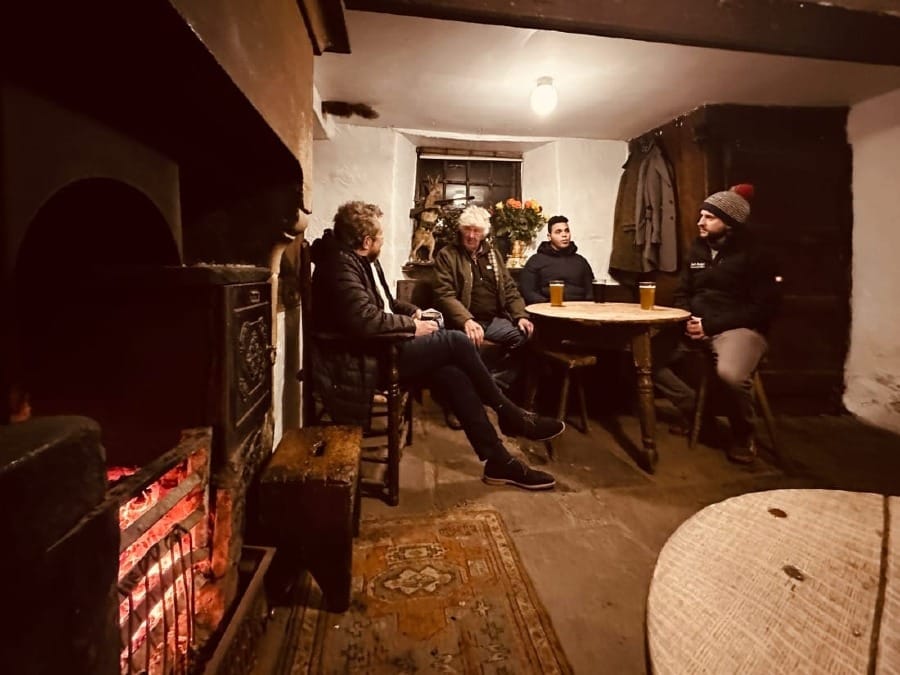
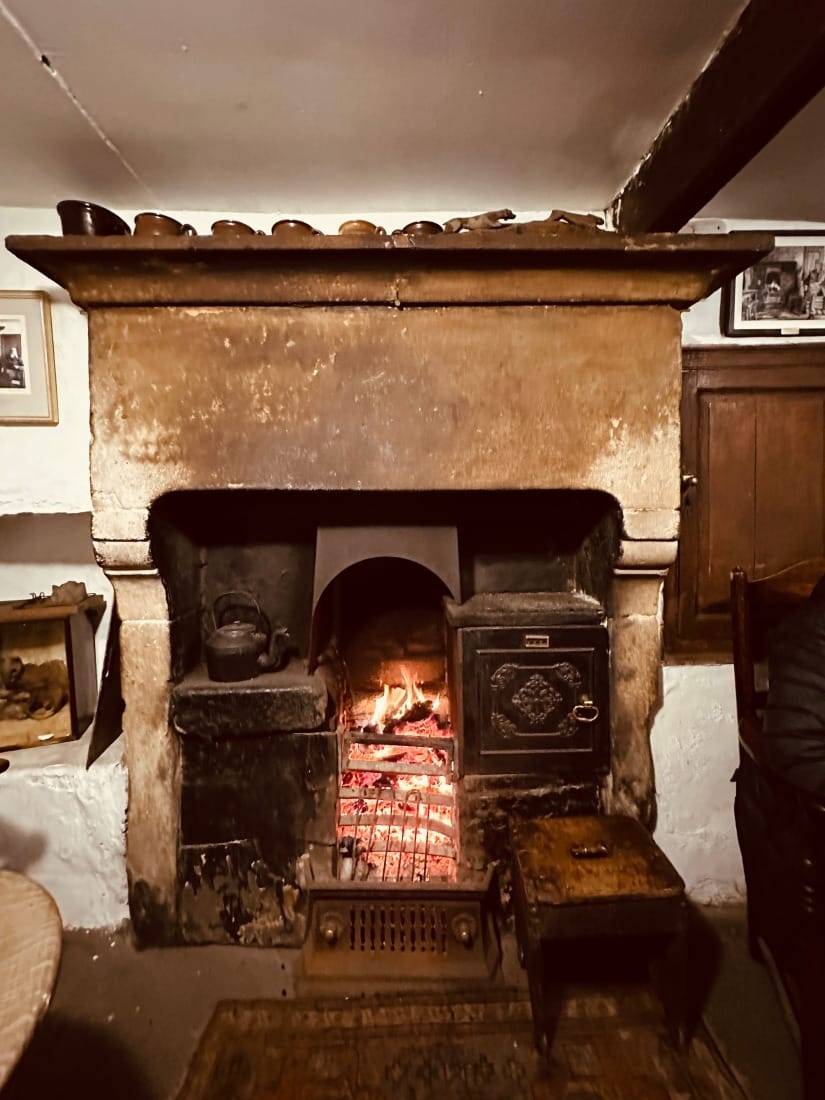
A wonderful photograph on the wall of a previous landlord exudes the atmosphere of the place.
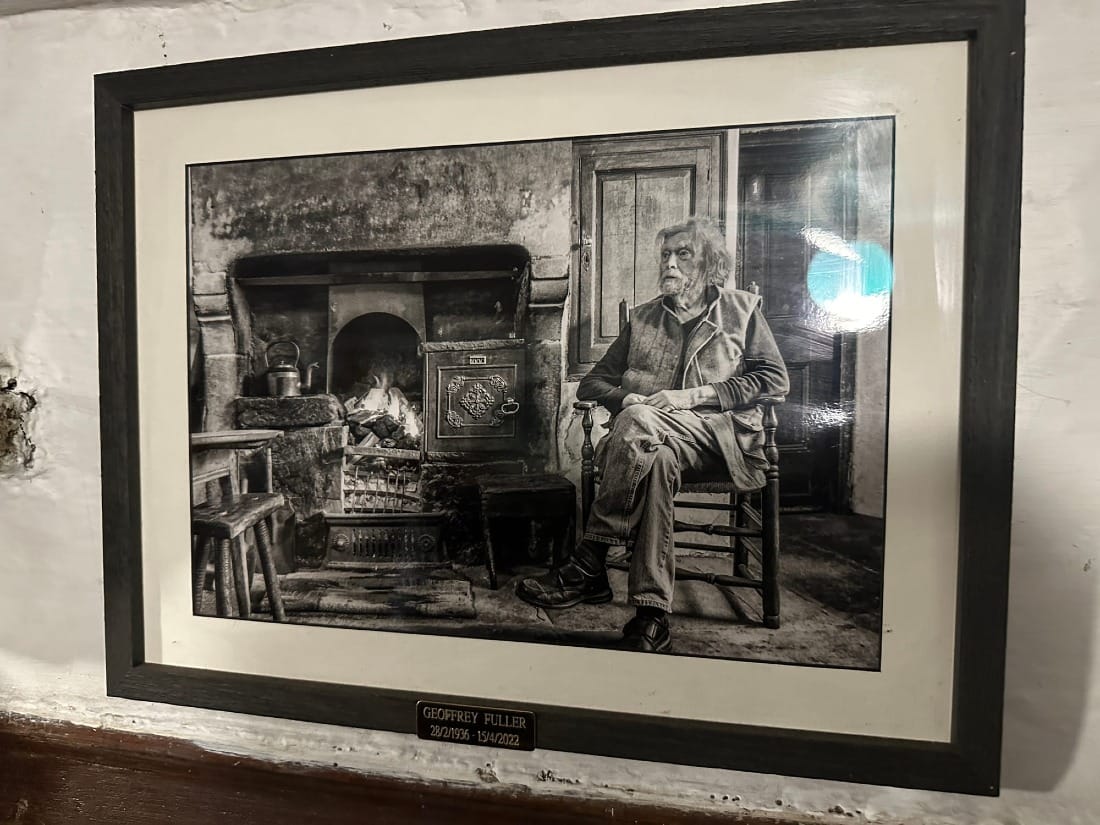
There is a spirit here (other than the one's on tap) - a genius loci that is rare to find other than in the Peaks.
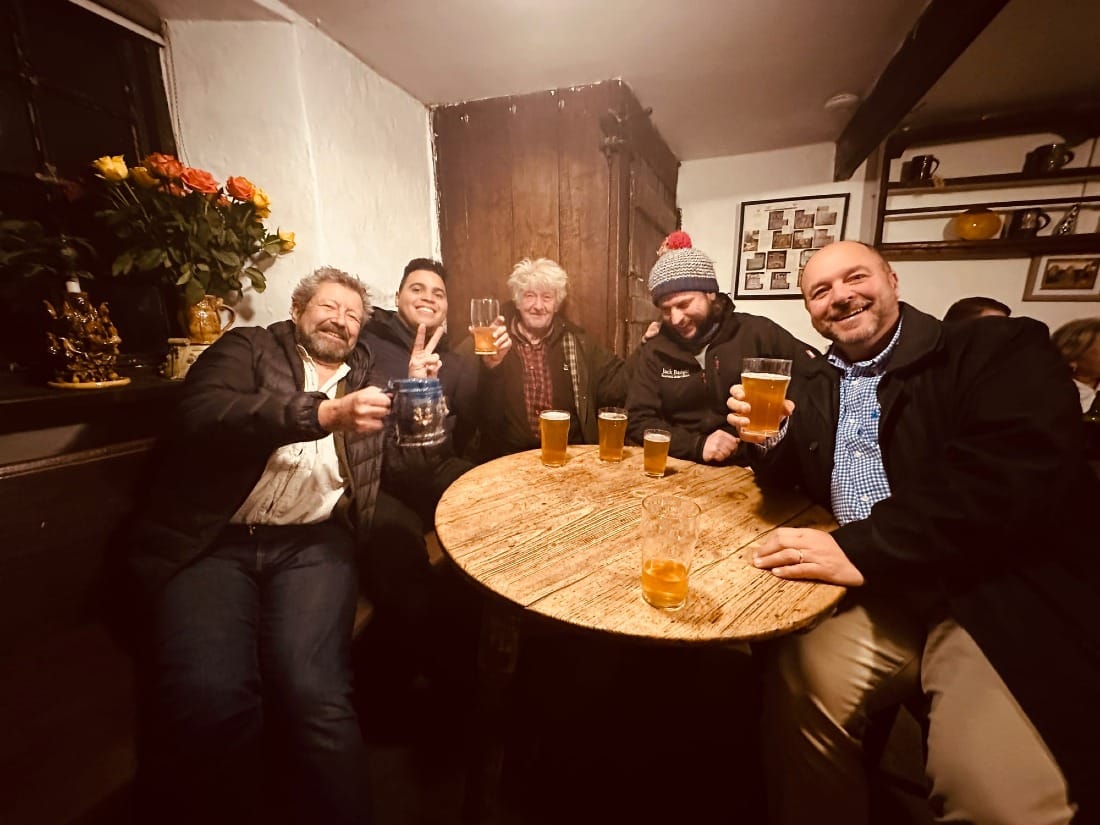
And, of course, we were regaled by a little folk music.
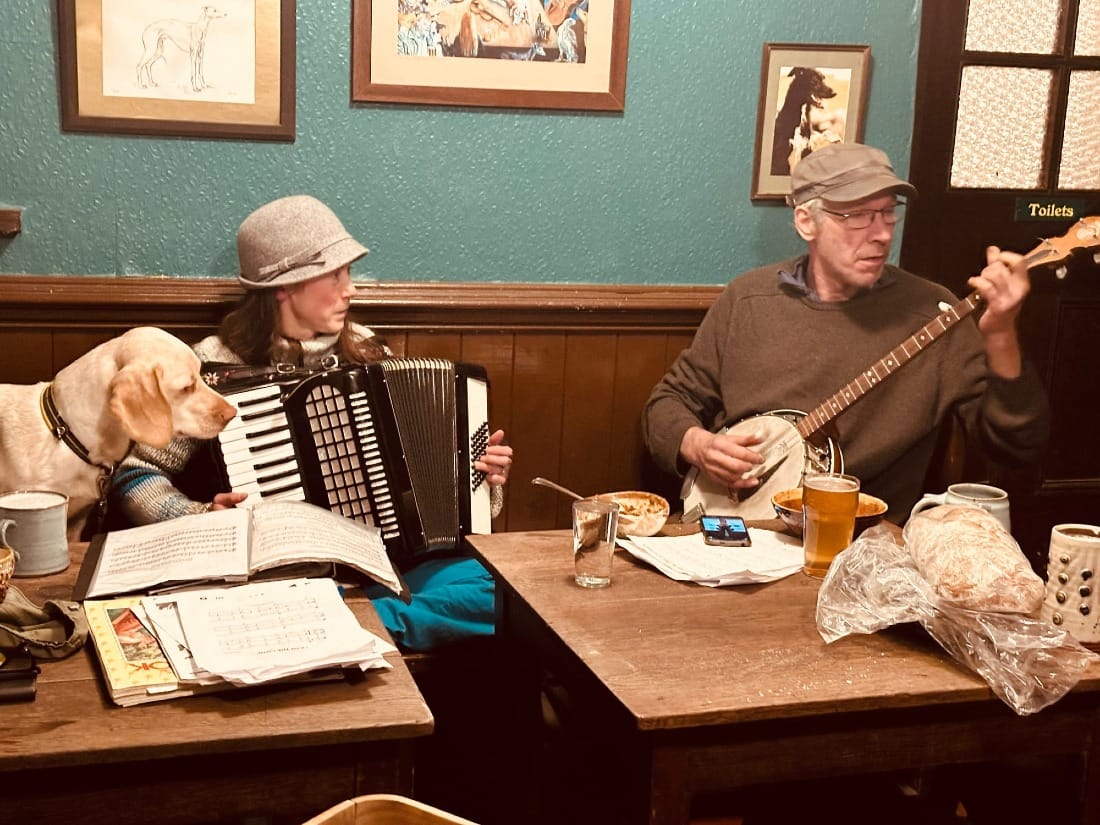
But, perhaps the biggest instigator of the bonhomie in the room was something that was found within the walls when they punched a hole through to create a door.
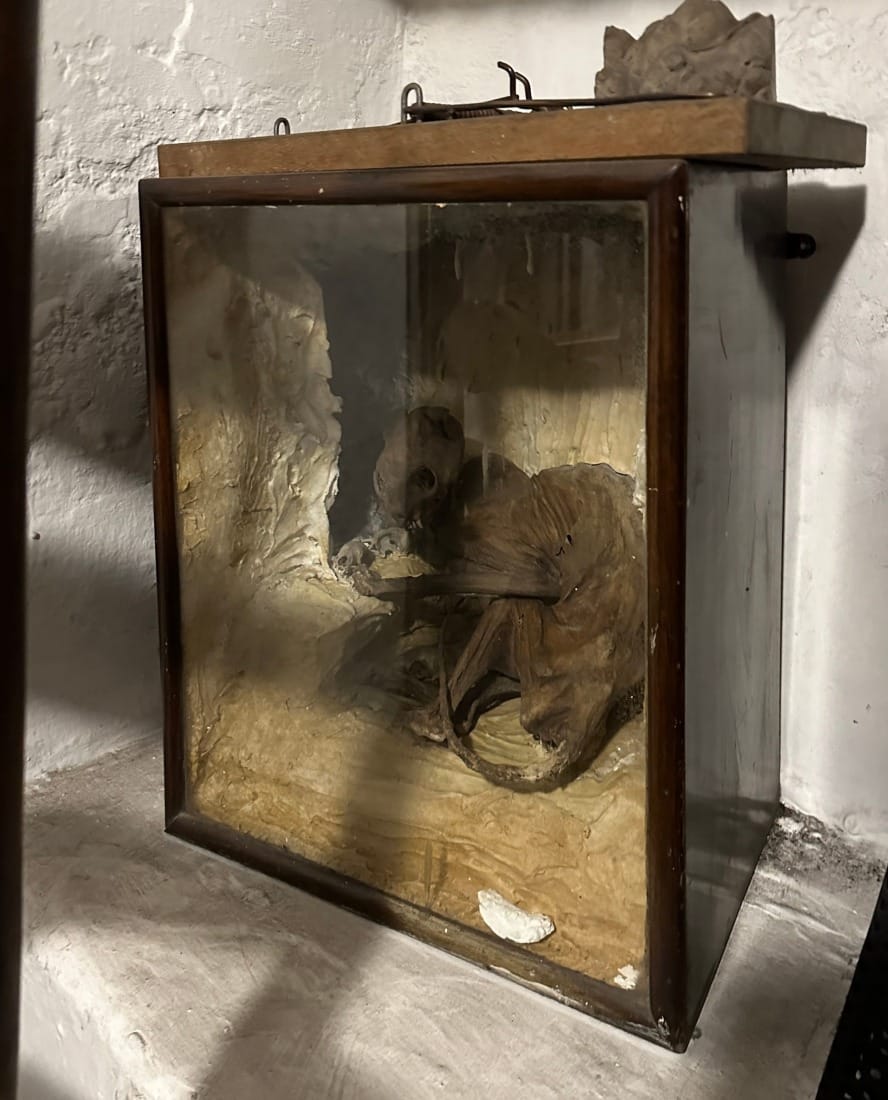
A mummified cat was thought to be used as protective measure to bless the buildings and all that pass through it.
The Haunch of Venison, Salisbury, Wiltshire
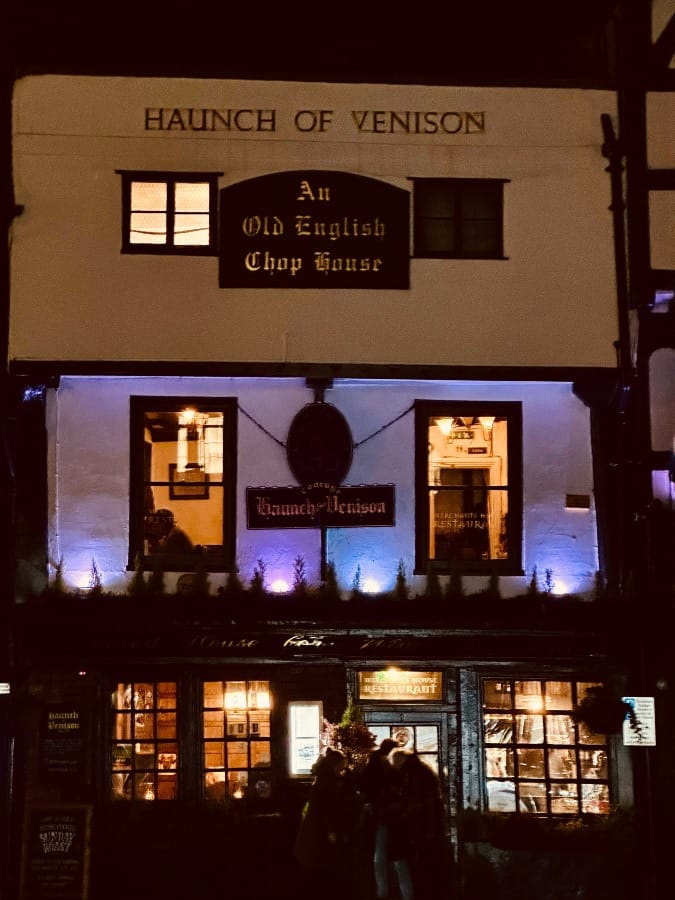
One of the oldest pubs that I have visited. Originating from the mid C15th - perhaps as a church house for St. Thomas nearby. Contains some beautiful original Edwardian pub fittings and an ambience that is hard to replicate.
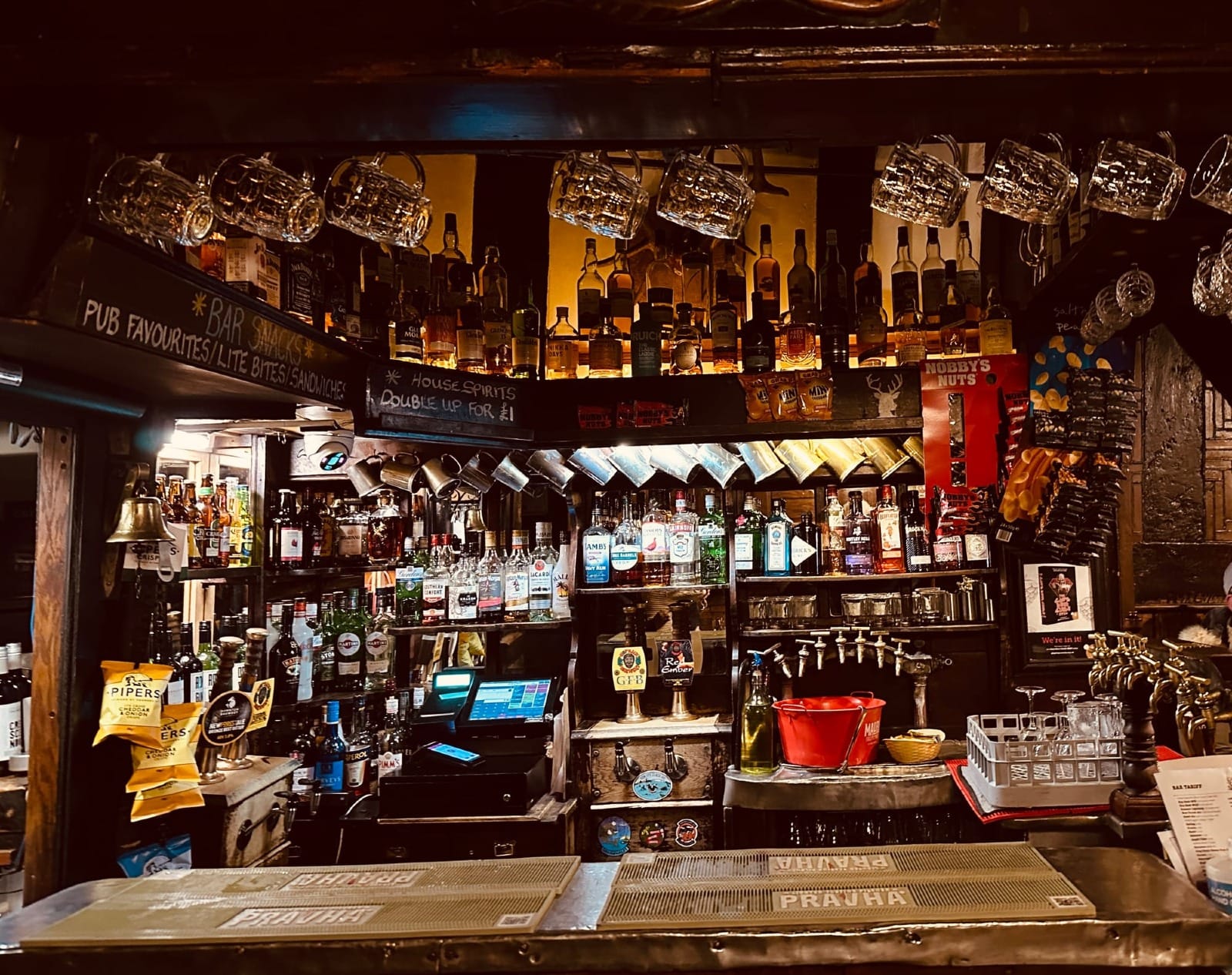
There is a myth that it was in this pub that Churchill met Eisenhower to discuss the D-Day Landings.
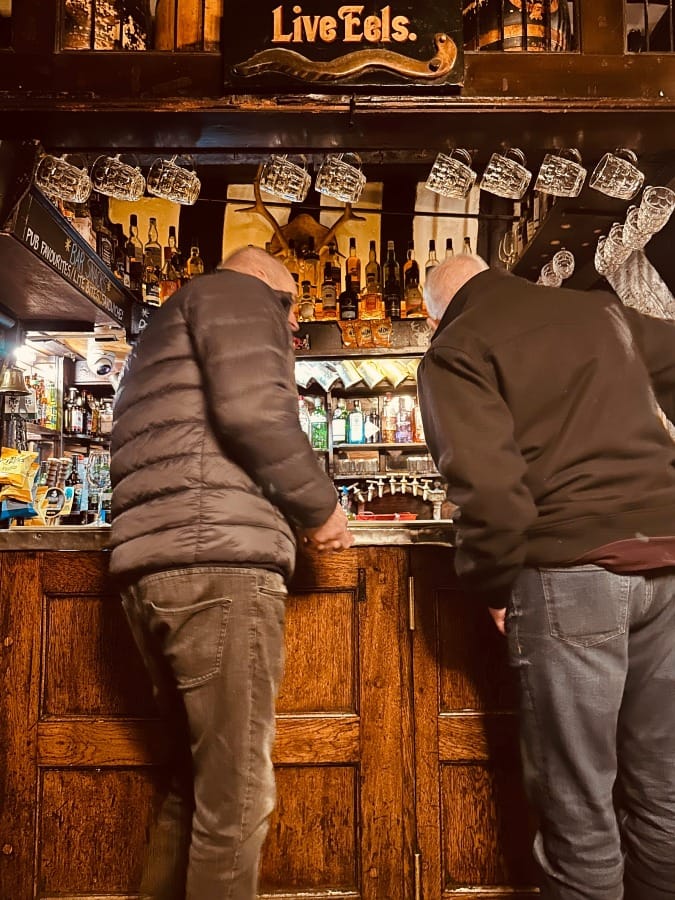
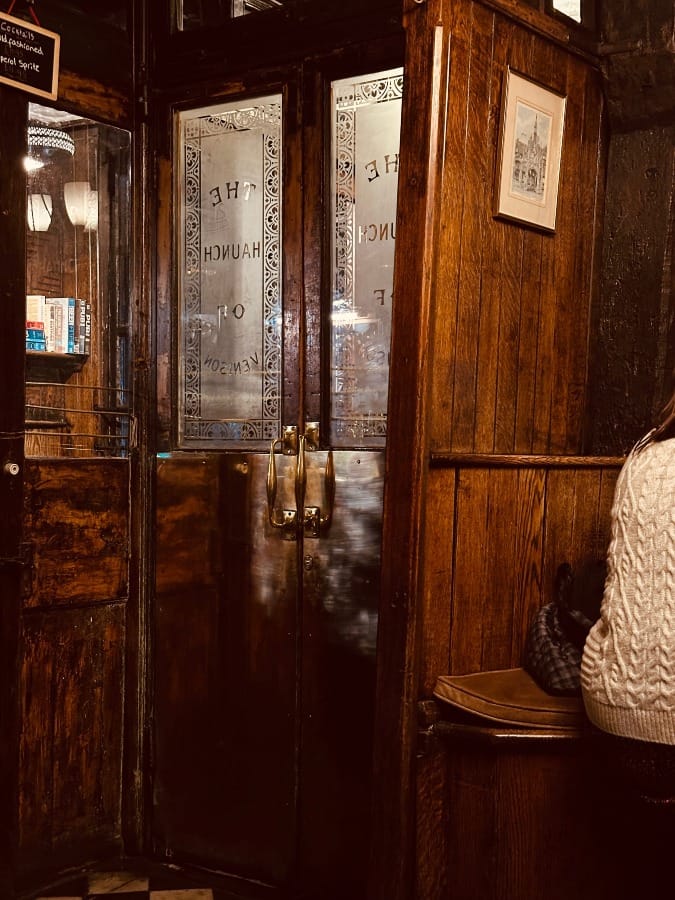
Two Tubs, Bury, Lancashire
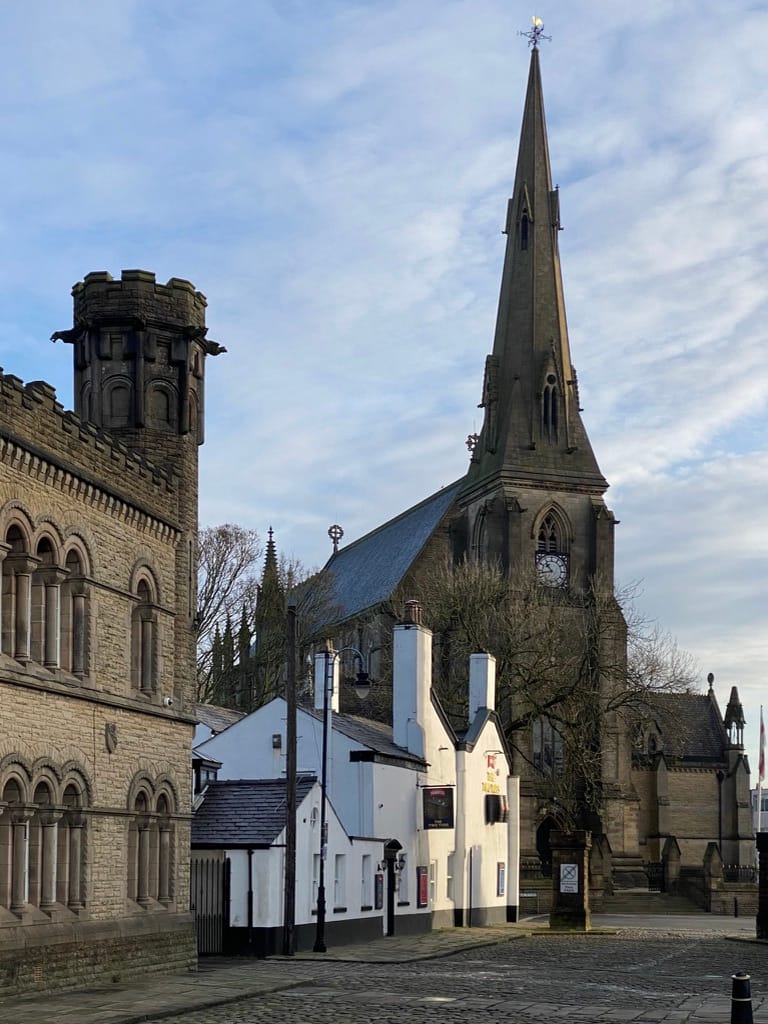
Sat between the medieval castle ruins and the church, The Two Tubs in Bury was originally timber-framed and infilled with wattle and daub. Originally called The Globe Inn.
In 1830 landlord Mr Shaw responded to the neighbouring Old White Bear’s new signage by sawing a barrel in half to form a globe, the hoops and staves intended to represent the lines of latitude and longitude. The Two Tubs’ nickname remains to this day.
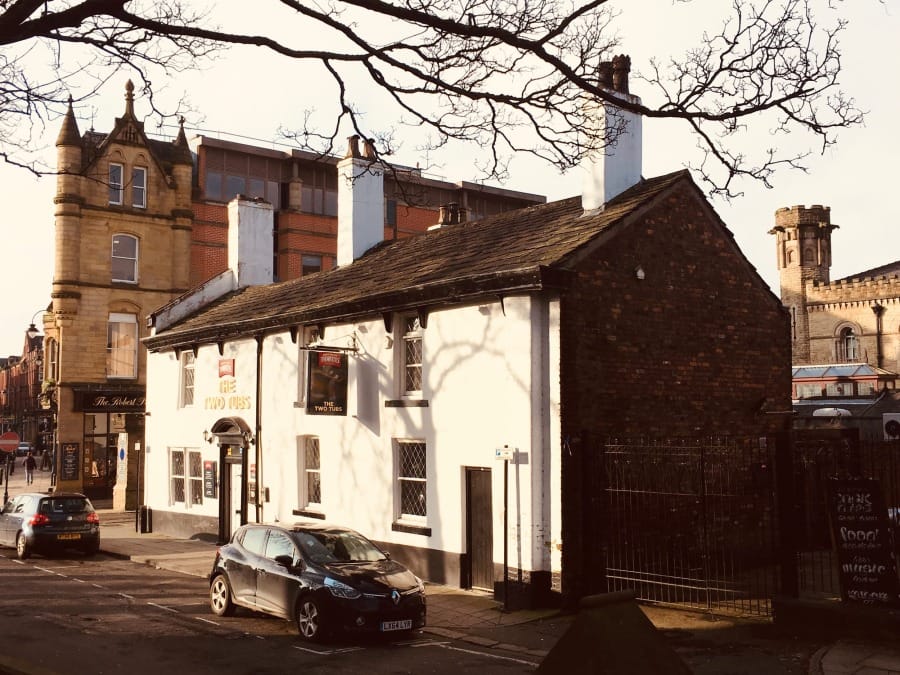
When I'm back home, this is a frequent haunt. The hopper head on the main facade was put up in Georgian times and is still doing its job.
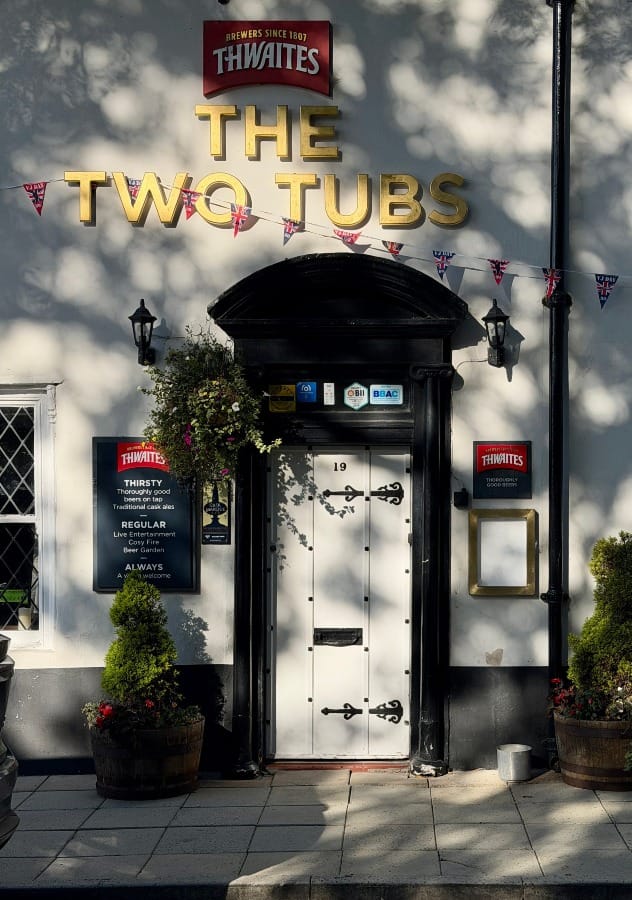
The knowledge that the Two Tubs was originally timber framed was once part of folklore until somebody removed a plastered wall and found the original timber framing behind it - with lots of the lime plaster and wattle still in place.
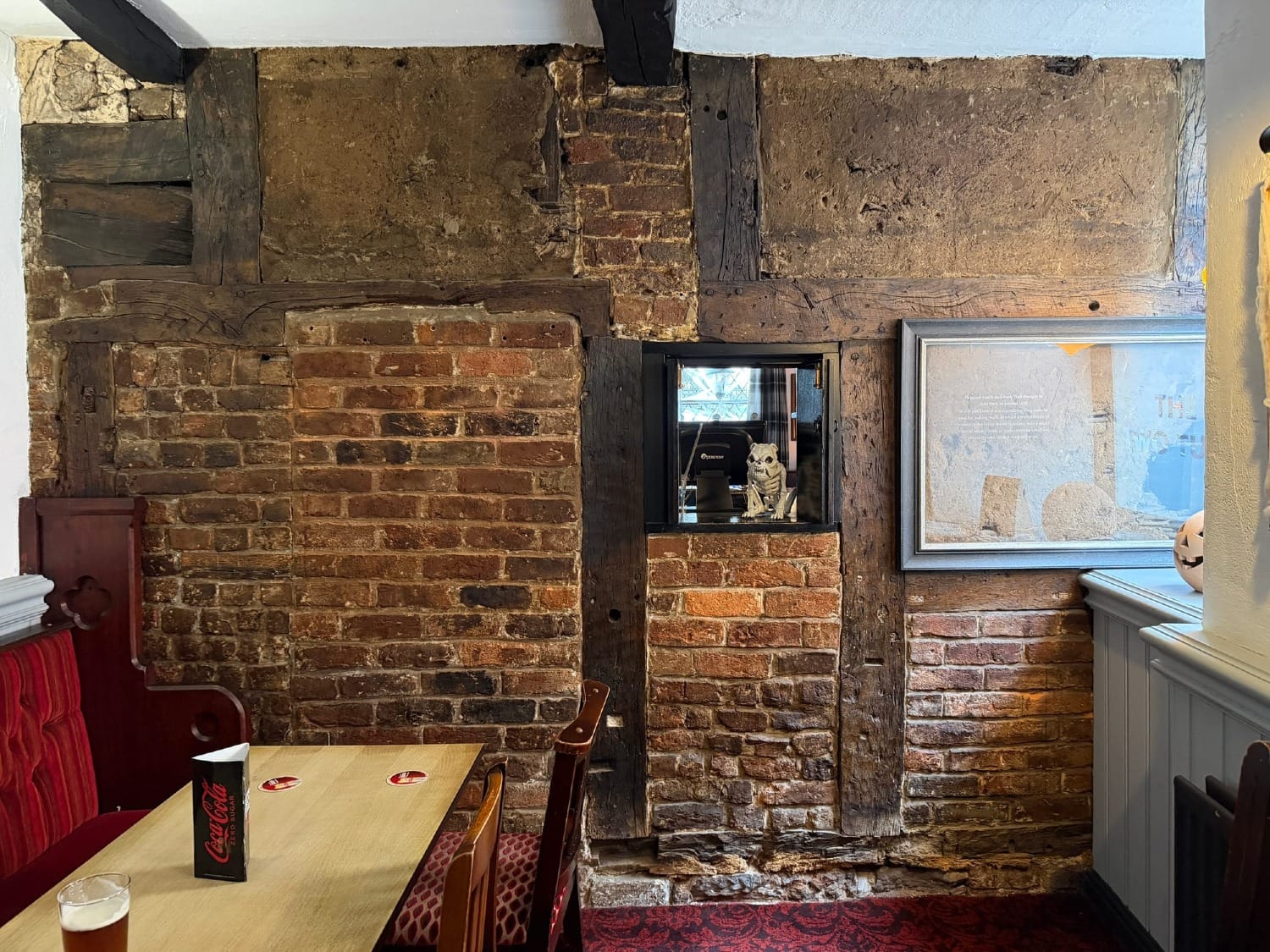
Blocked up doorways with late Georgian brick.
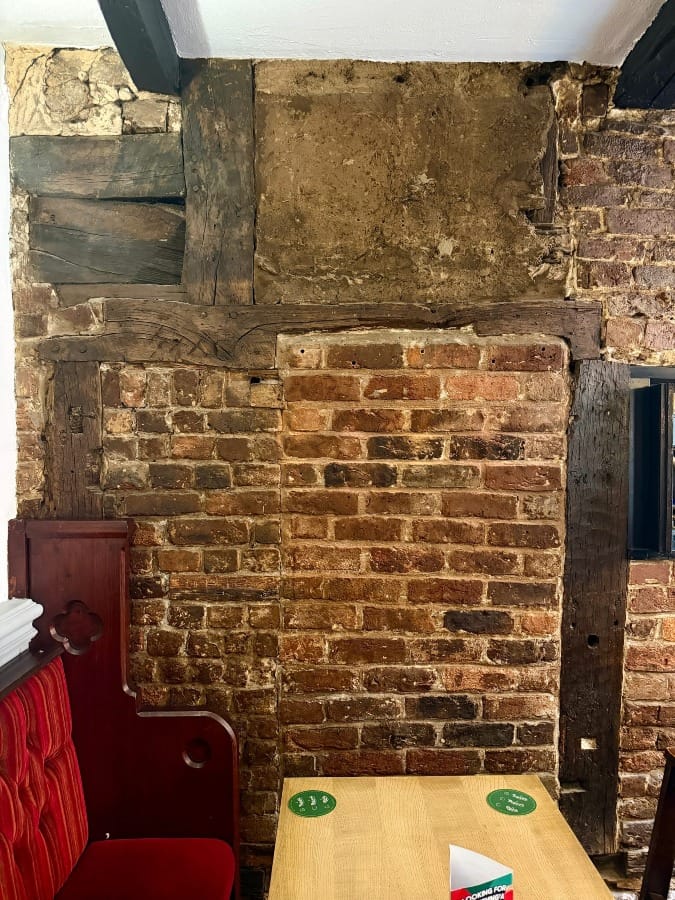
Look carefully and you might see a skull peering through the brickwork.
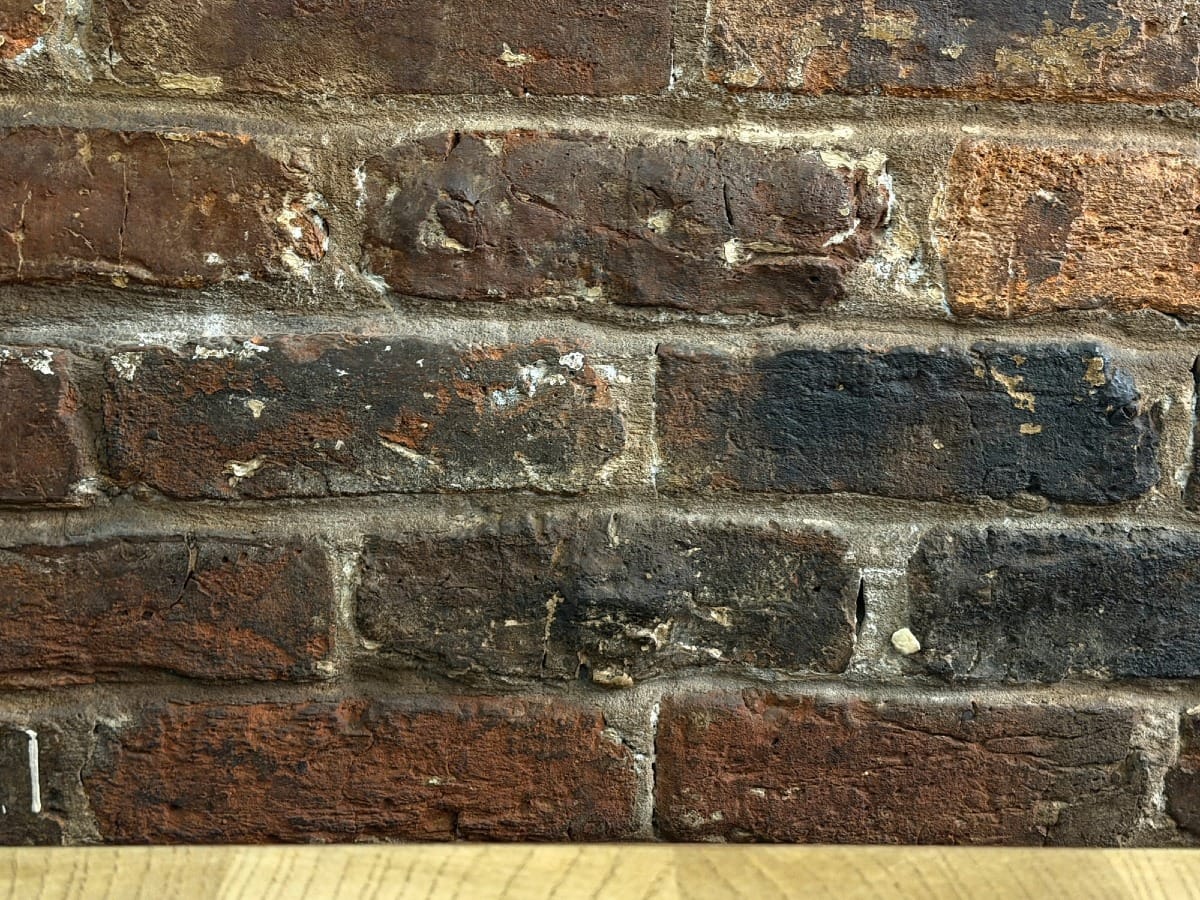
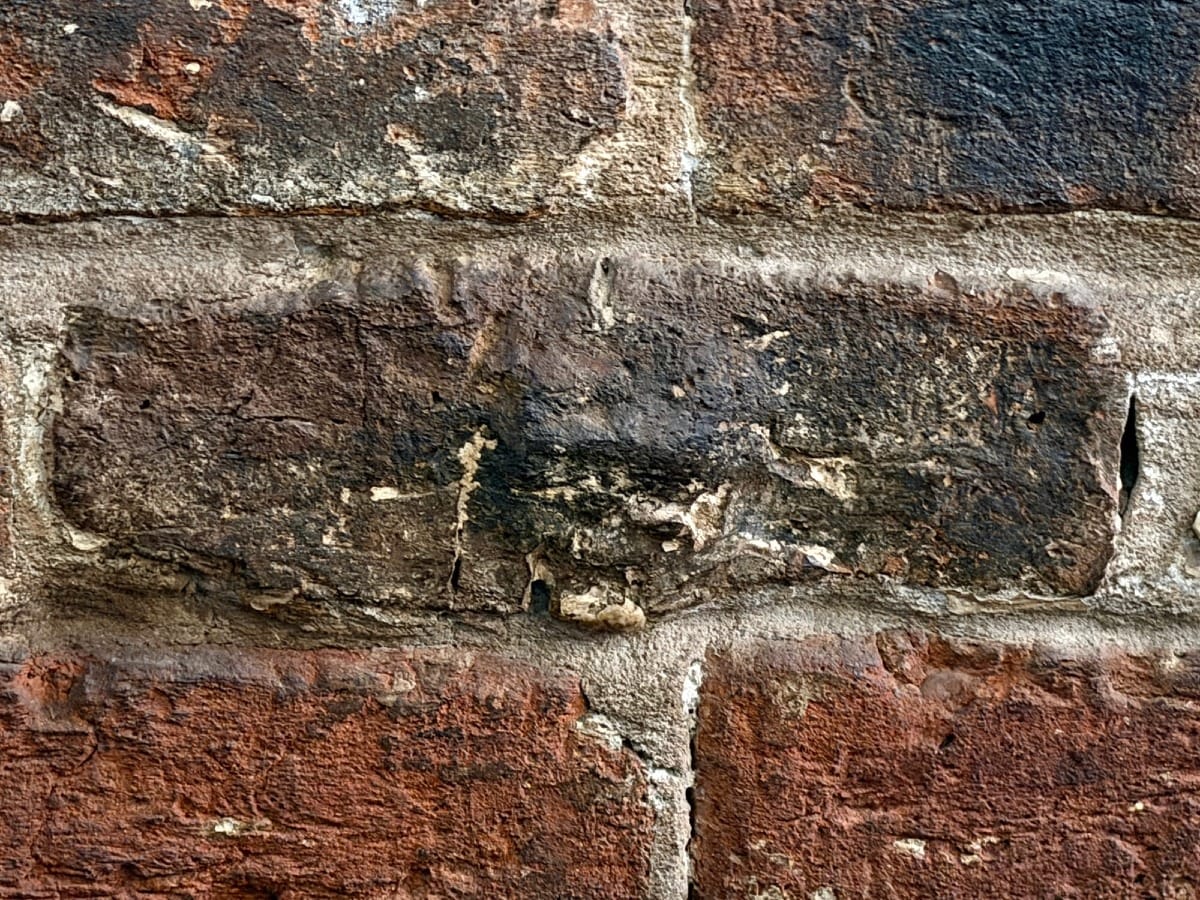
The Wykeham Arms, Winchester, Hampshire
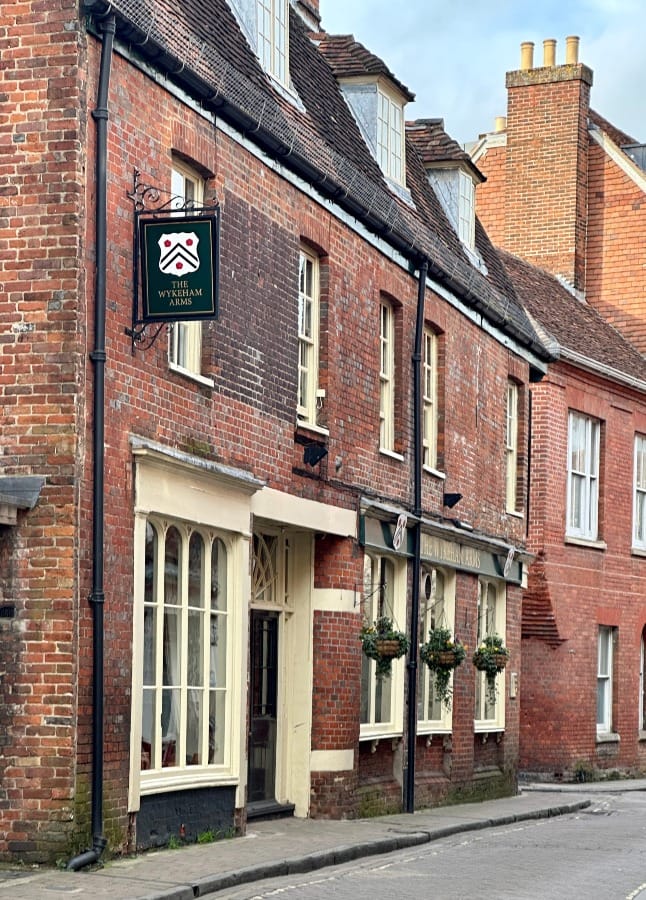
It doesn't take too long for me to be absorbed into the fabric by way of the Wykeham Arms with its mansard roof and Regency doorway.
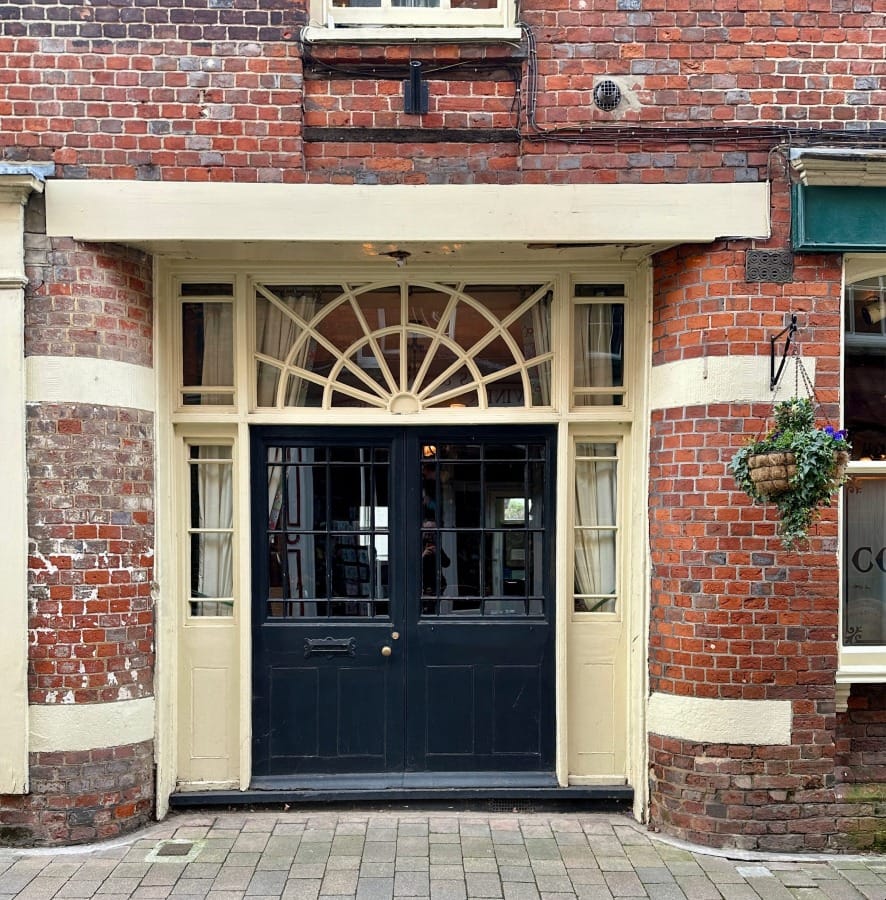
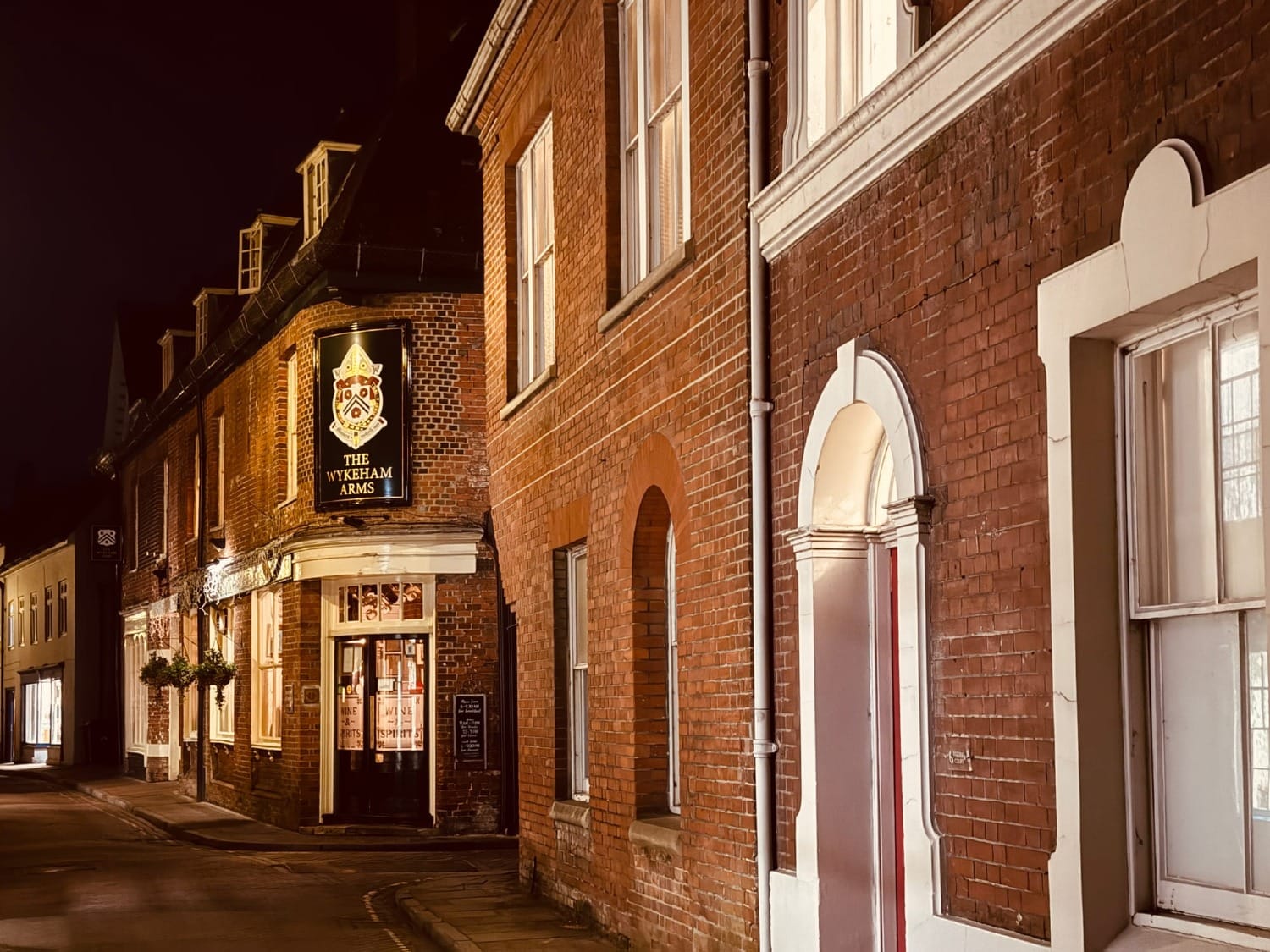
The interior is a delight. People are warm and welcoming. Away from the tourist hotspots - this place feels like a local.
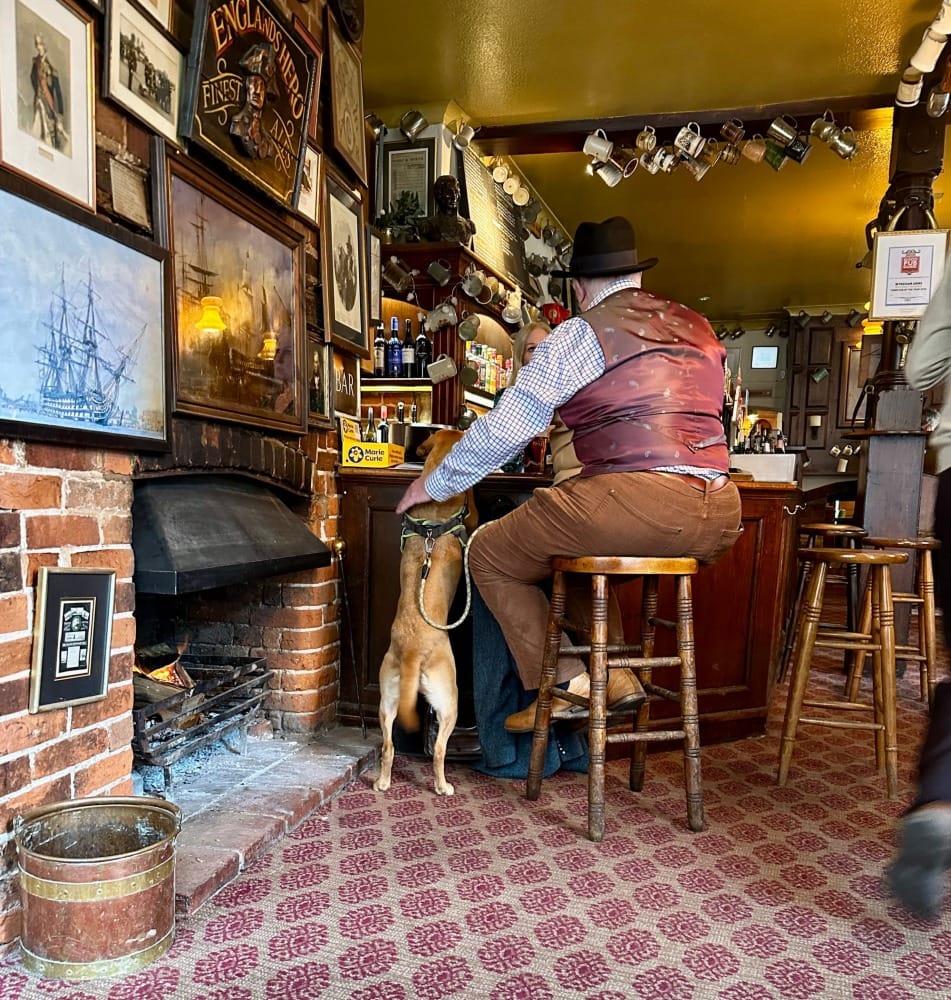
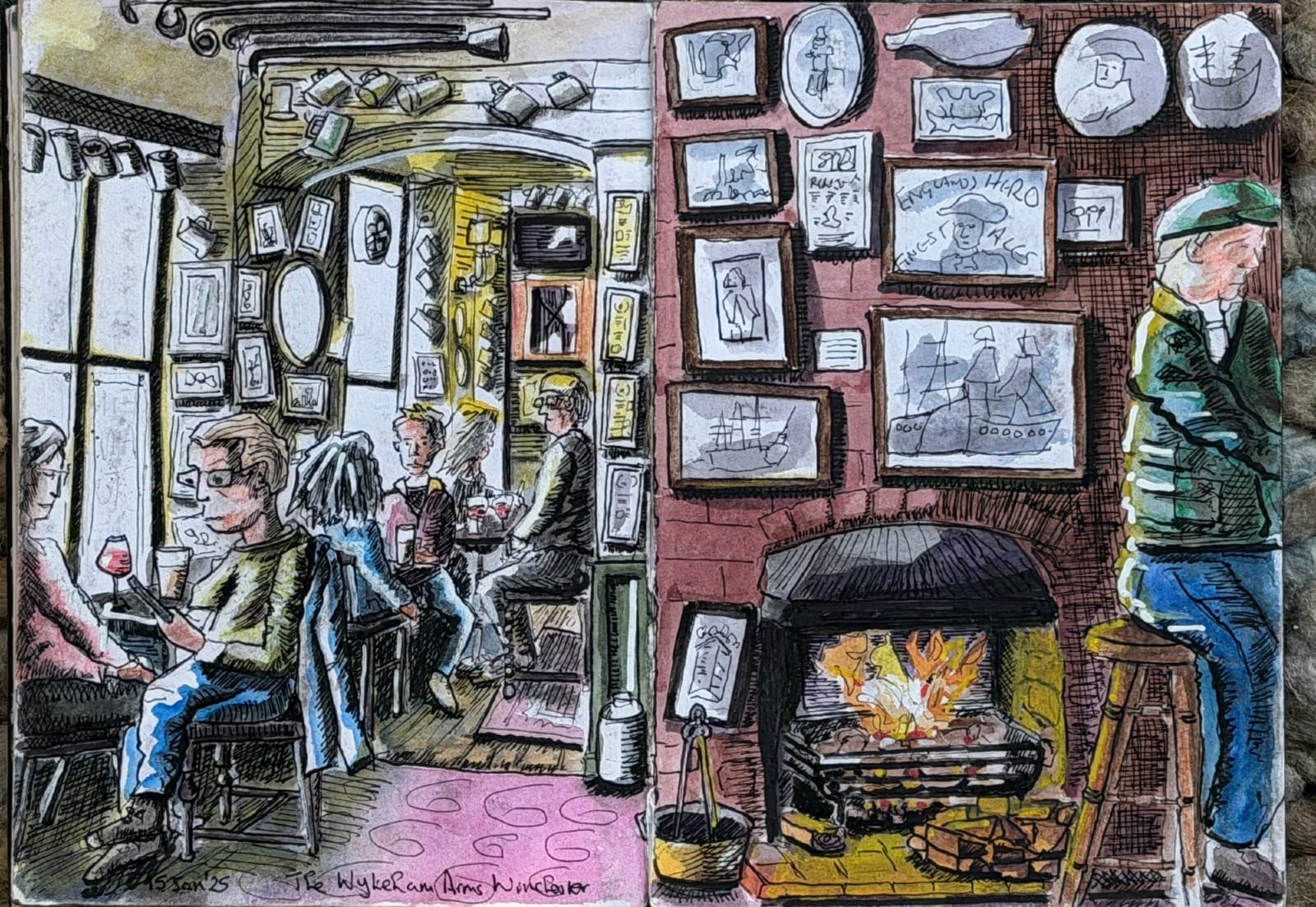
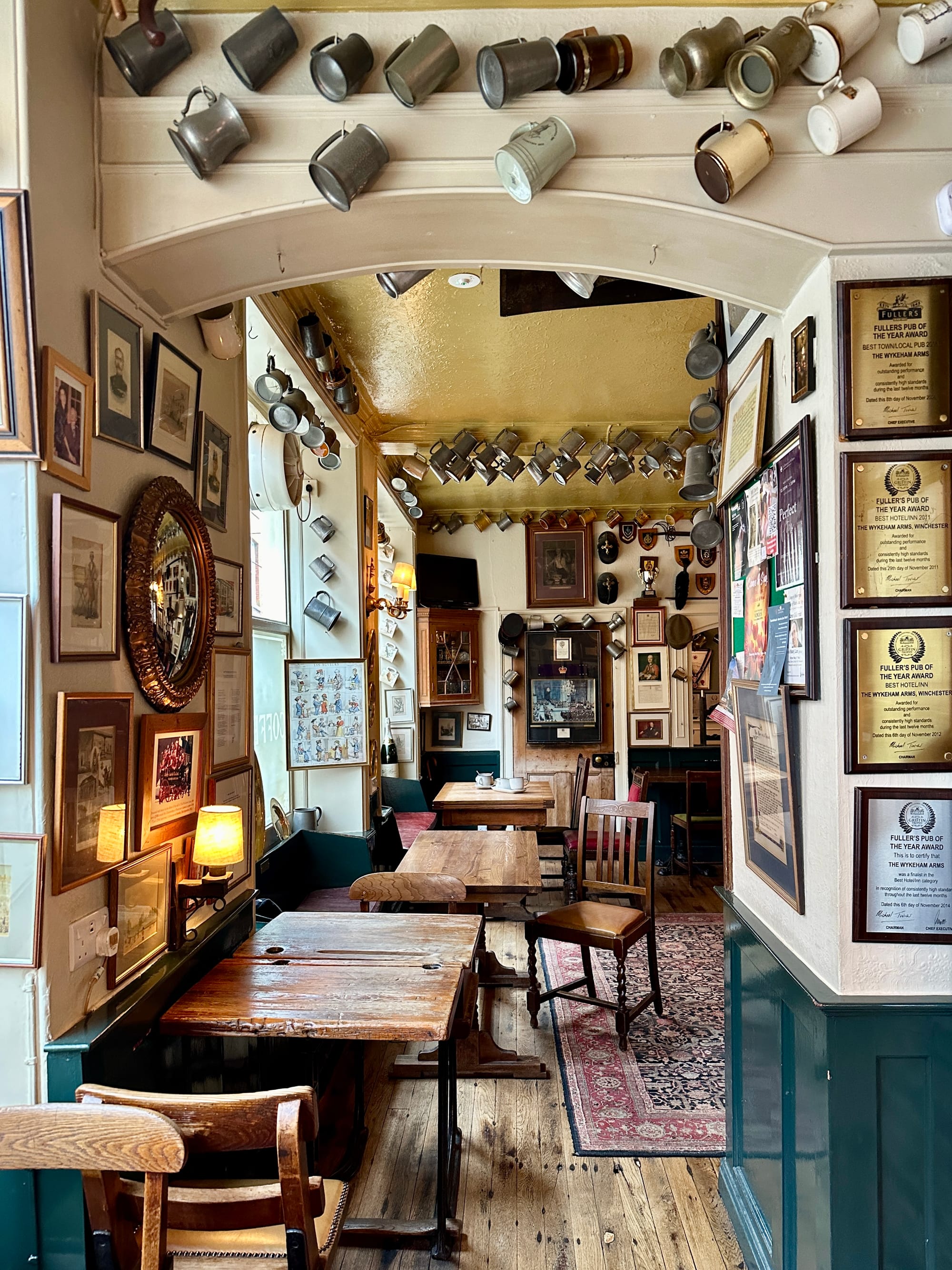
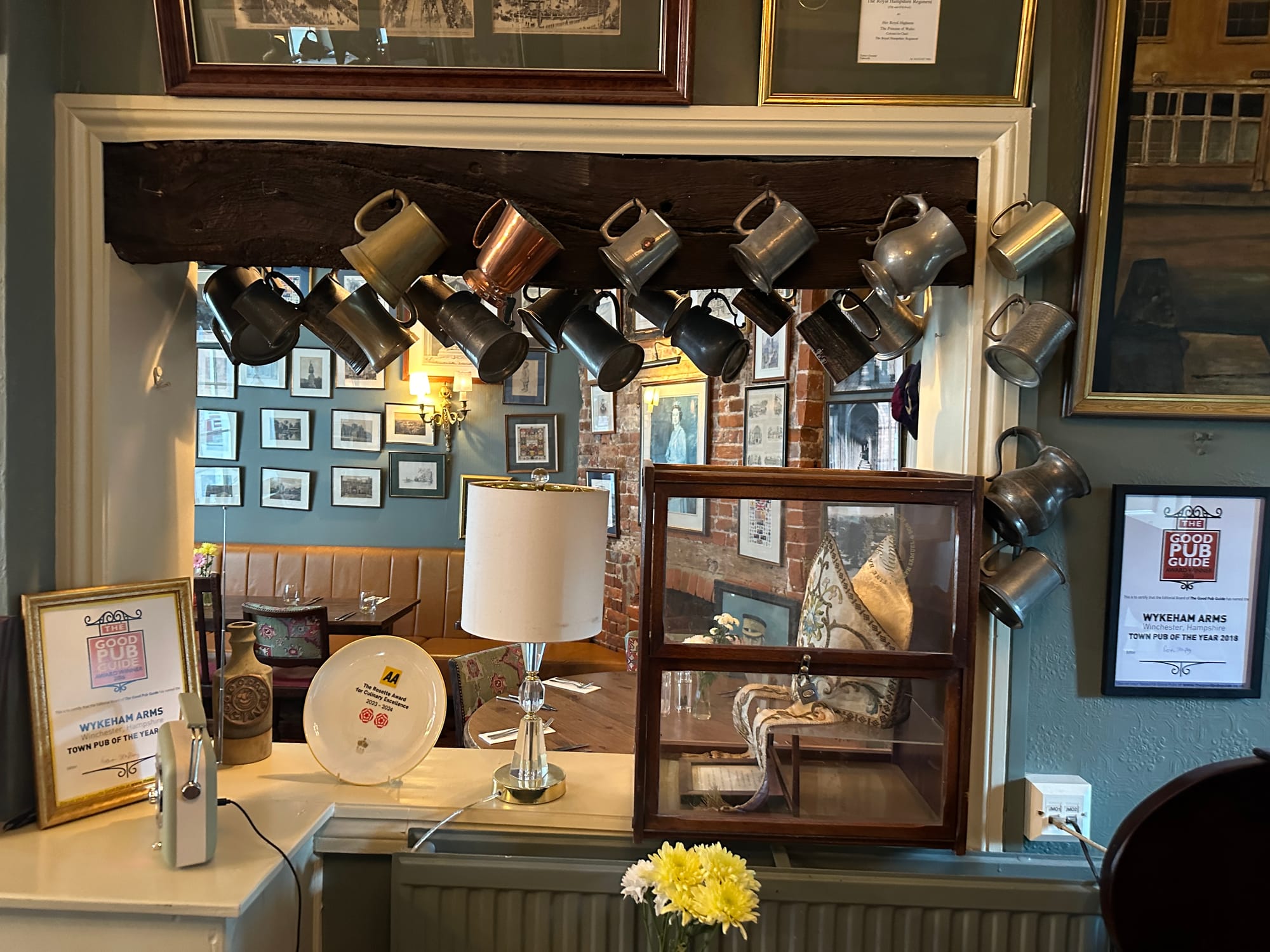
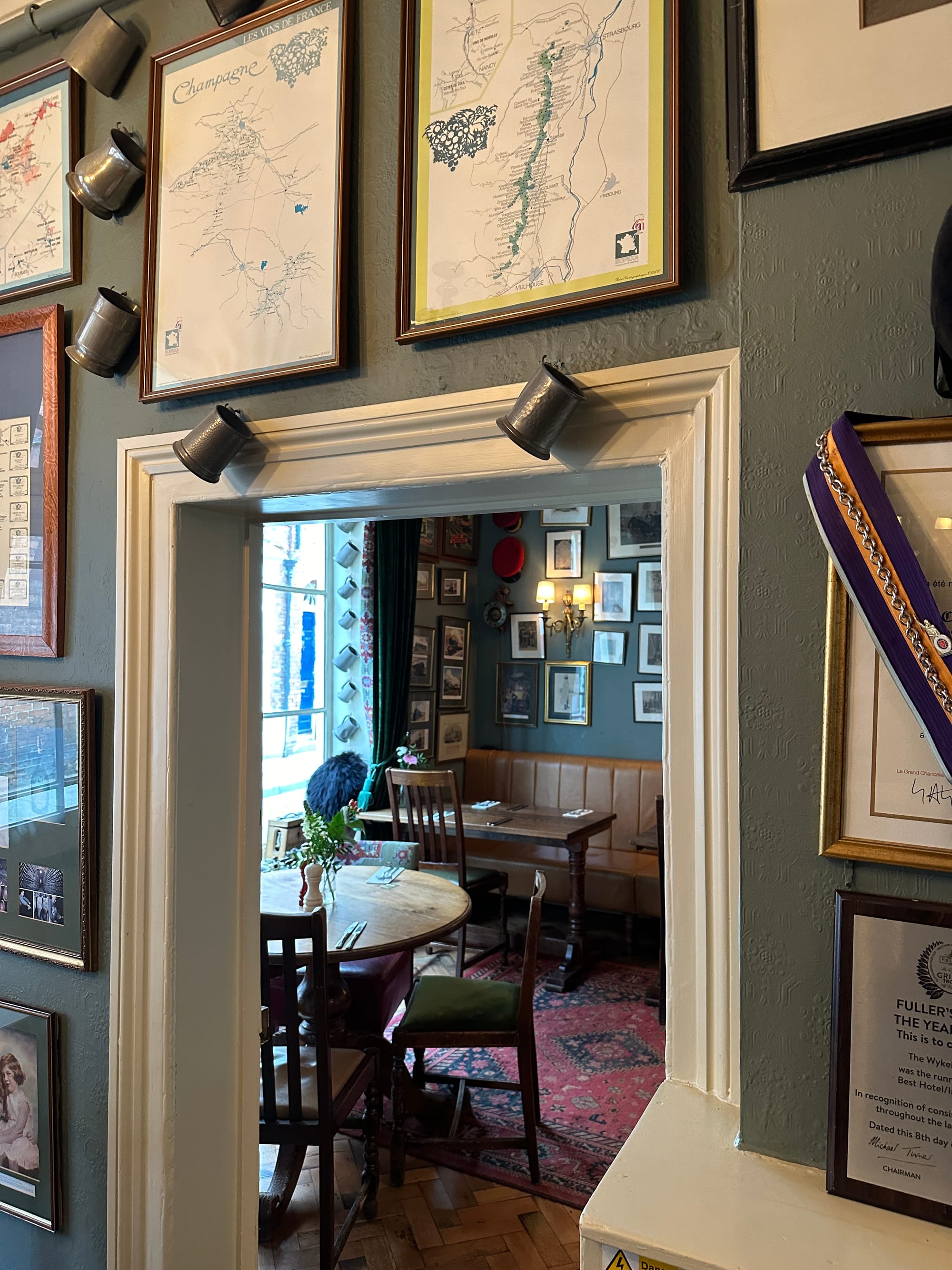
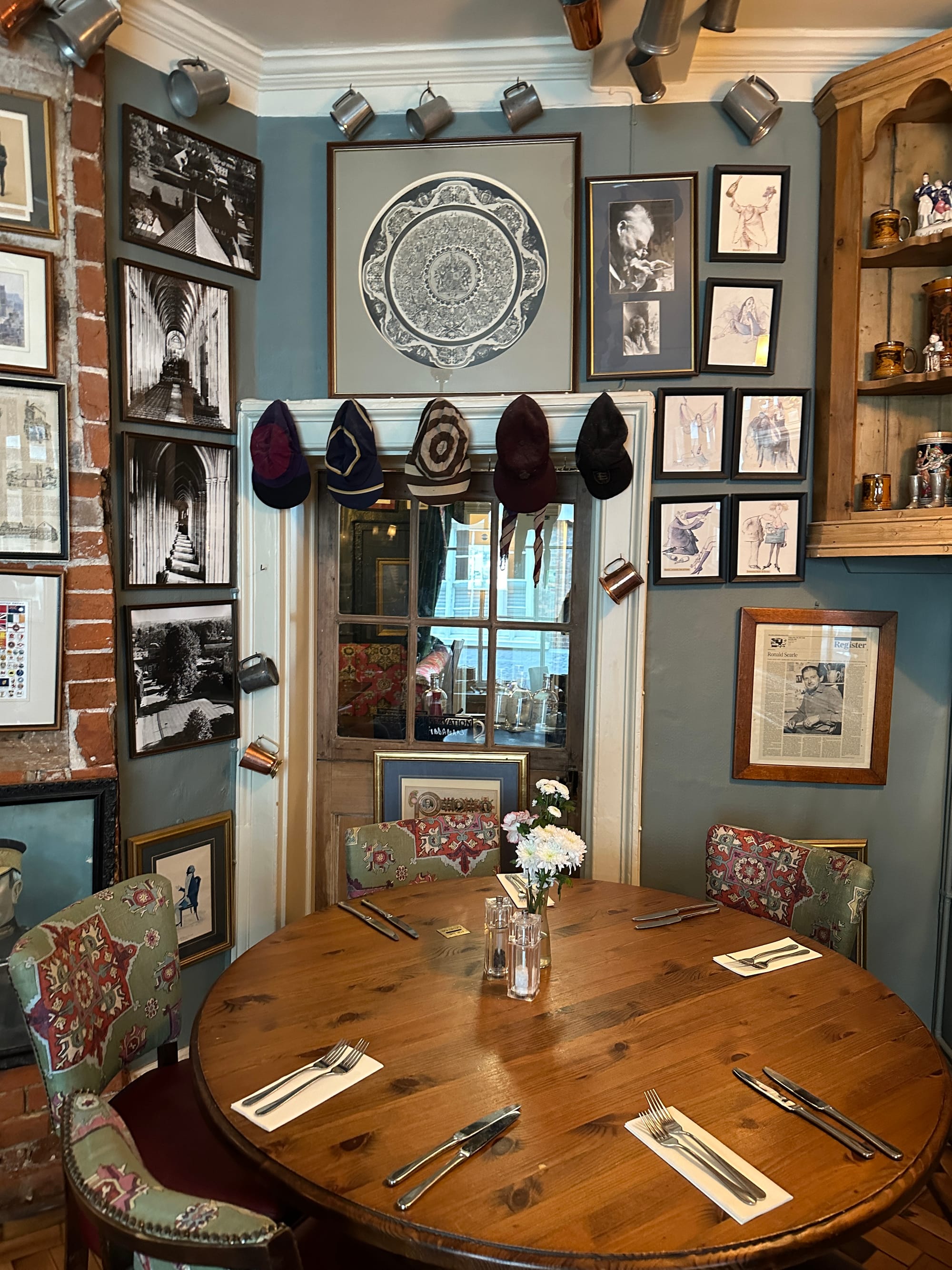
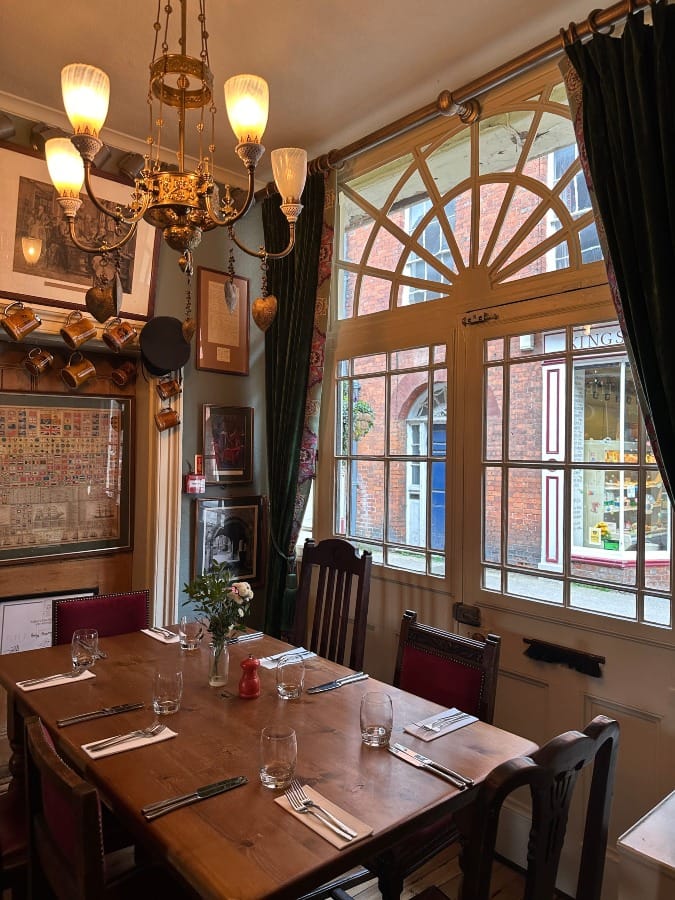
The Falcon Tap, Micklegate, York
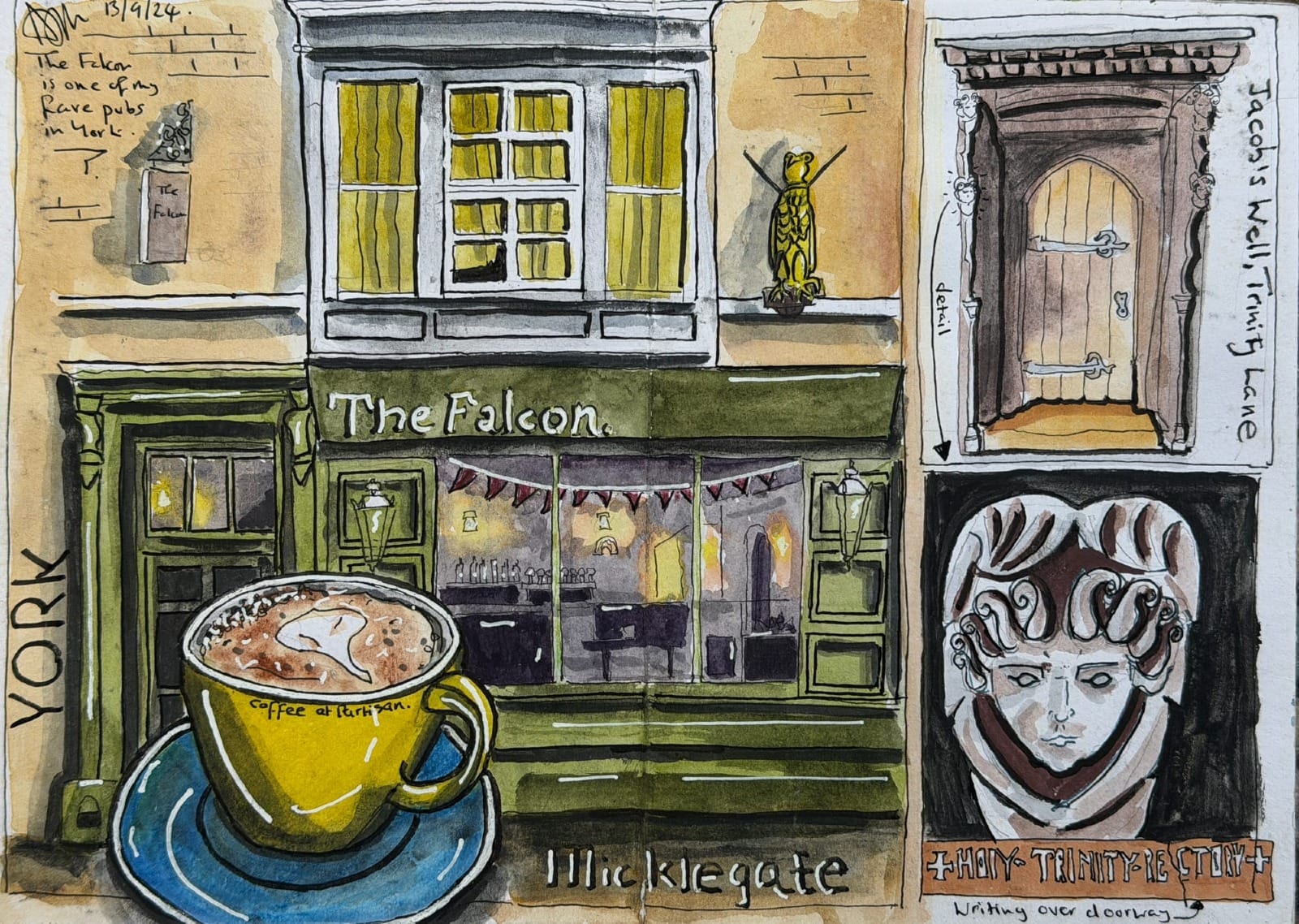
What fascinates me about this place is how the original Falcon sign remained in situ - even after the pub closed and the building changed purpose.
It’s as if the sign itself became a talisman, drawing the building back into its original role - calling it home again as a pub into the present day.
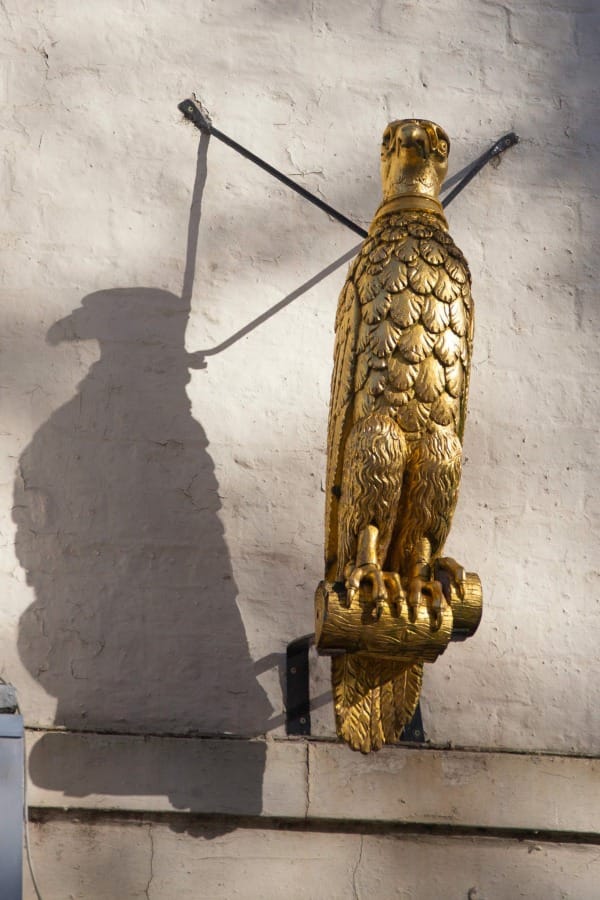
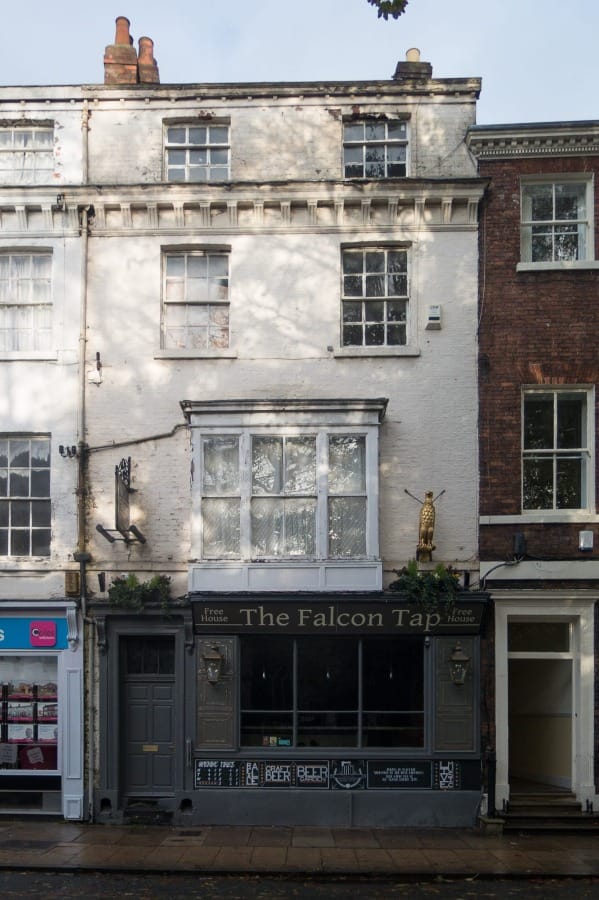
I go to York often - lots of meet ups and conferences and I have met so many different people at the Tap. I don't think there's been a time where I've sat on my own - always somebody to talk to.
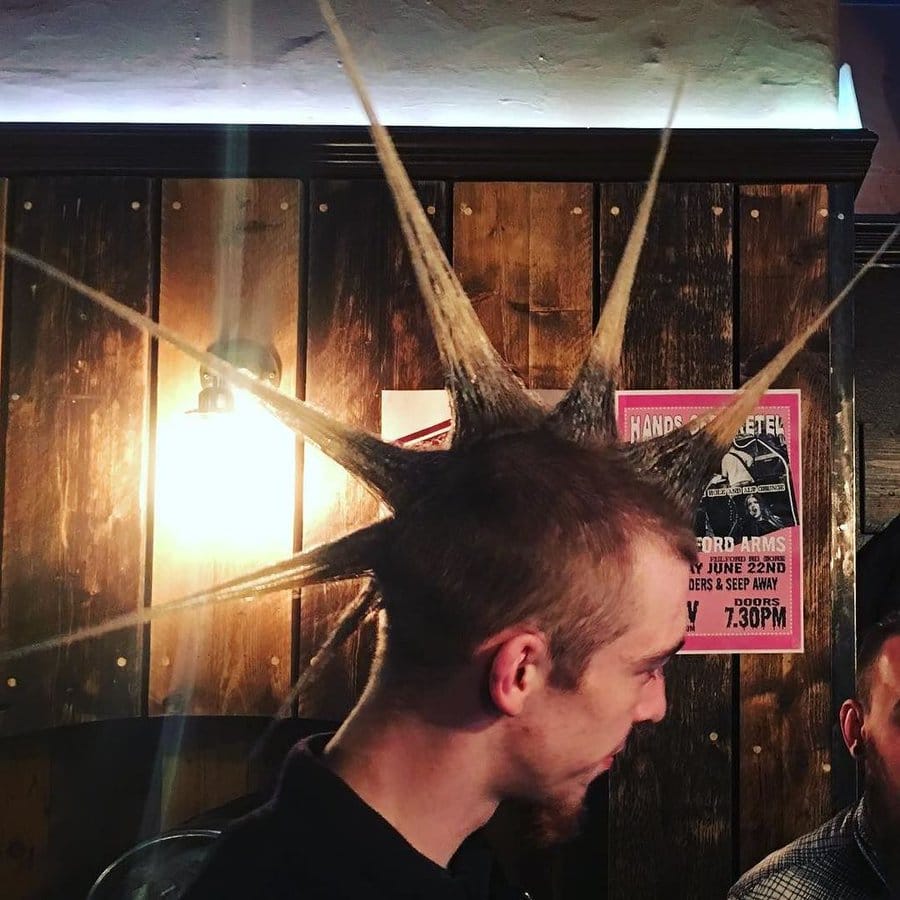
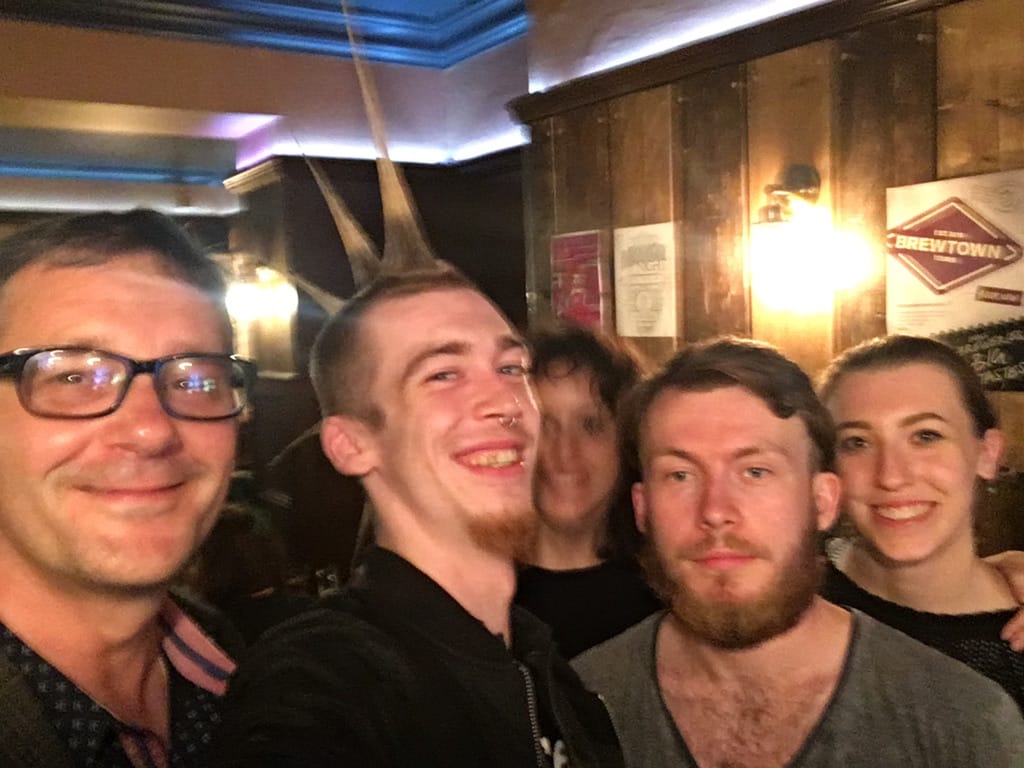
The Lamb Inn, Burford, Oxfordshire
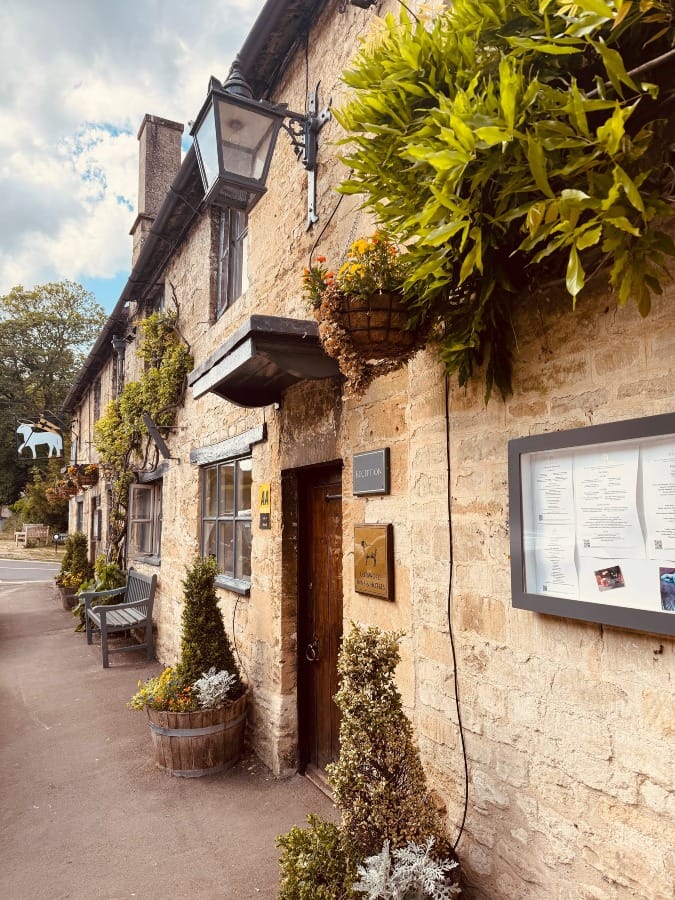
The Lamb Inn on Sheep Street is a real hidden gem - out away from the high street and the tourists - and a wonderful bit of Cotswold vernacular both inside and outside.
On a really busy day in Burford, I managed to get some respite and even had enough time to sketch it:
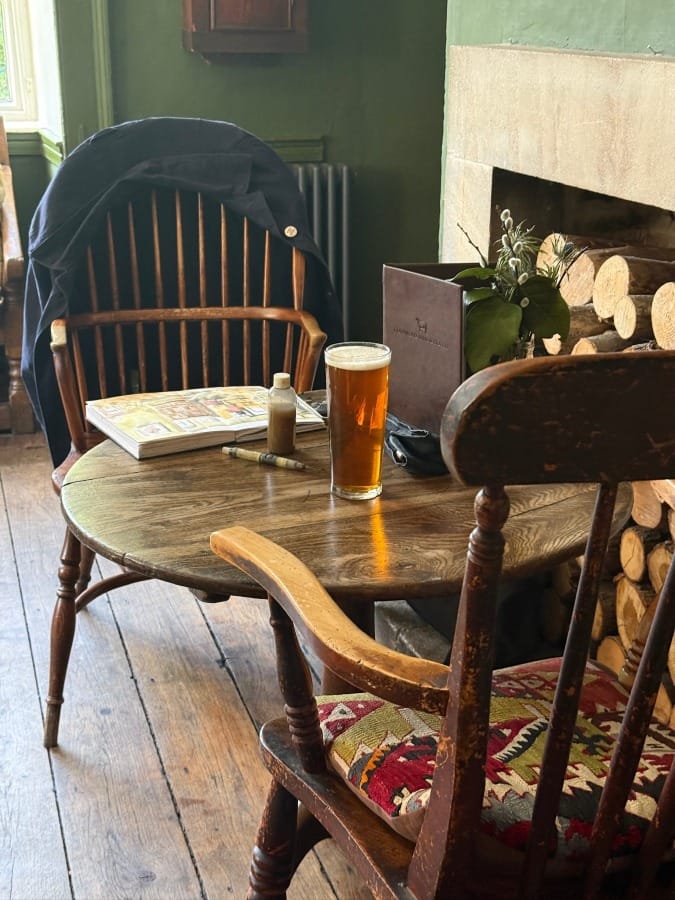
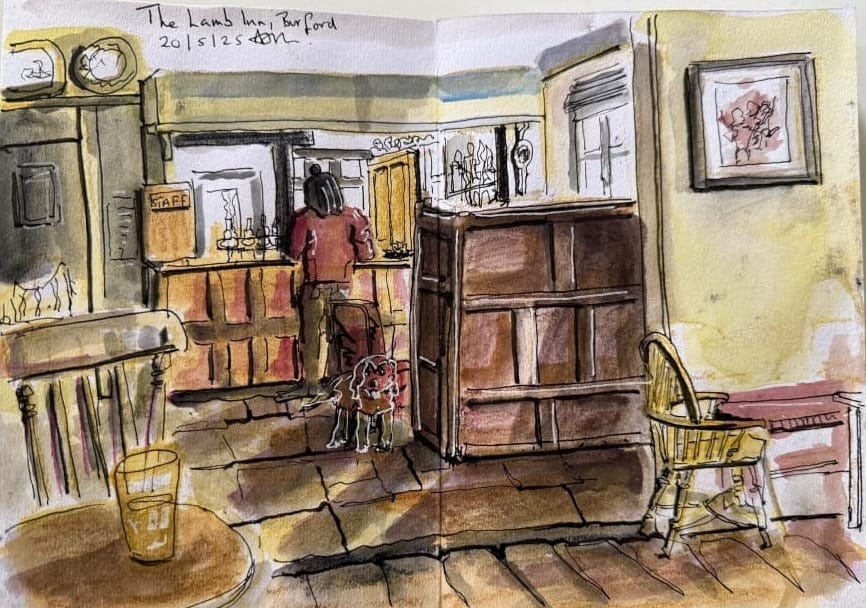
Cafe Royal Bar, Edinburgh
Another little haven just off the mad hustle and bustle of Princes Street. It originally was listed in the Regency period as serving coffee, wine and oysters. Neatly tucked away in a back lane, this is a fab place to grab a bite to eat for lunch after a weary morning shopping.
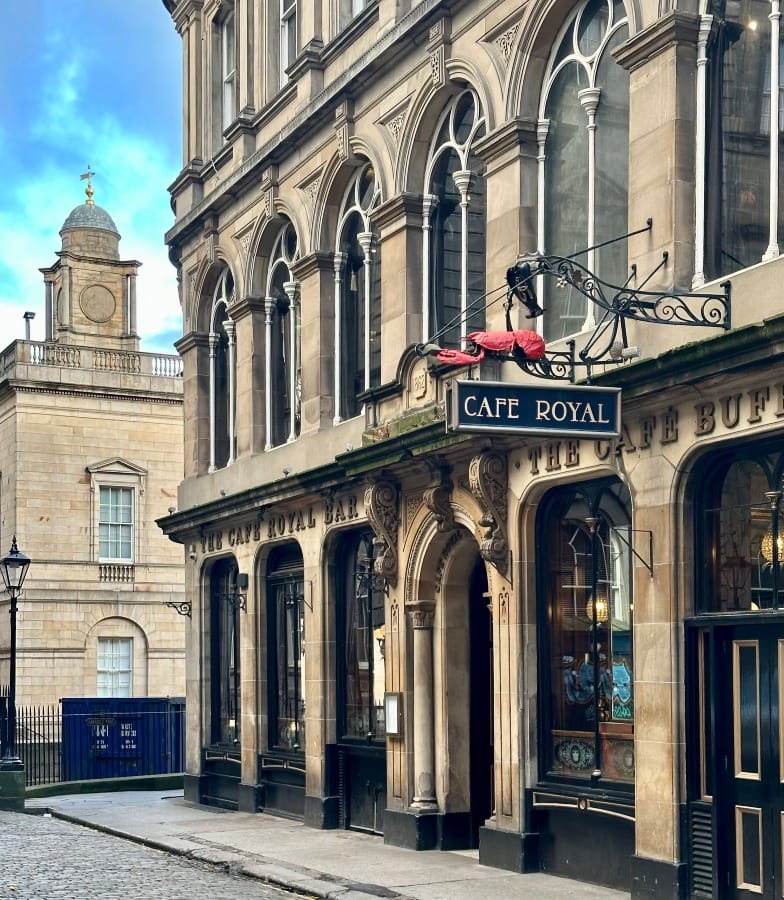
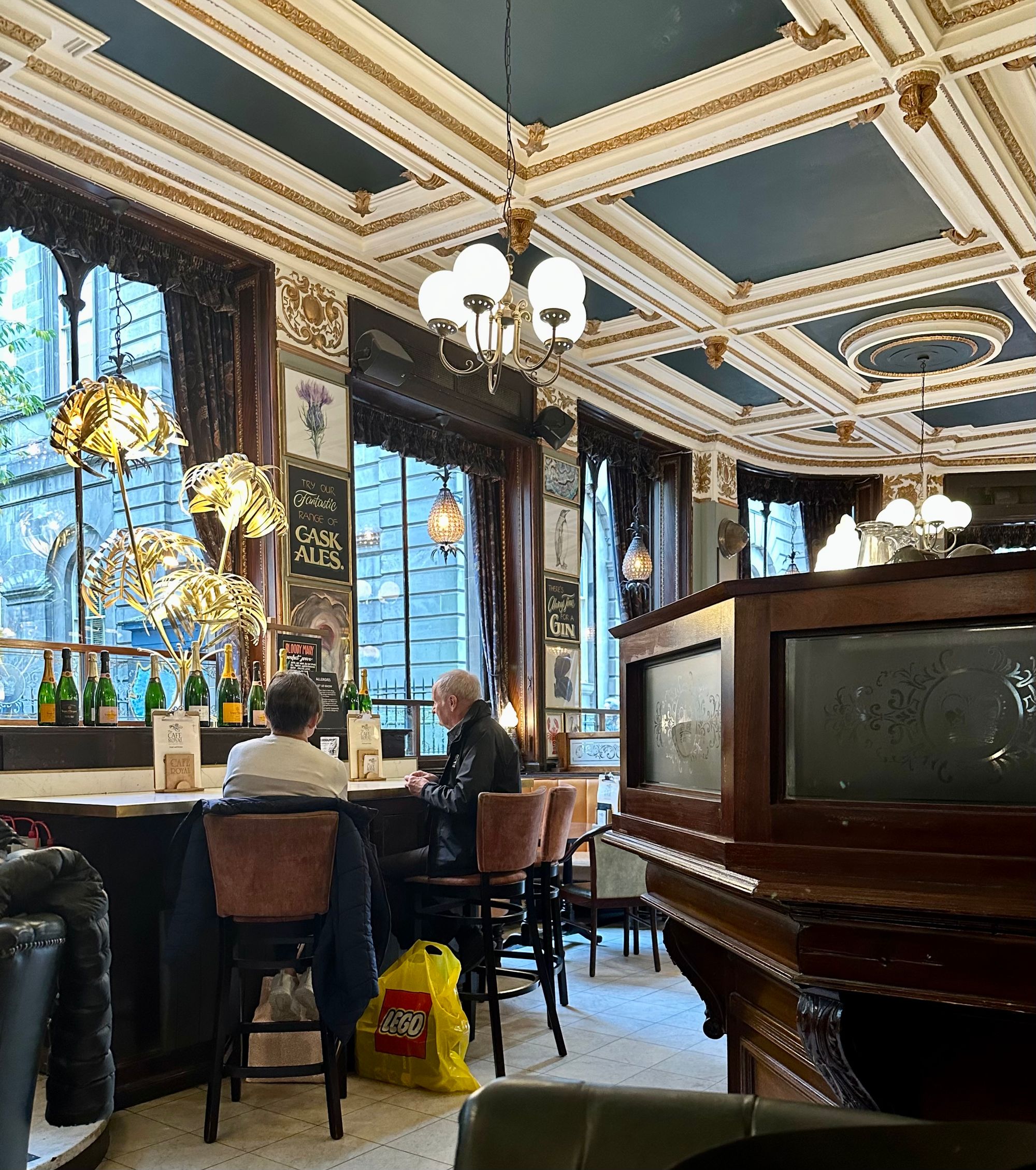
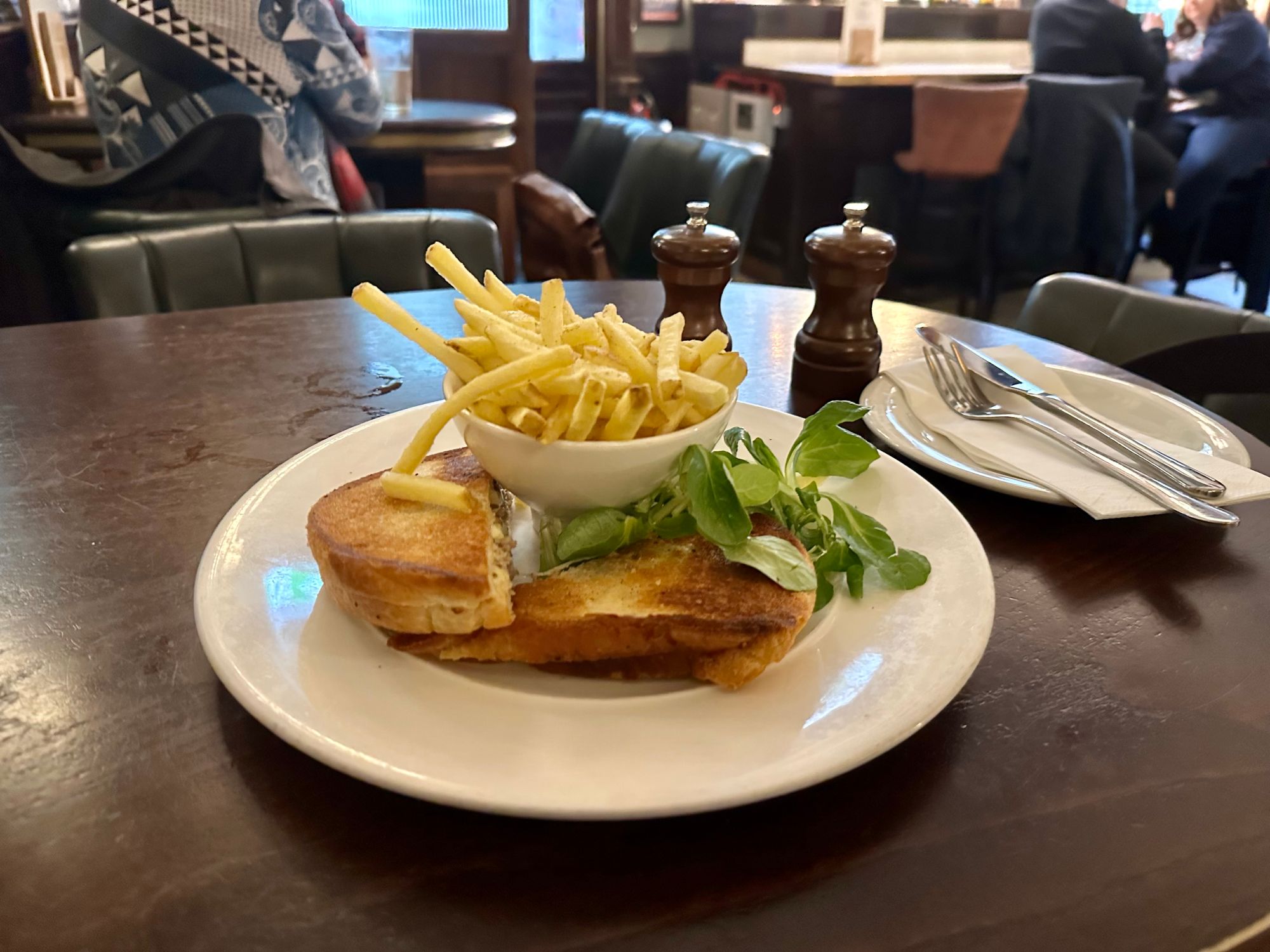
The interior has some priceless Royal Doulton ceramics painted by John Eyre, depicting William Caxton, Michael Faraday and James Watt amongst others.
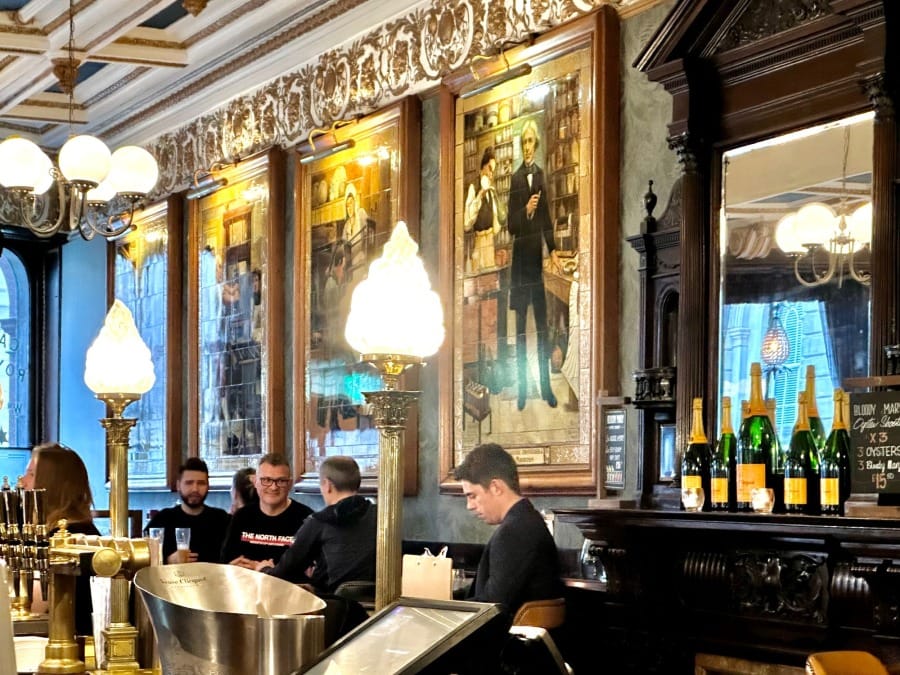
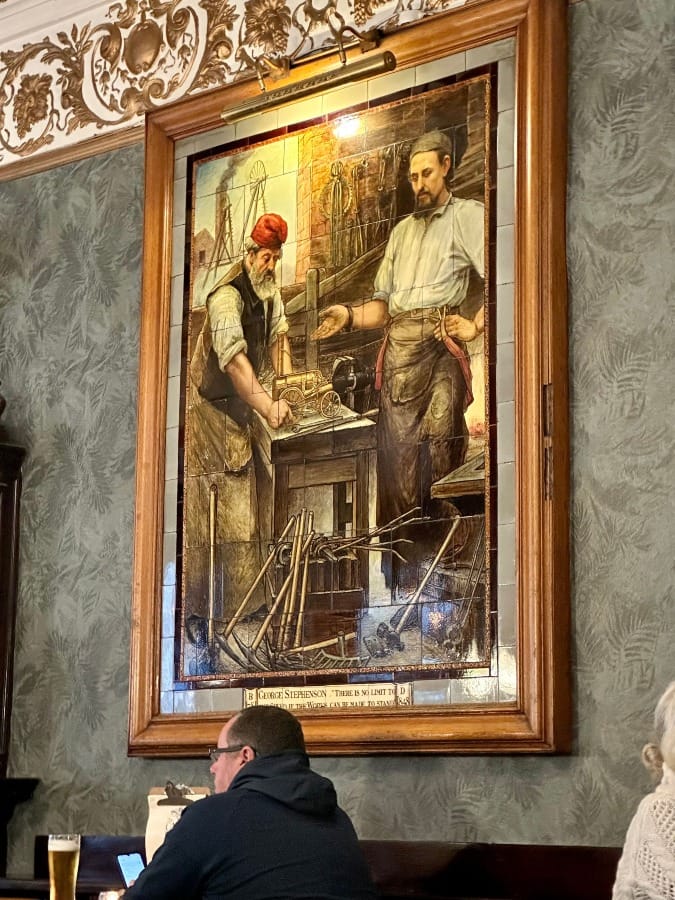
The Nag's Head, Shrewsbury, Shropshire
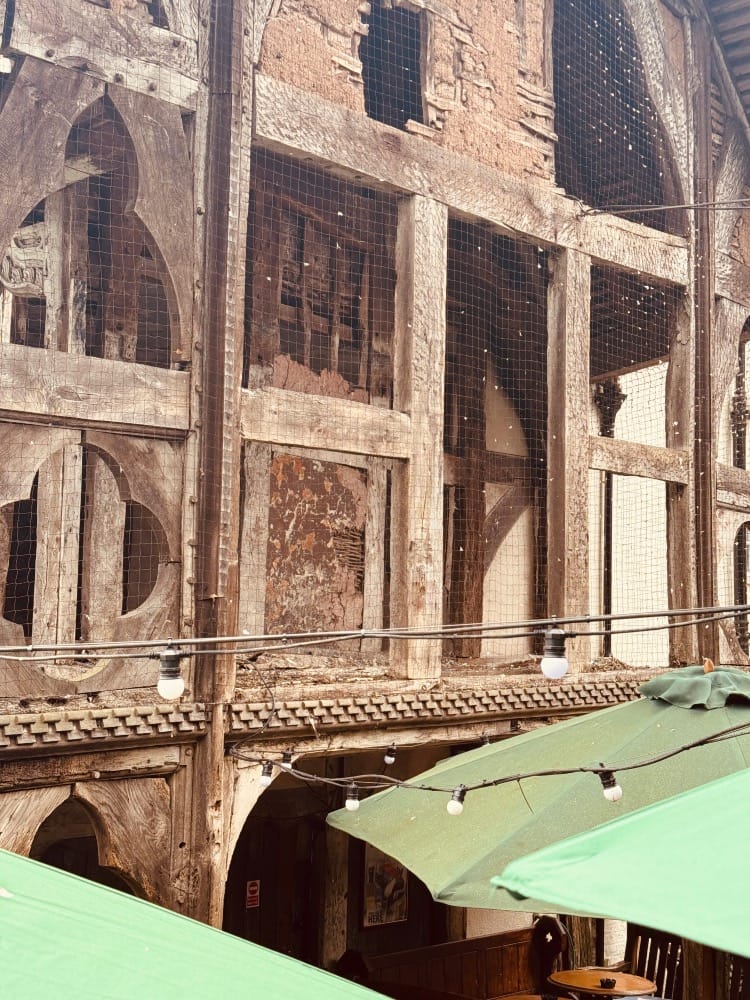
This pub hides a remarkable remnant of a building in Wyle Cop, Shrewsbury. Cockled to the rear of a pub called The Nag’s Head, clinging to its newer counterpart like the last leaf on a winter branch, are the remains of Gibbon's Mansion.
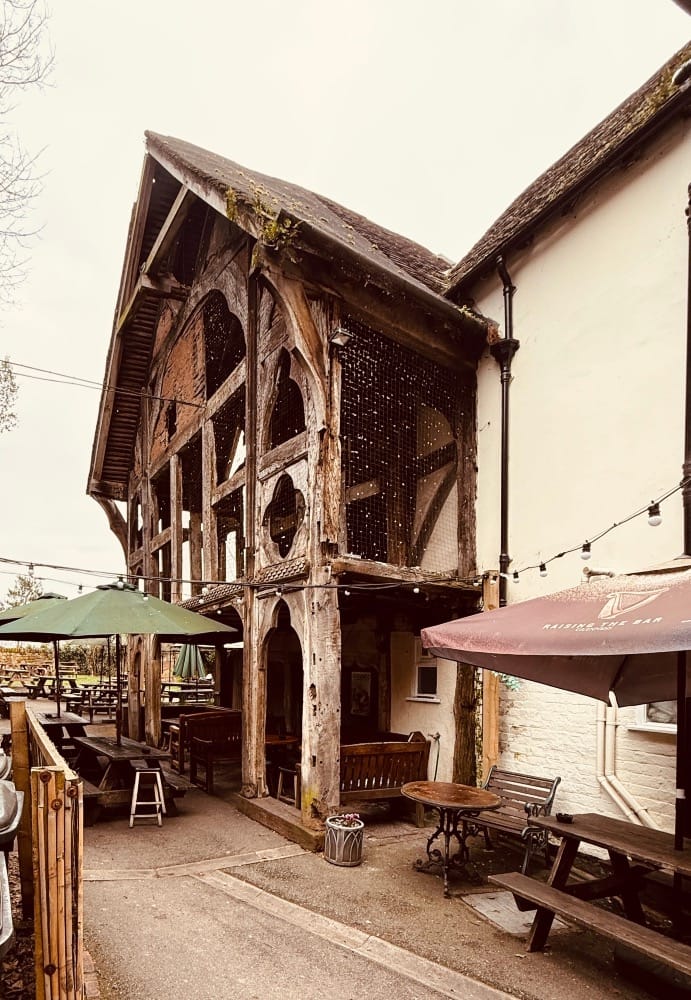
At the time, I remember being struck by its fragility – how a single touch might have shattered it. And yet, that very brittleness was the foundation of its beauty. Its glass-like form was not a failure of resilience but a moment of transformation.
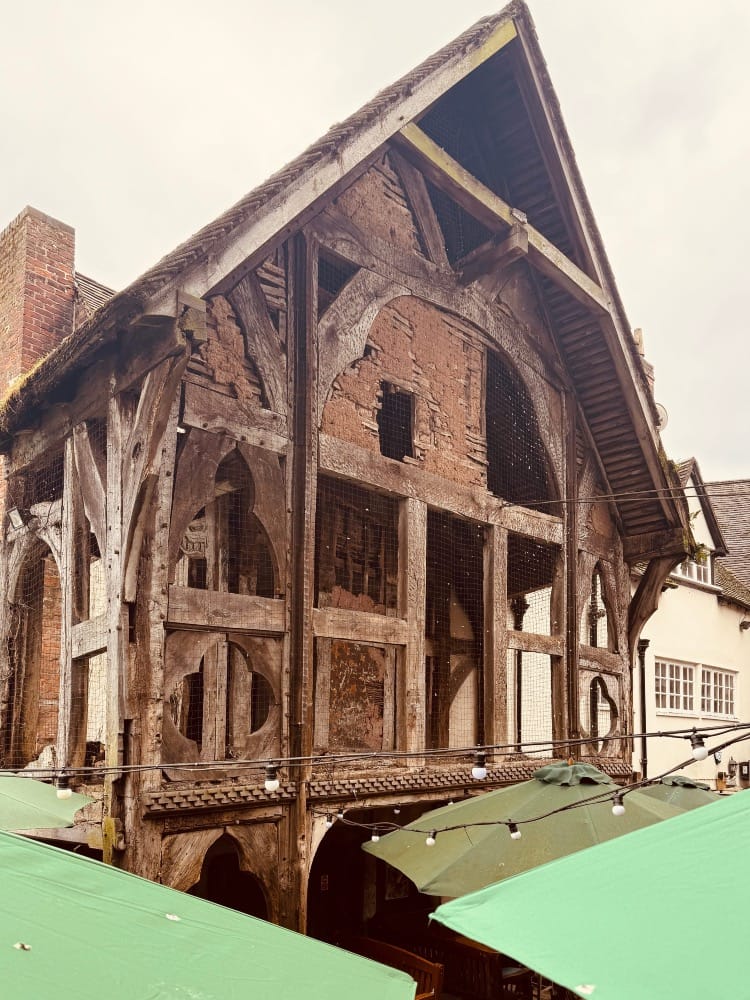
There is something striking about this weathered lattice of timber bones, something that stirs a sense of reverence. Built in 1597 by Nicholas Gibbons, a local lawyer, this three-storey house has endured centuries of change. In the 19th century, it served as the stained glass workshop of Betton and Evans. It was badly damaged by fire in the Second World War, but its fragility was rewarded with an appearance in the 1984 film A Christmas Carol. Still, its frame stands exposed amidst the jocularity of a beer garden – a husk of what it once was – its structure precarious yet oddly enduring.
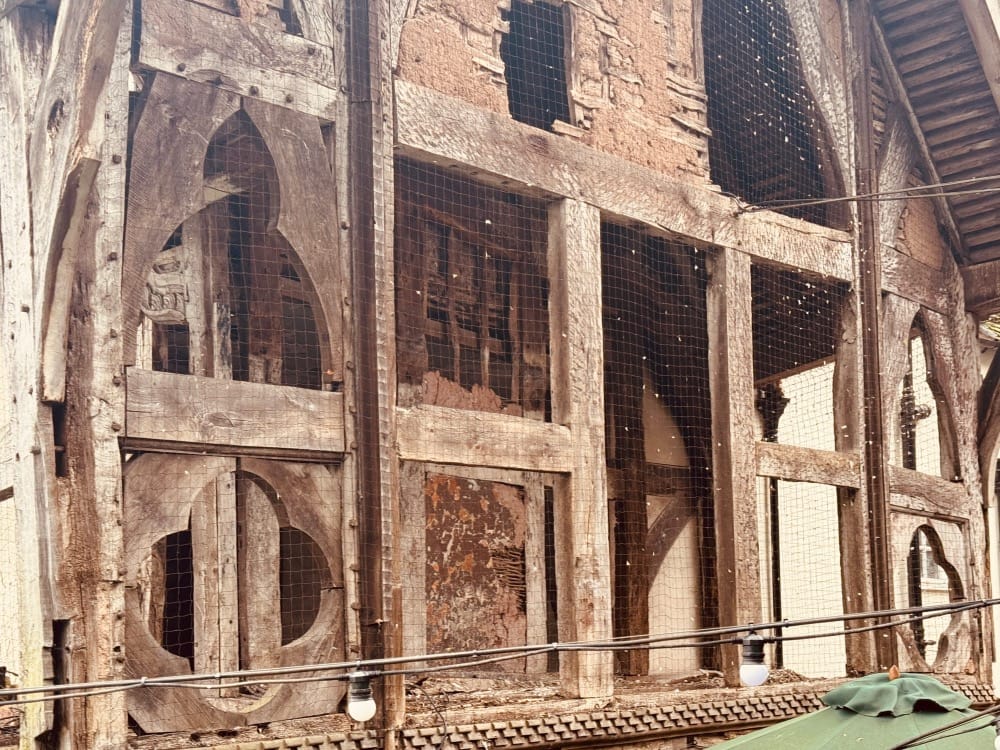
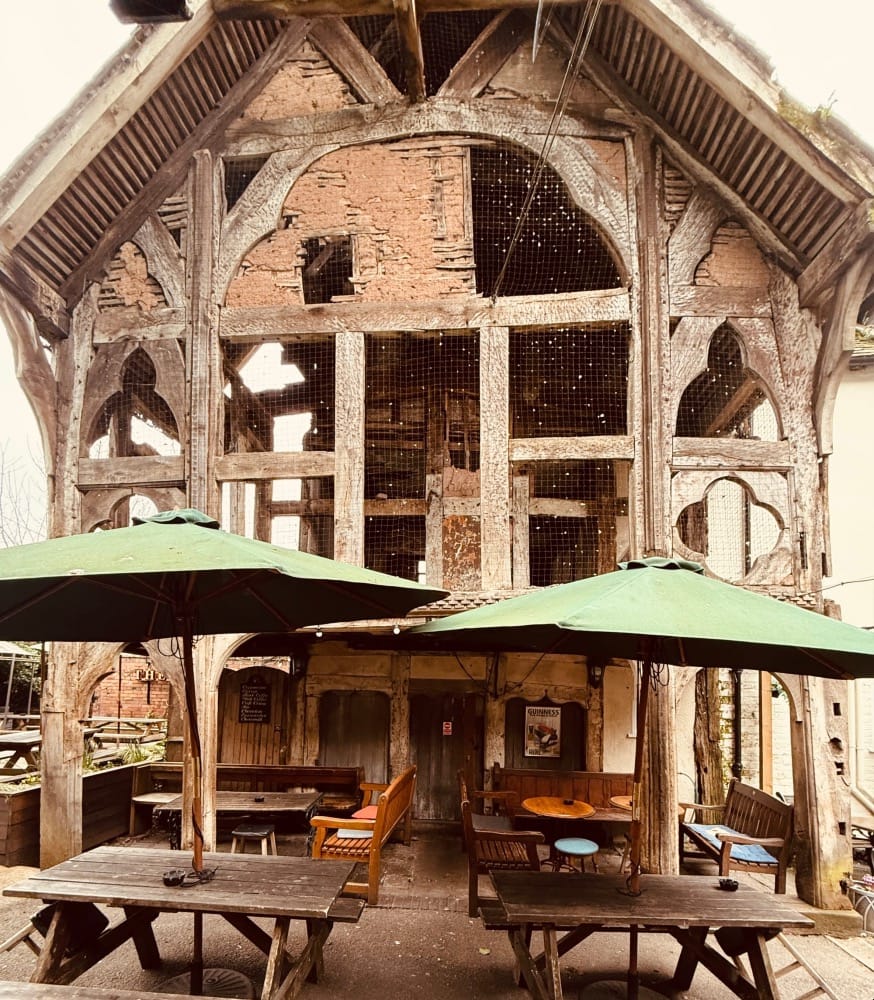
And so, of course, I want to capture Gibbons’ rump of a house, to sketch its weathered form, its organic decay. I trace the lines in my mind, but the cold creeps into my fingers before I can set pen to paper. I retreat into the snug warmth of the pub, order a pint, and turn my attention to the space around me.
As I sketch, the people of this town come and go – their conversations rise and fall. The bar staff change shifts; time dissolves, and outside, the timber framing stands unmoved.
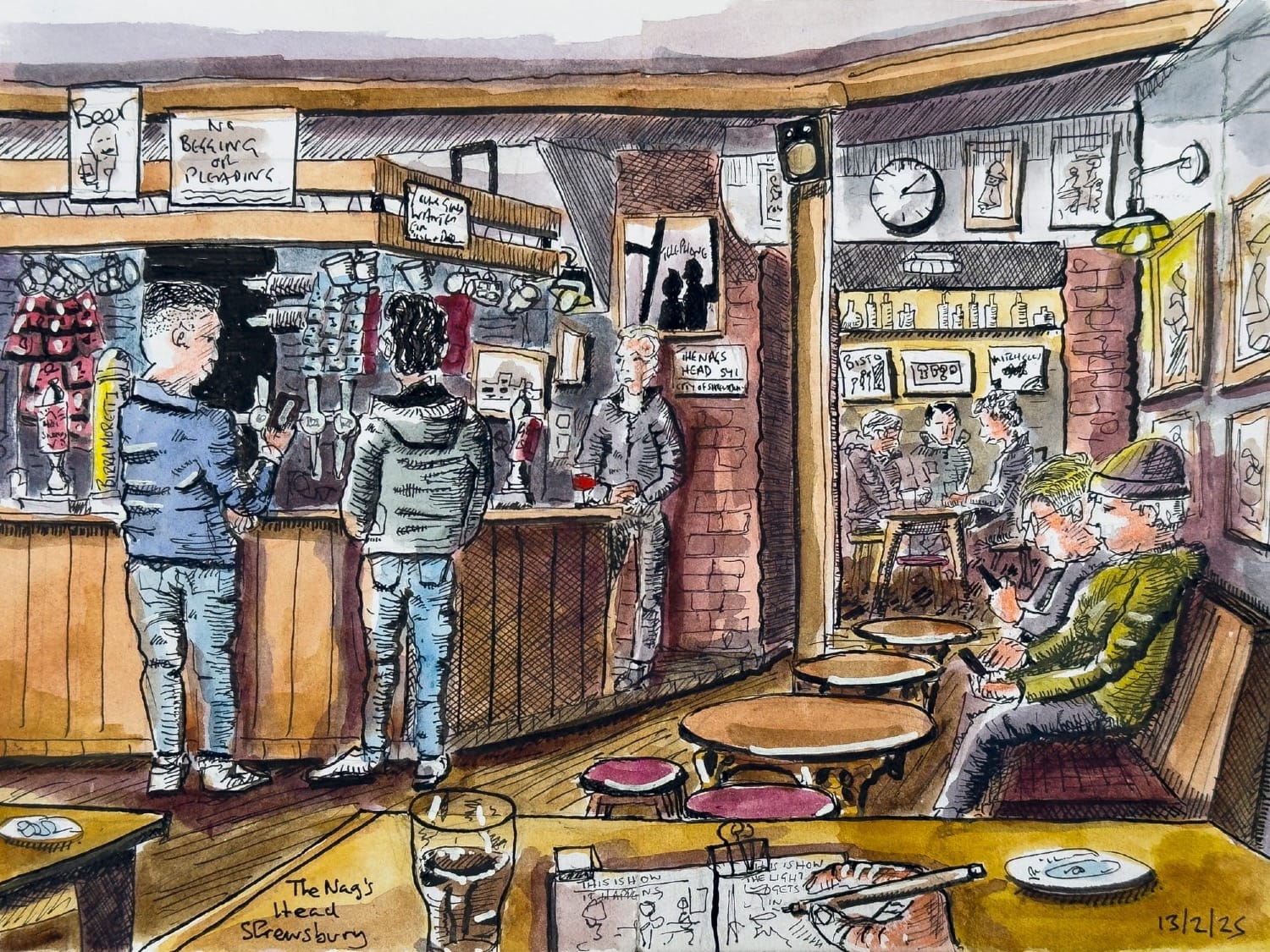
The Rosemary Branch Tavern, Shoreditch, London
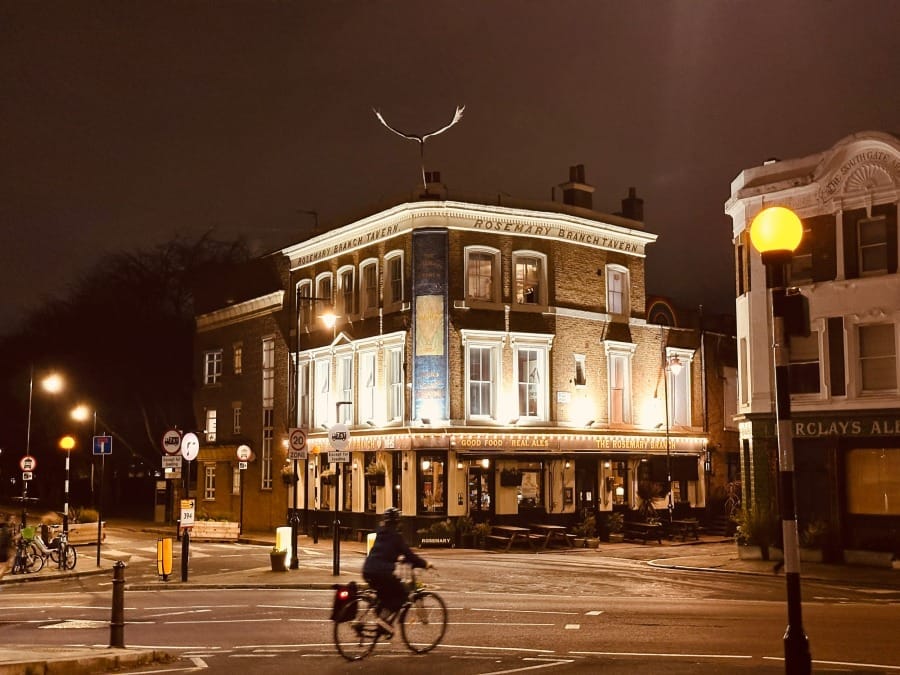
A classic London corner pub with a twist - it has a small theatre upstairs. Warm and friendly staff - good pub grub. Friendly locals.
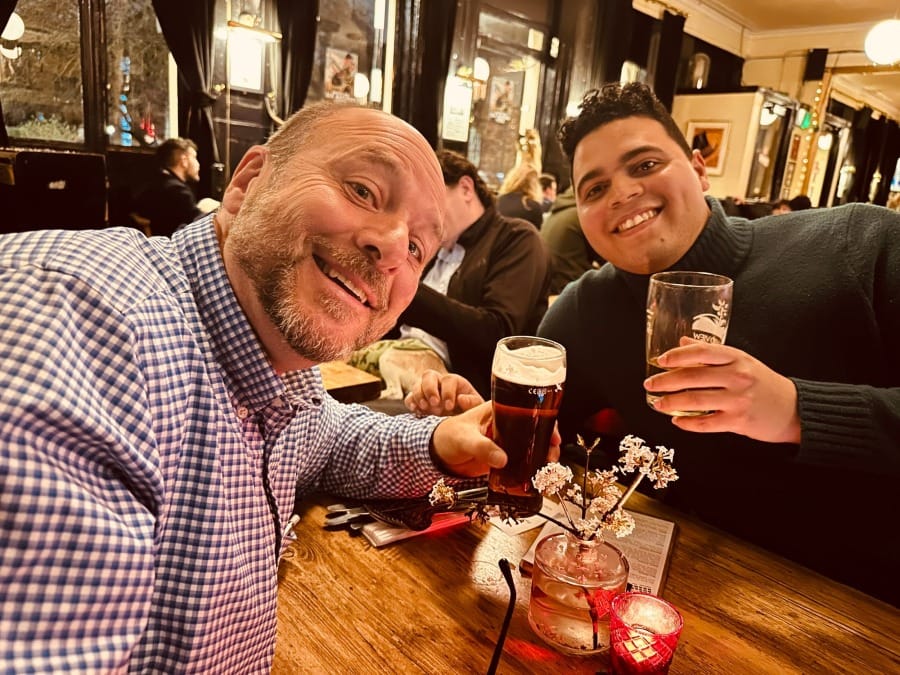
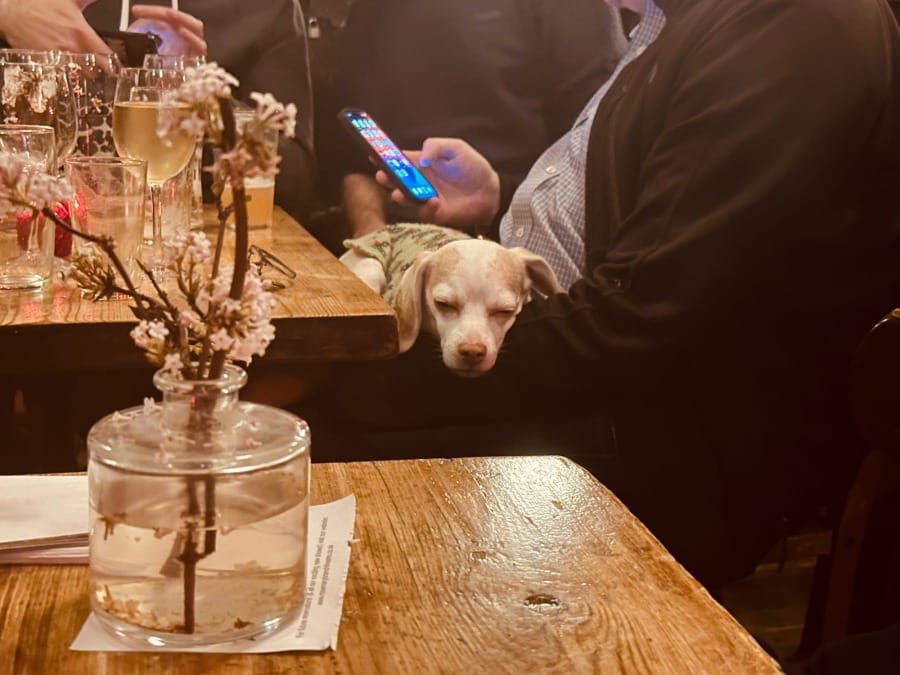
Whilst there, with the team from Ken Sisk productions, we attended one of the last gigs by Cleo Sylvestre (Honey B Mama), the first woman to record with the Rolling Stones.
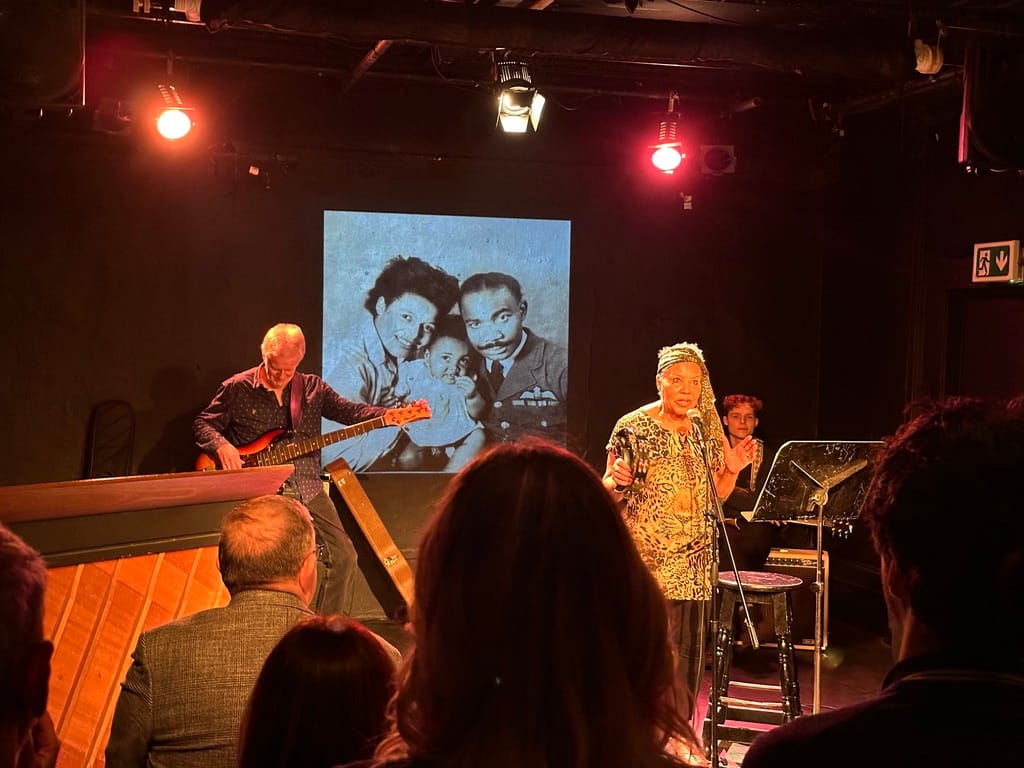
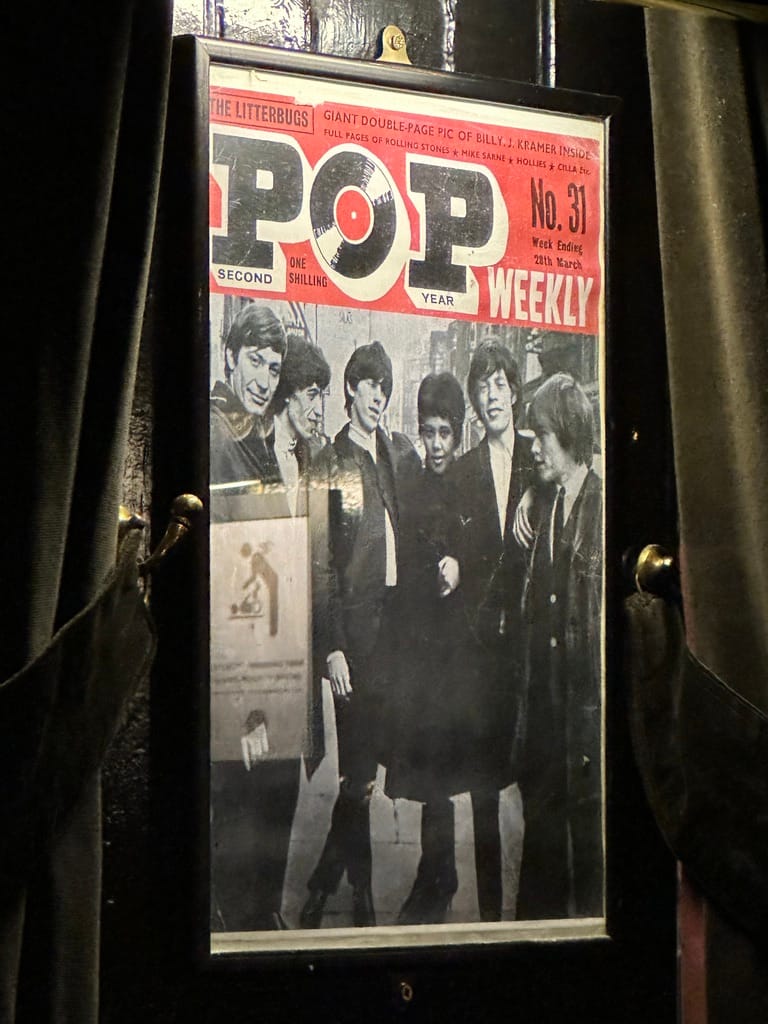
Victoria Inn, Durham, County Durham
The Victoria Inn has an original Victorian interior (fires roaring).
The Built in 1899, it is a Grade II listed pub with an exceptionally preserved Victorian interior - snug rooms, etched glass, and open fires. Still family-run, it’s on CAMRA’s National Inventory of Historic Pub Interiors, serving well-kept cask ales amid genuine warmth and time-layered atmosphere.
I managed to capture a quick sketch using my Art Graf.
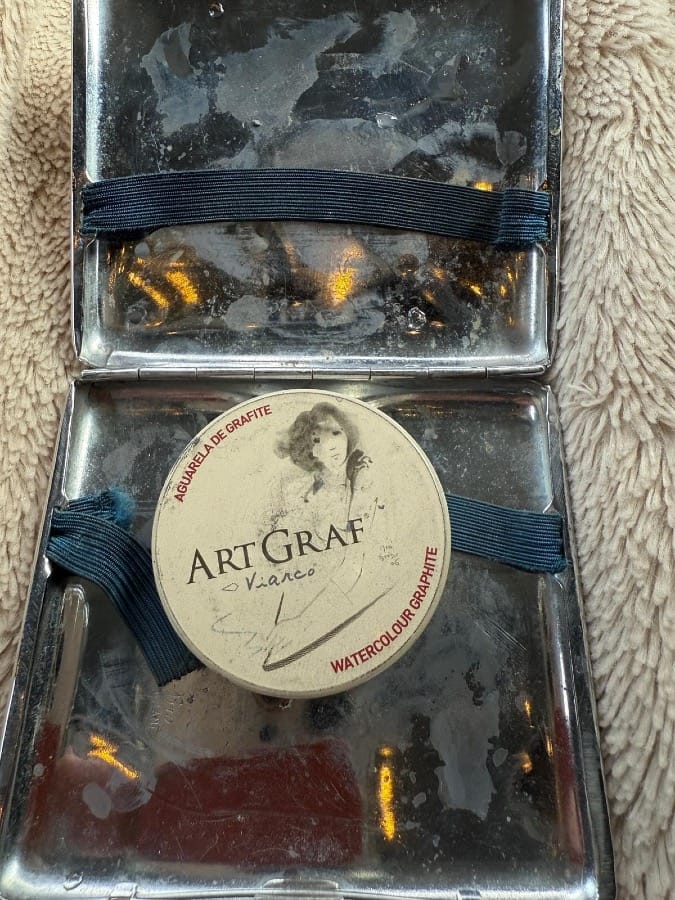
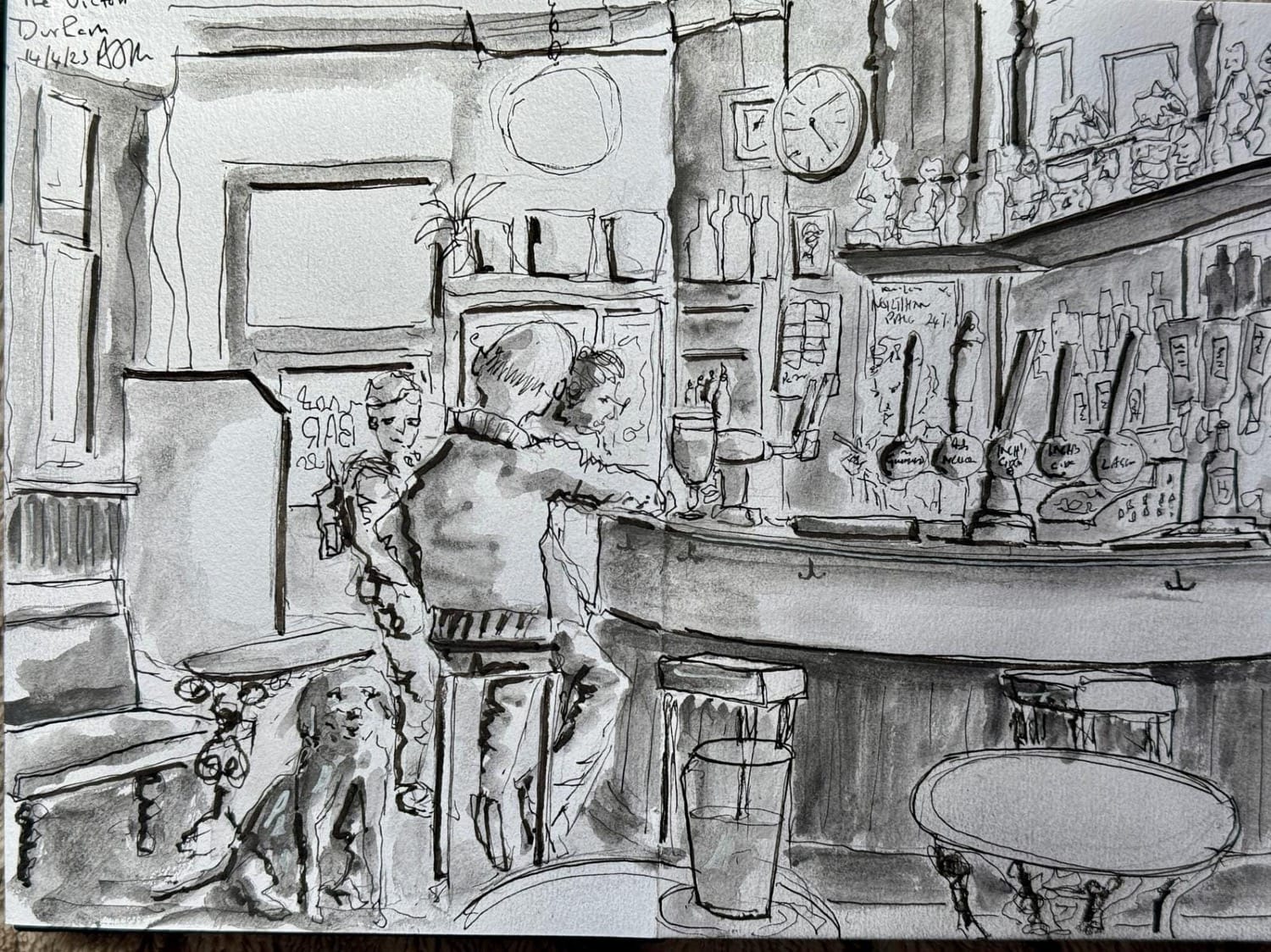
The Rose & Crown, Ludlow, Shropshire
The Rose & Crown has one of those delicious entry points that is full of intrigue and mystery - through a ginnel and into a courtyard. The Deeds of this place date from 1102 and it was recorded as The Rose and Crown from the C13th.
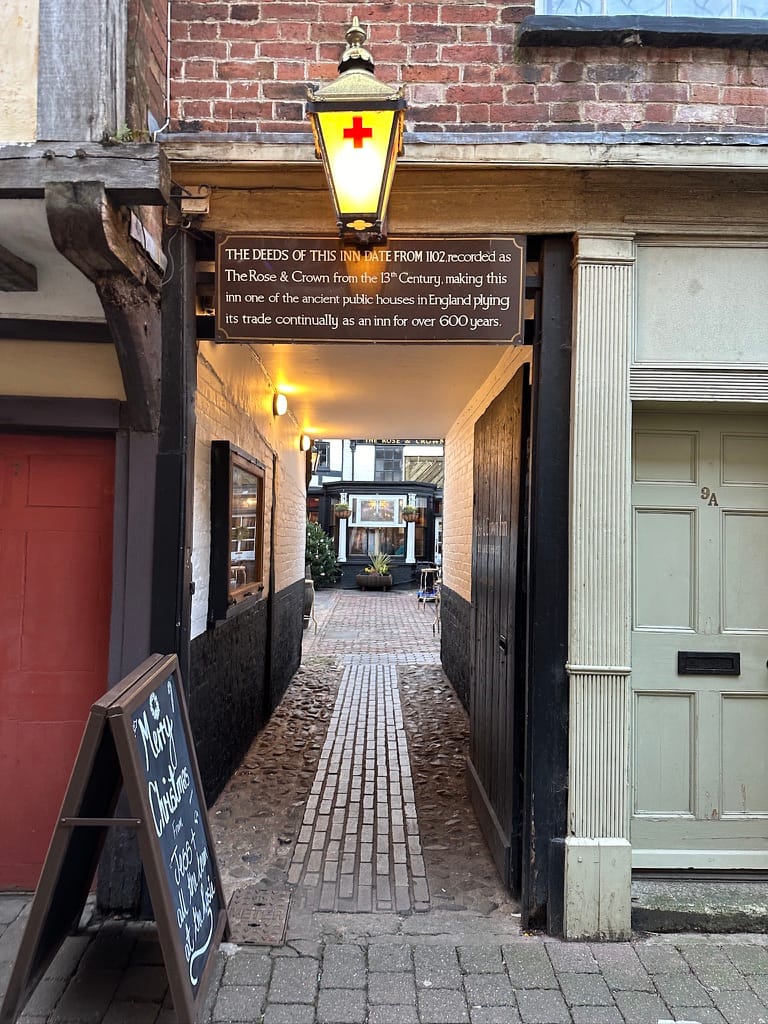
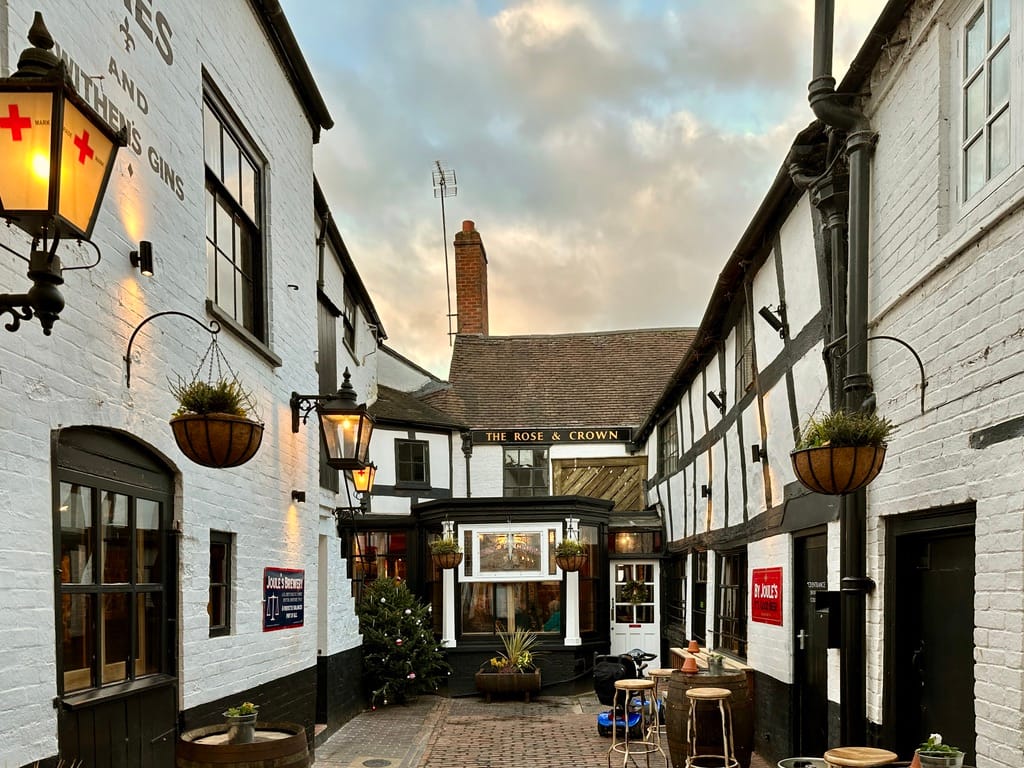
Somebody tells me that the best bits are around the side and at the back of the pub. They show me the remains of a medieval building that was adjacent to the chantry cloisters - a building, perhaps, used by the chantry priests themselves.
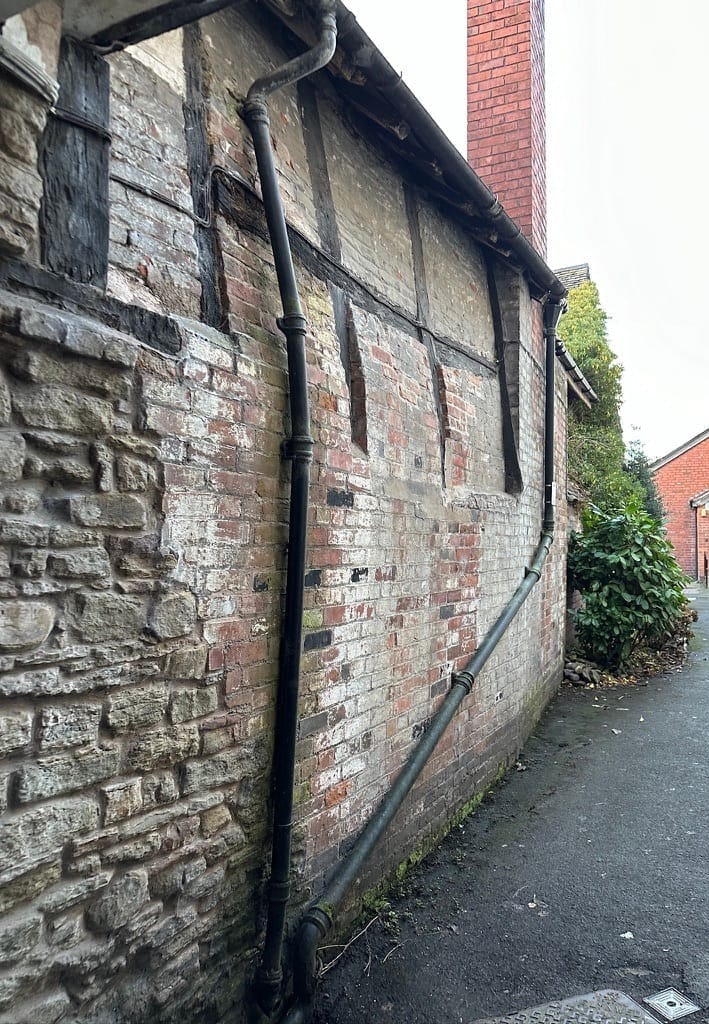
A building for archaeologists.
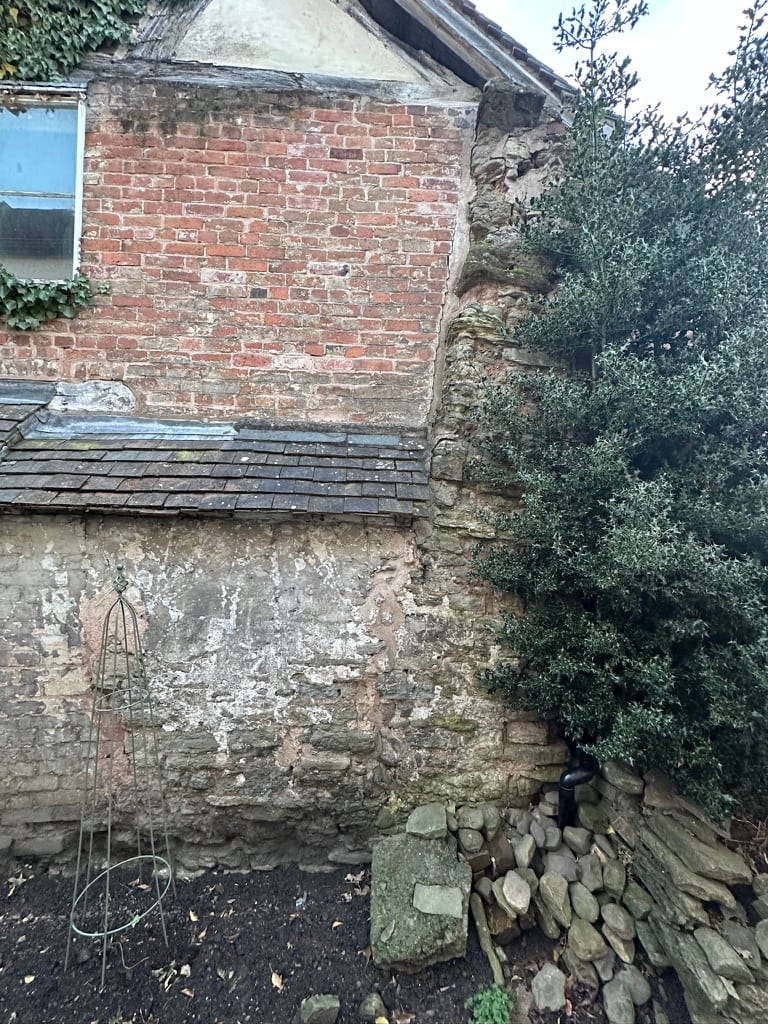
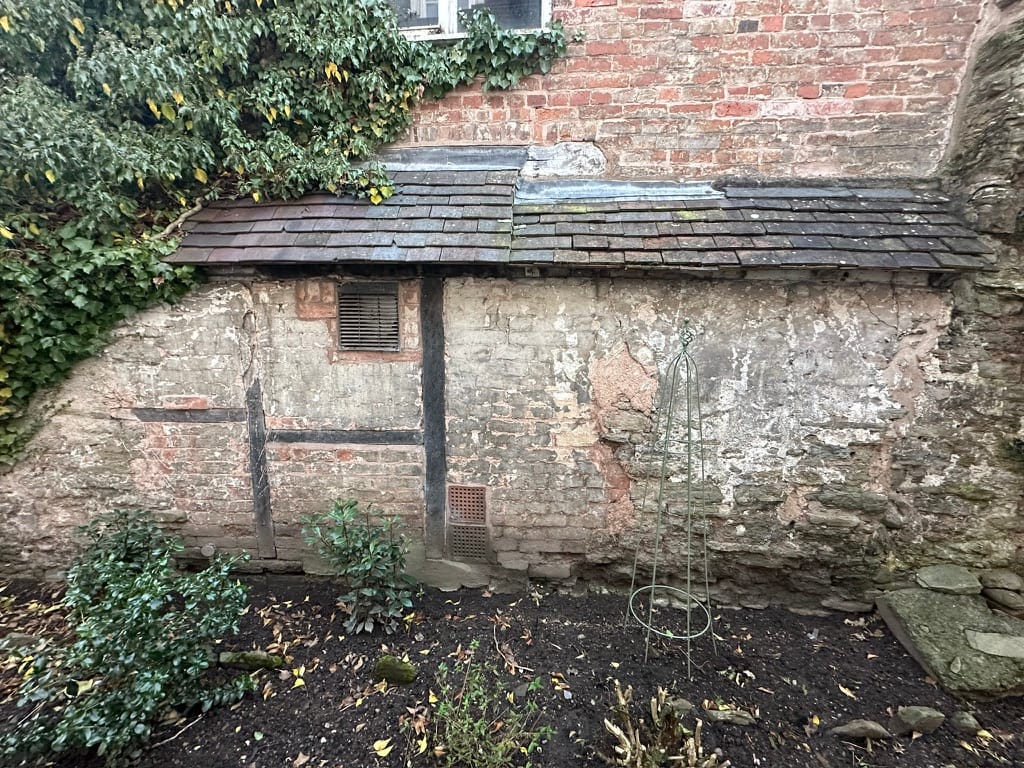
They tell me that part of the medieval structure is caught in the pub wall like a fly in amber, and then leave me to have my pint in the most magical of pubs.
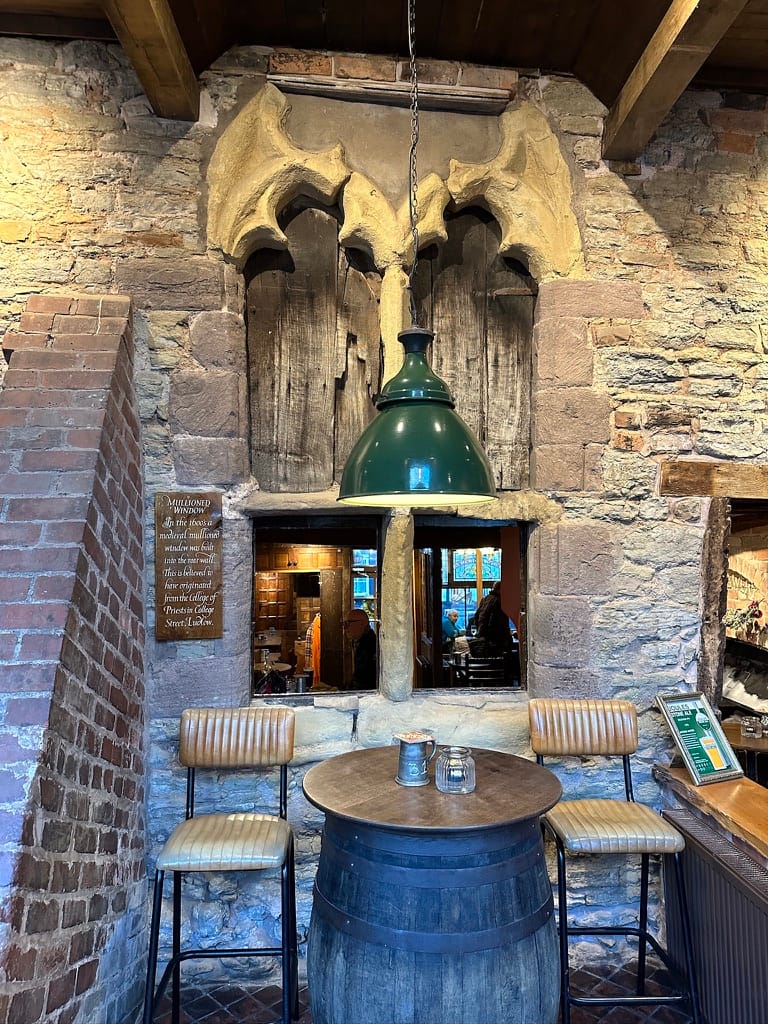
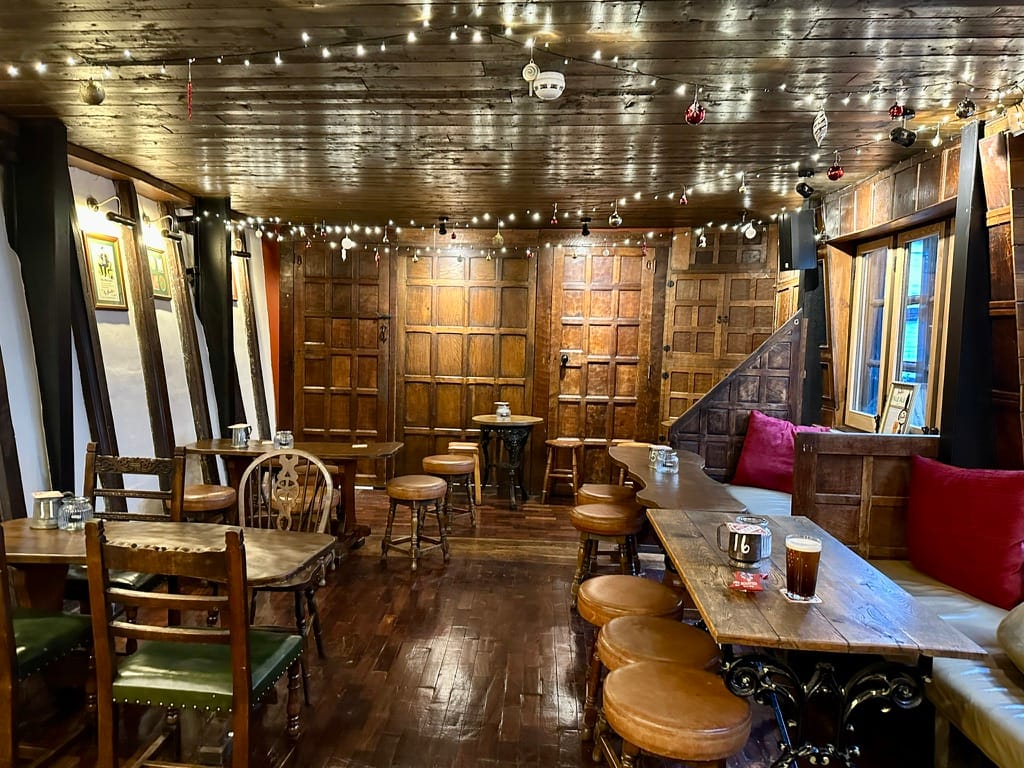
The Old Mill, Harnham, Wiltshire
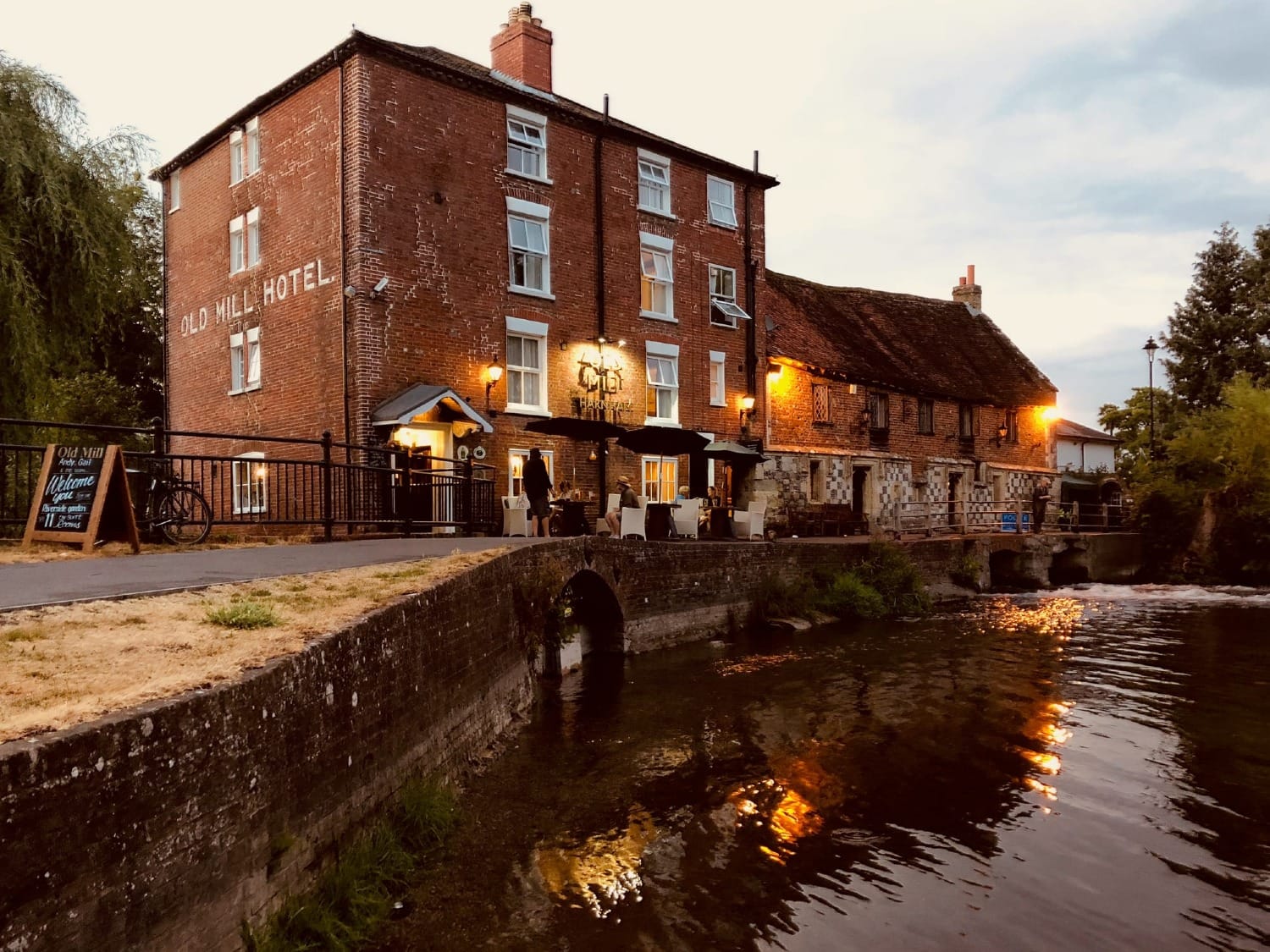
Location, Location, Location.
The Old Mill at Harnham, near Salisbury, began as a medieval corn mill powered by the confluence of the Nadder and Avon.
Now a pub, its main appeal lies in its setting - sitting alongside the mill race, looking out across the famous Harnham Water Meadows. From these parts, the view towards Salisbury Cathedral is the same one immortalised by John Constable in his painting Salisbury Cathedral from the Meadows.
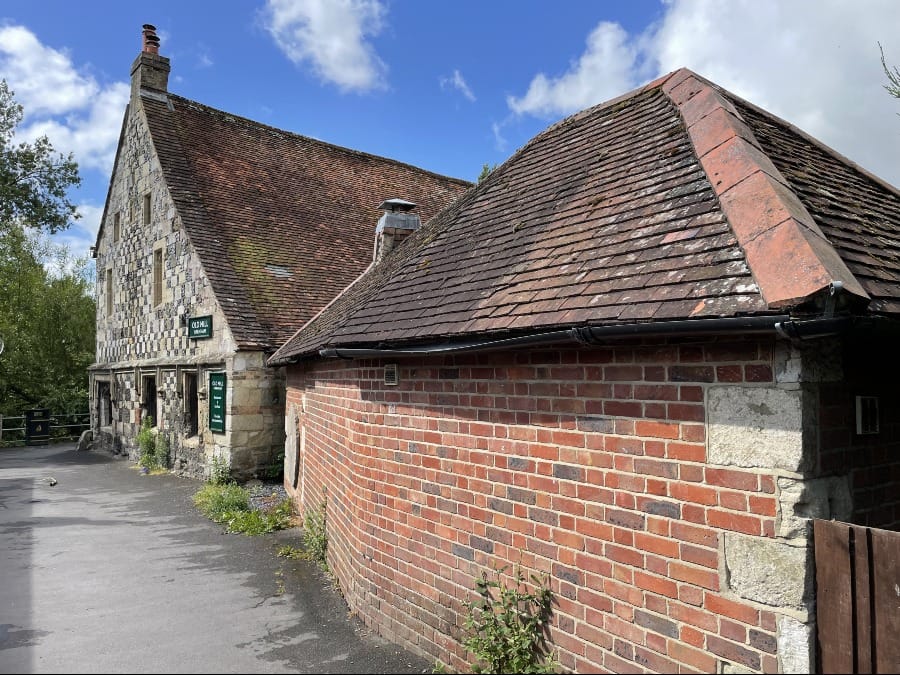
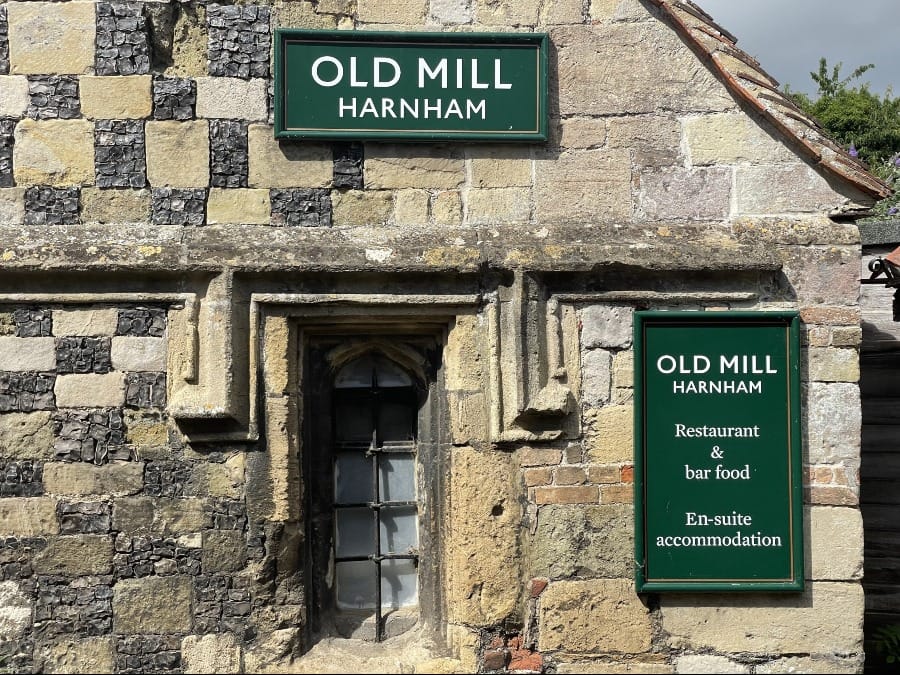
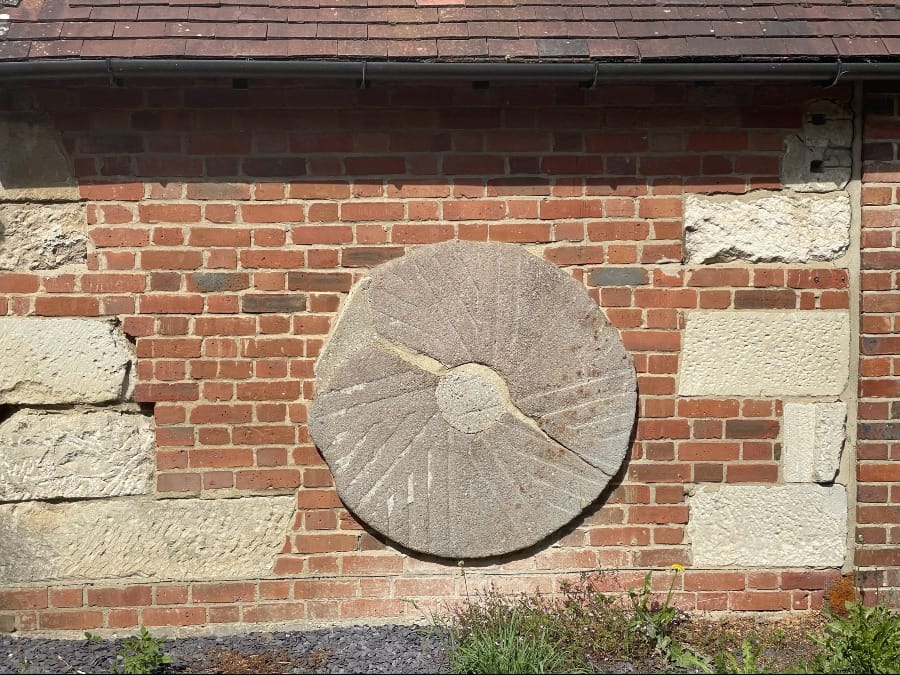
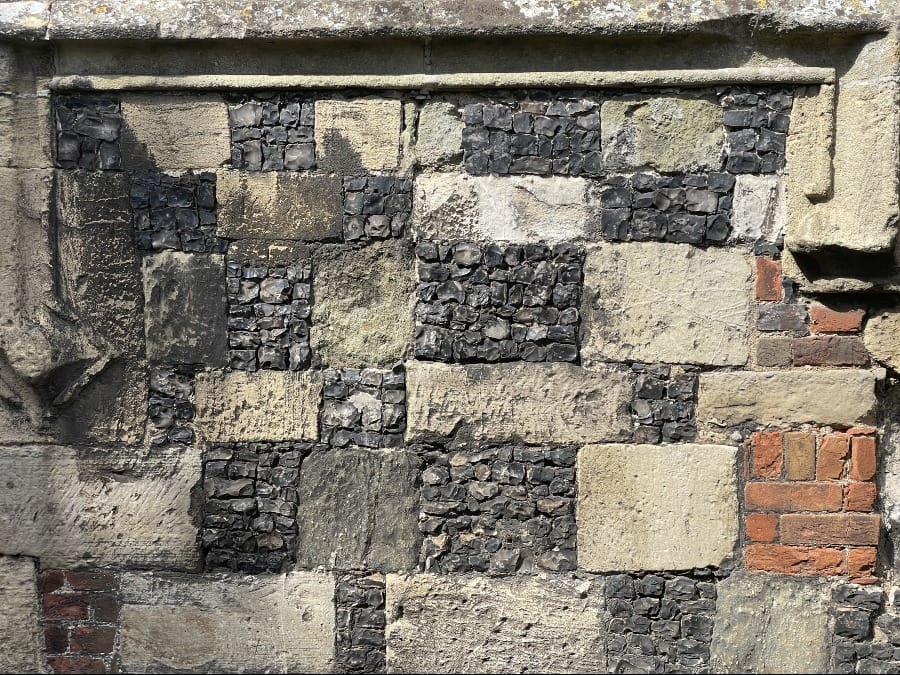
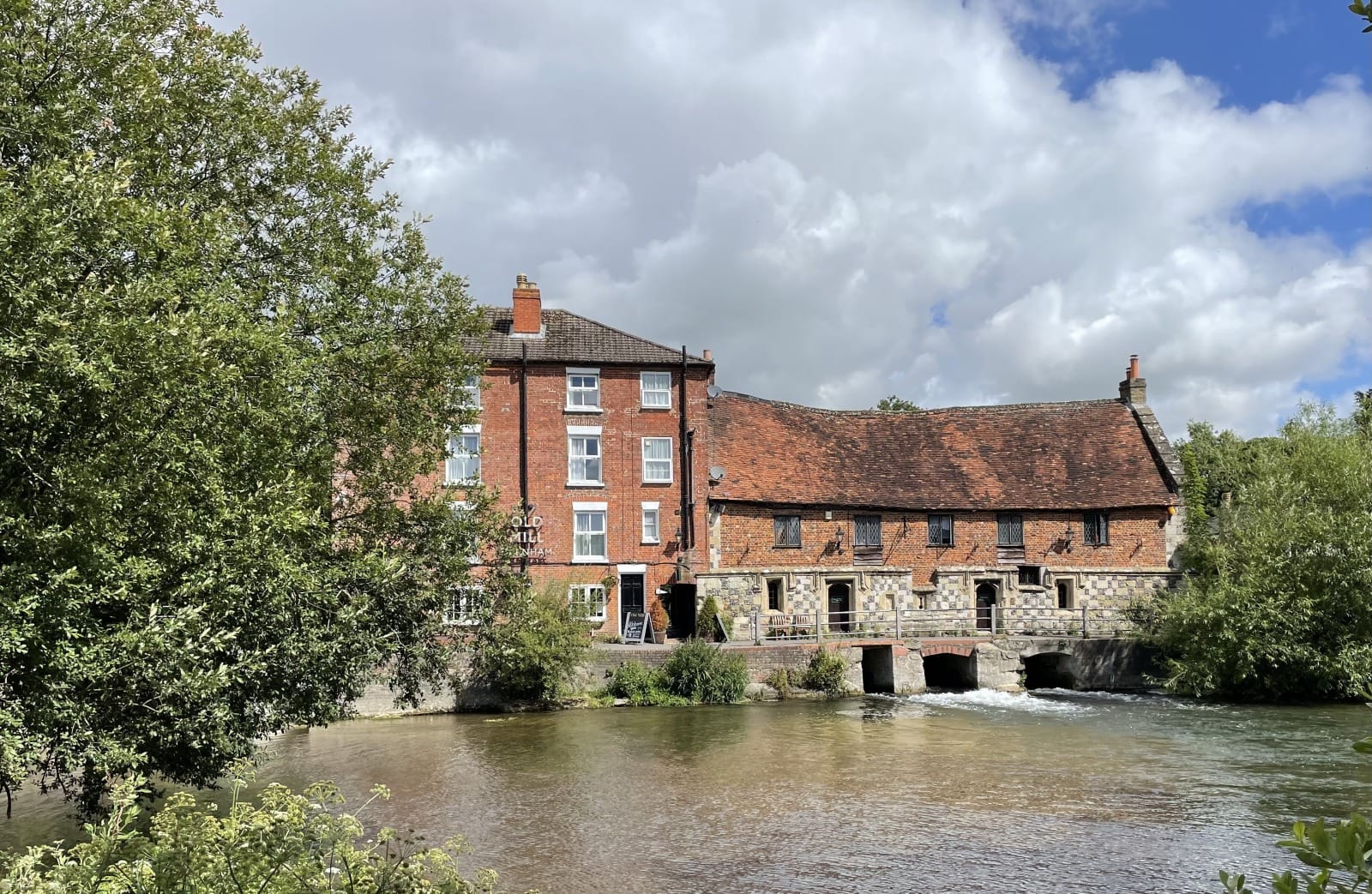
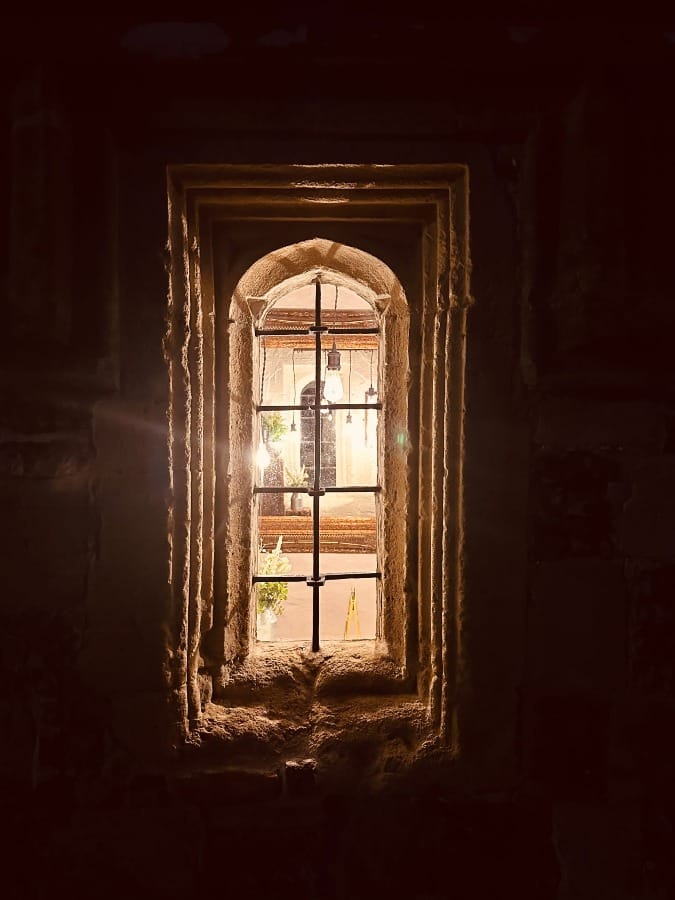
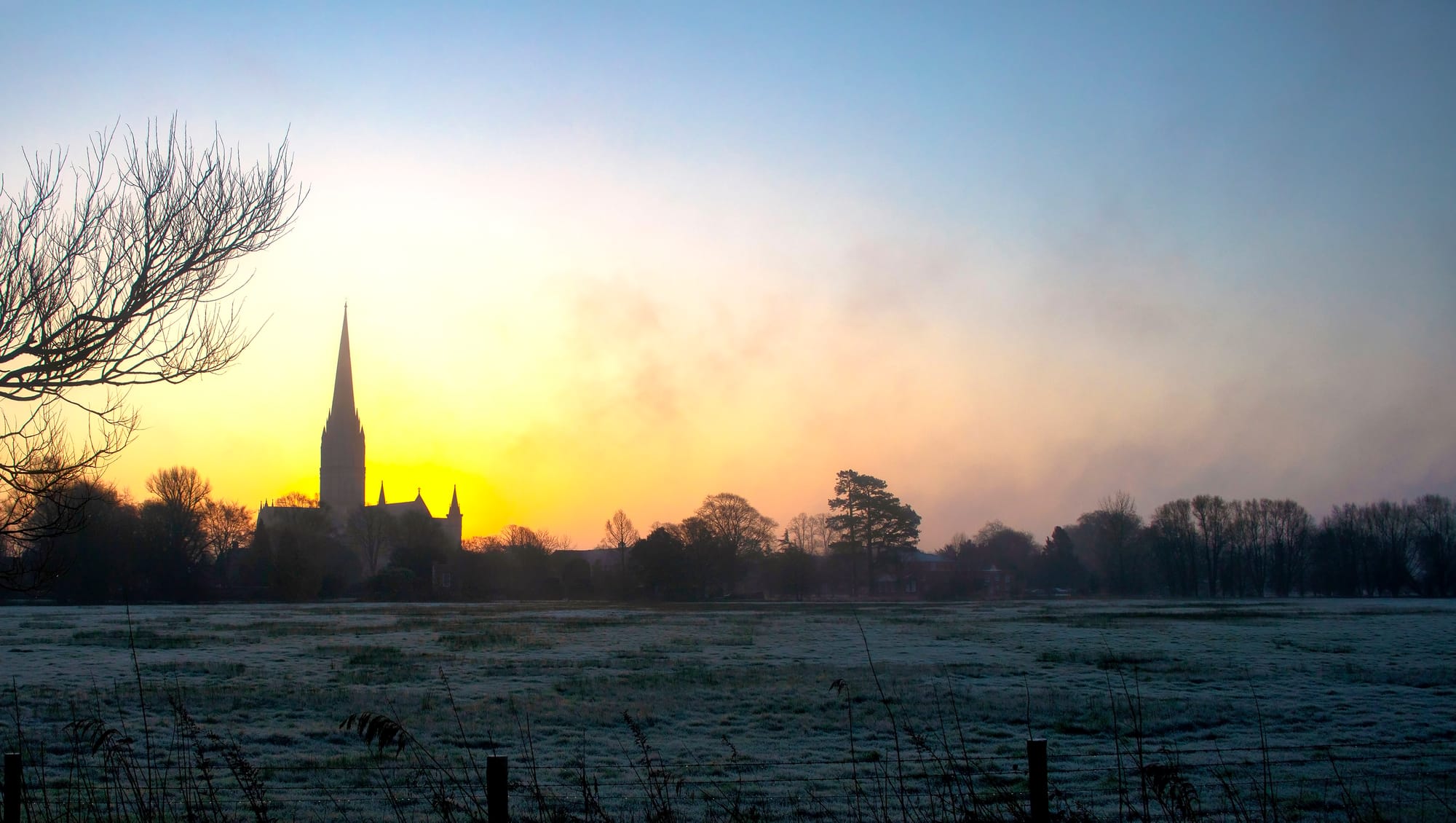
The Angel Inn, Lichfield, Staffordshire
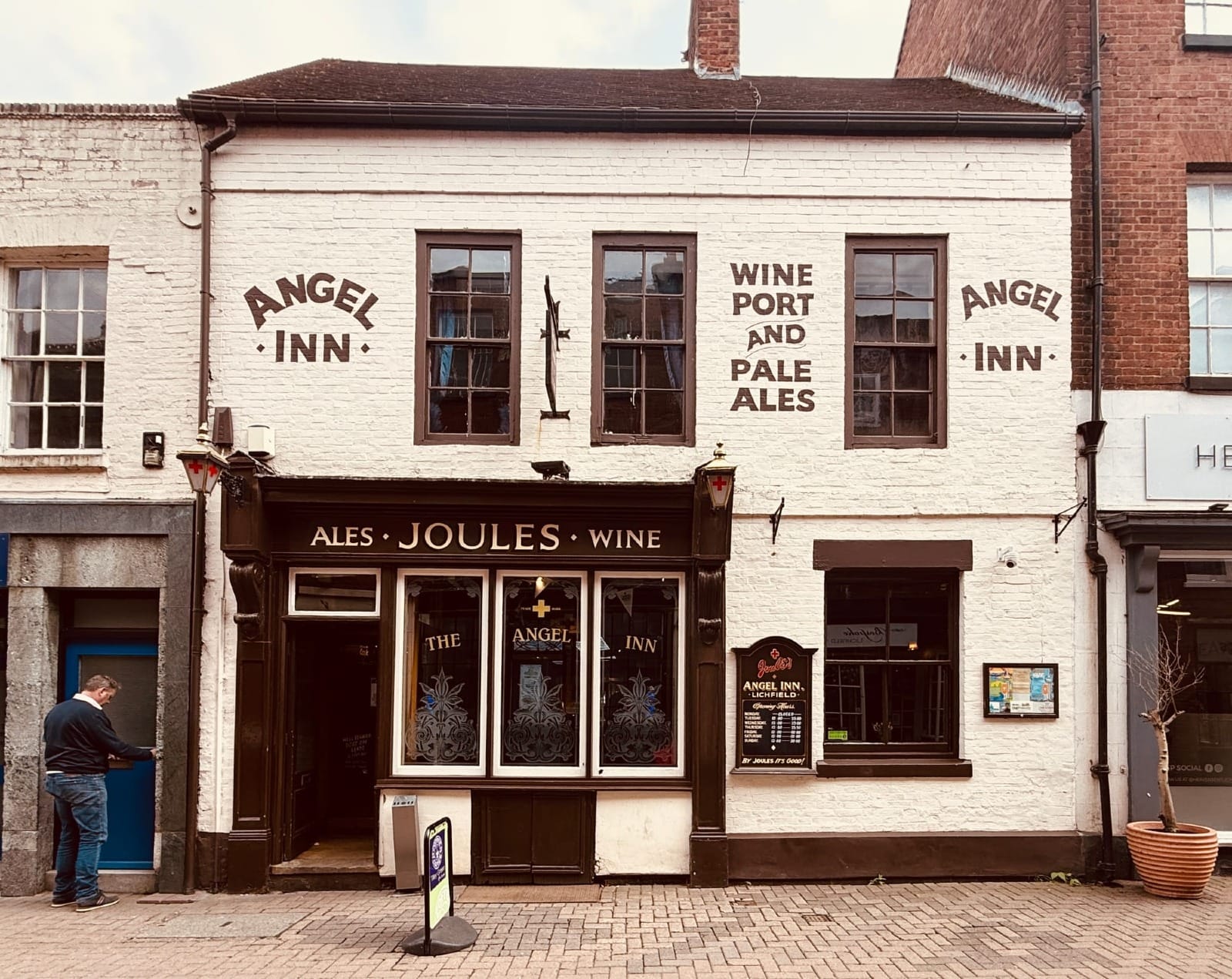
The Angel Inn, Lichfield, dates from the early 18th century and is one of England’s few surviving parlour pubs - small, domestic-style inns where drinkers once gathered in front rooms rather than public bars.
It retains its intimate layout, traditional ales, and rare glimpse into pre-Victorian pub life and social custom. Used the Art Graf again to capture the interior.
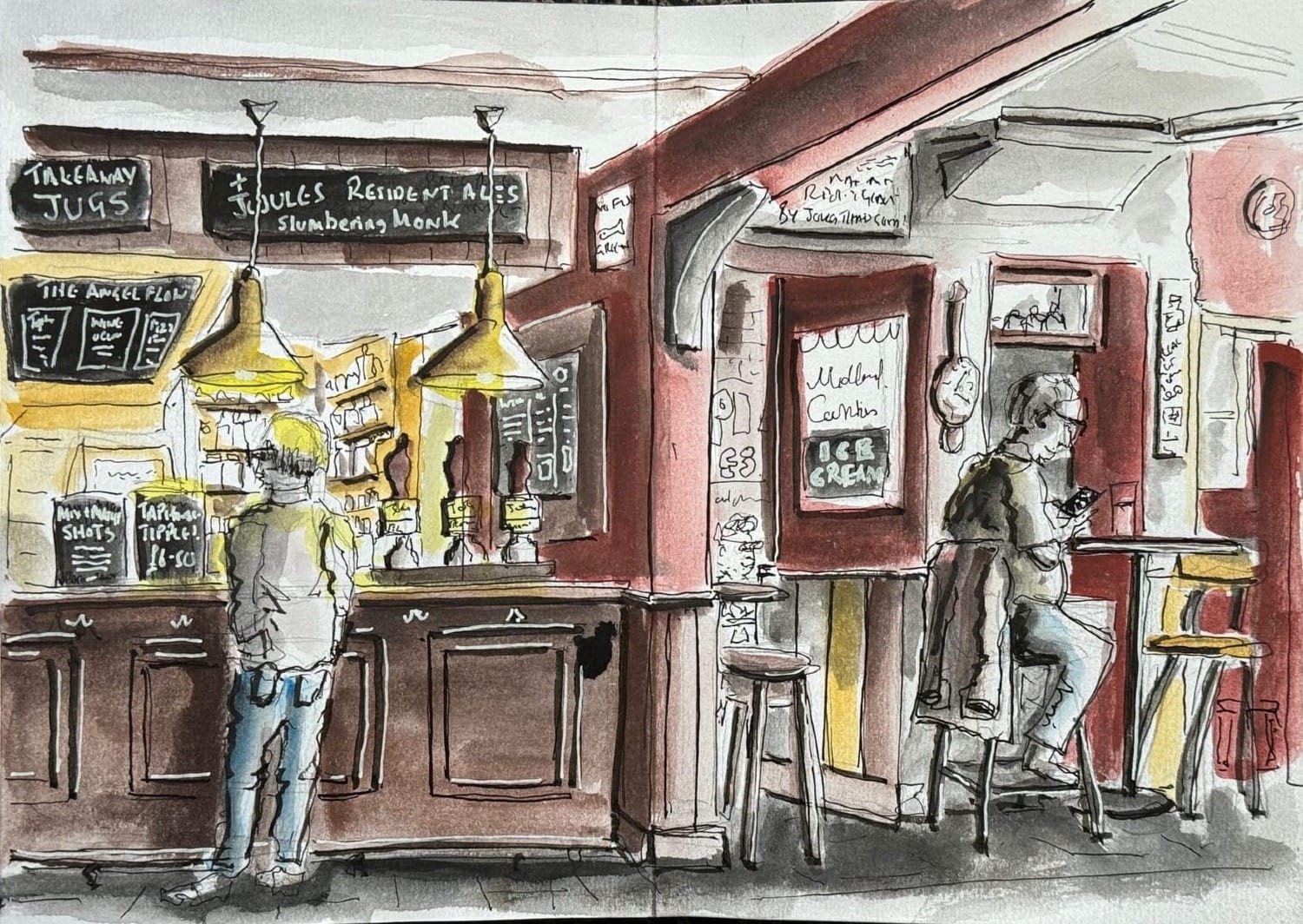
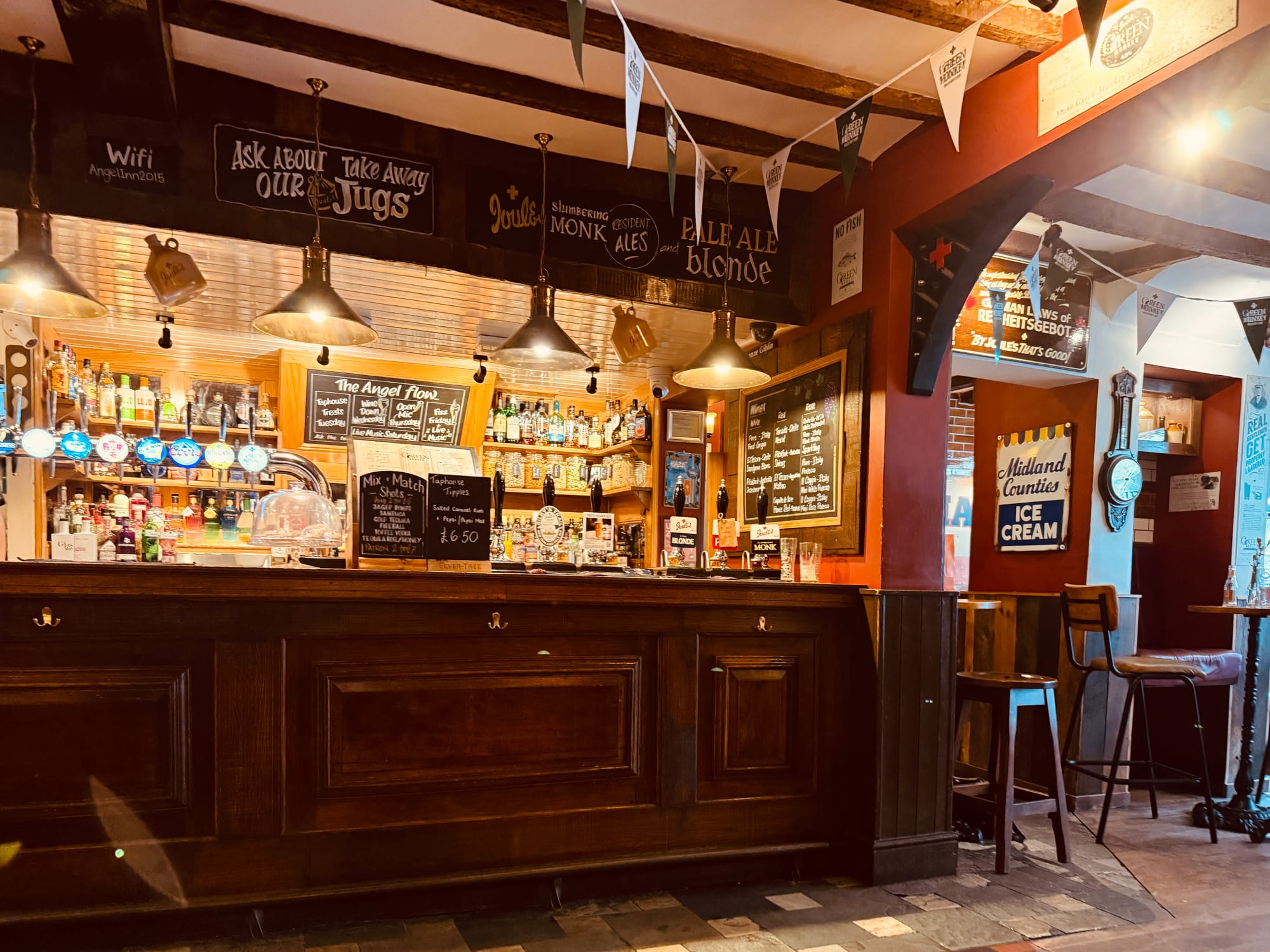
Broad Street Social, Bury, Lancashire.
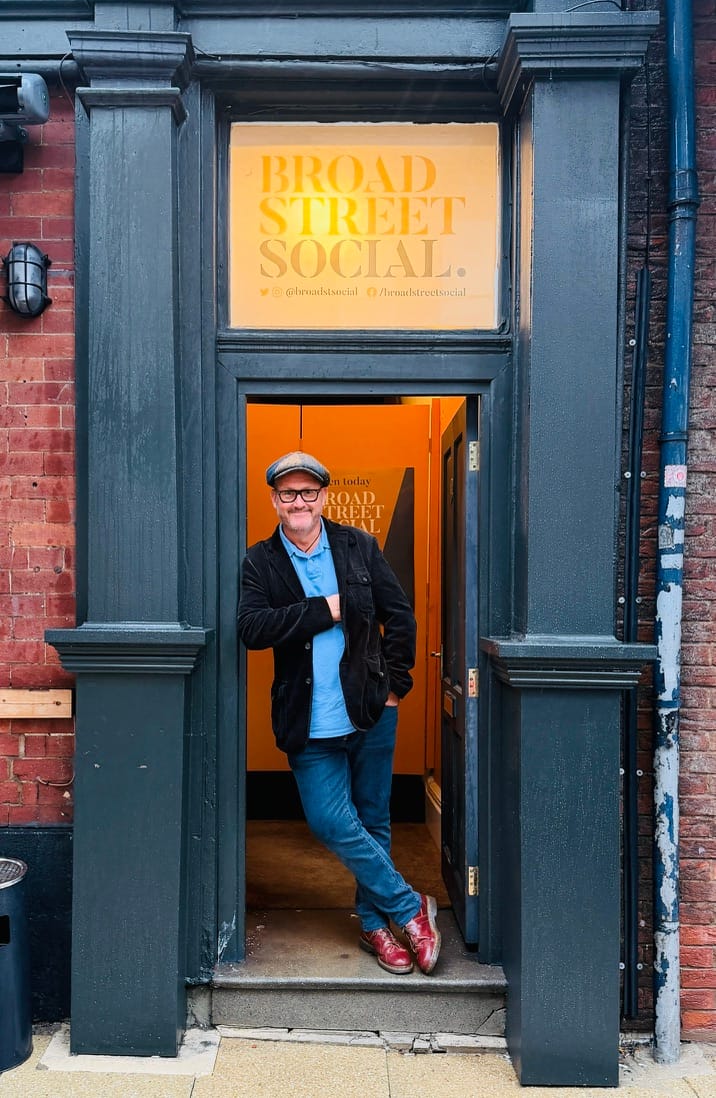
My local when I’m back in Bury - a divine little hideaway tucked into the town’s cultural quarter.
Looked after with care by Jen, it’s one of those places that quietly gets under your skin. The bar’s lined with real ales from local breweries, and the calendar’s full of life - from drawing sessions to craft nights. I’m often found in the corner with a pint in hand, sketching the ebb and flow of people coming and going.
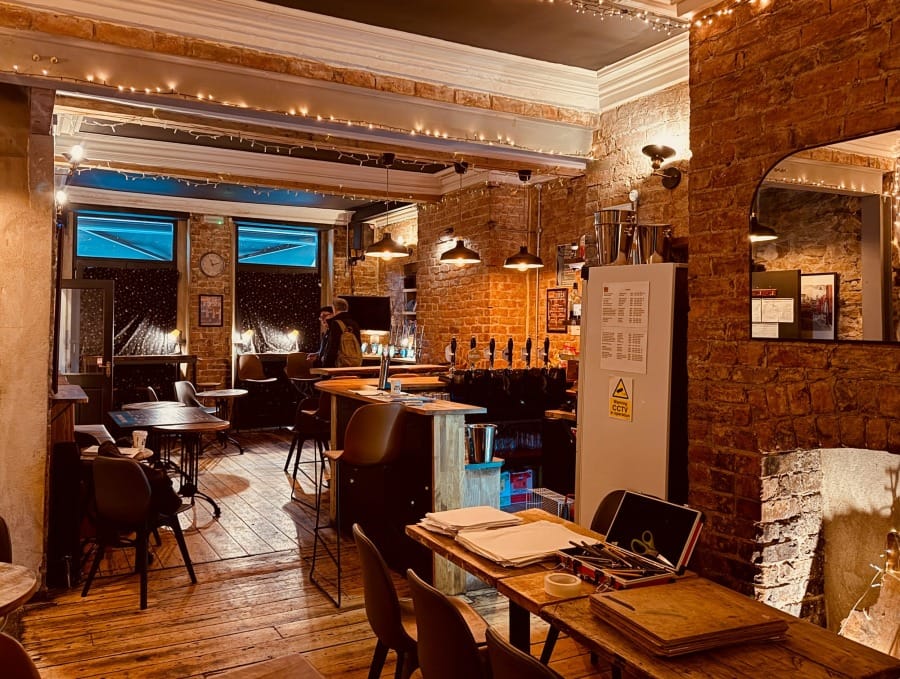
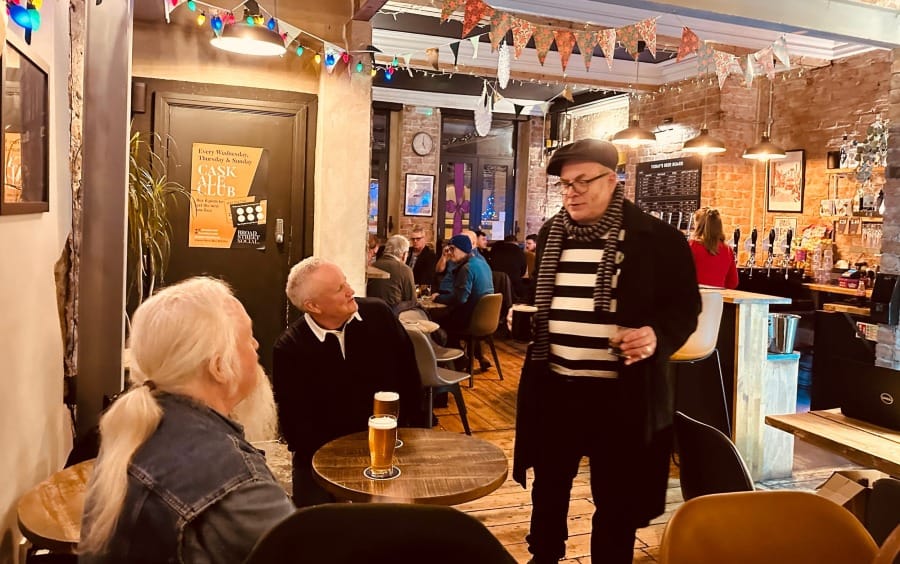
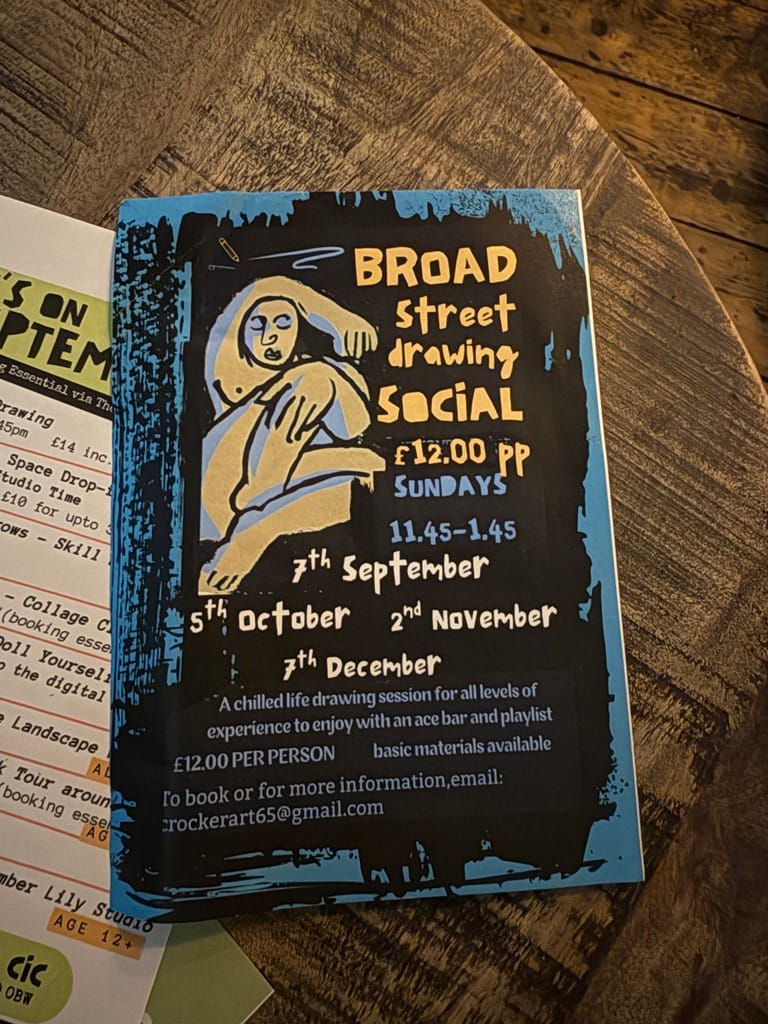
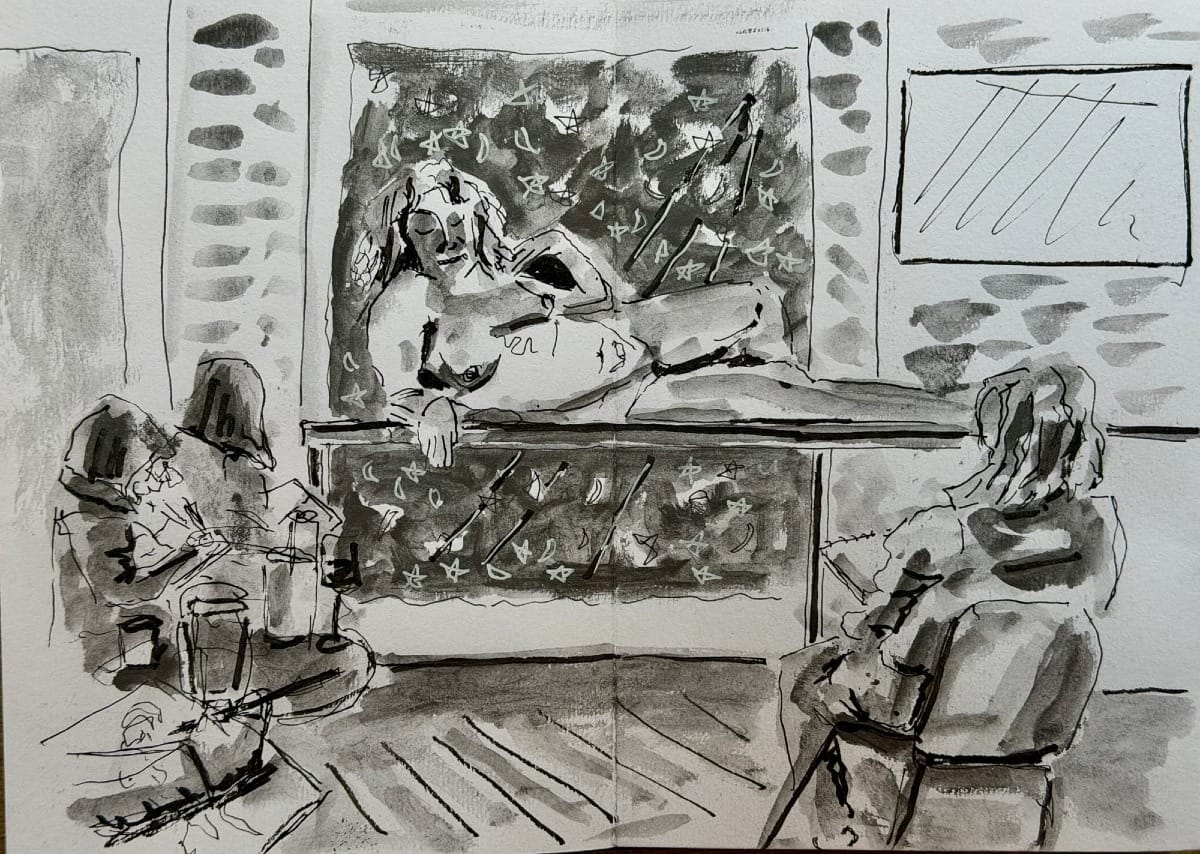
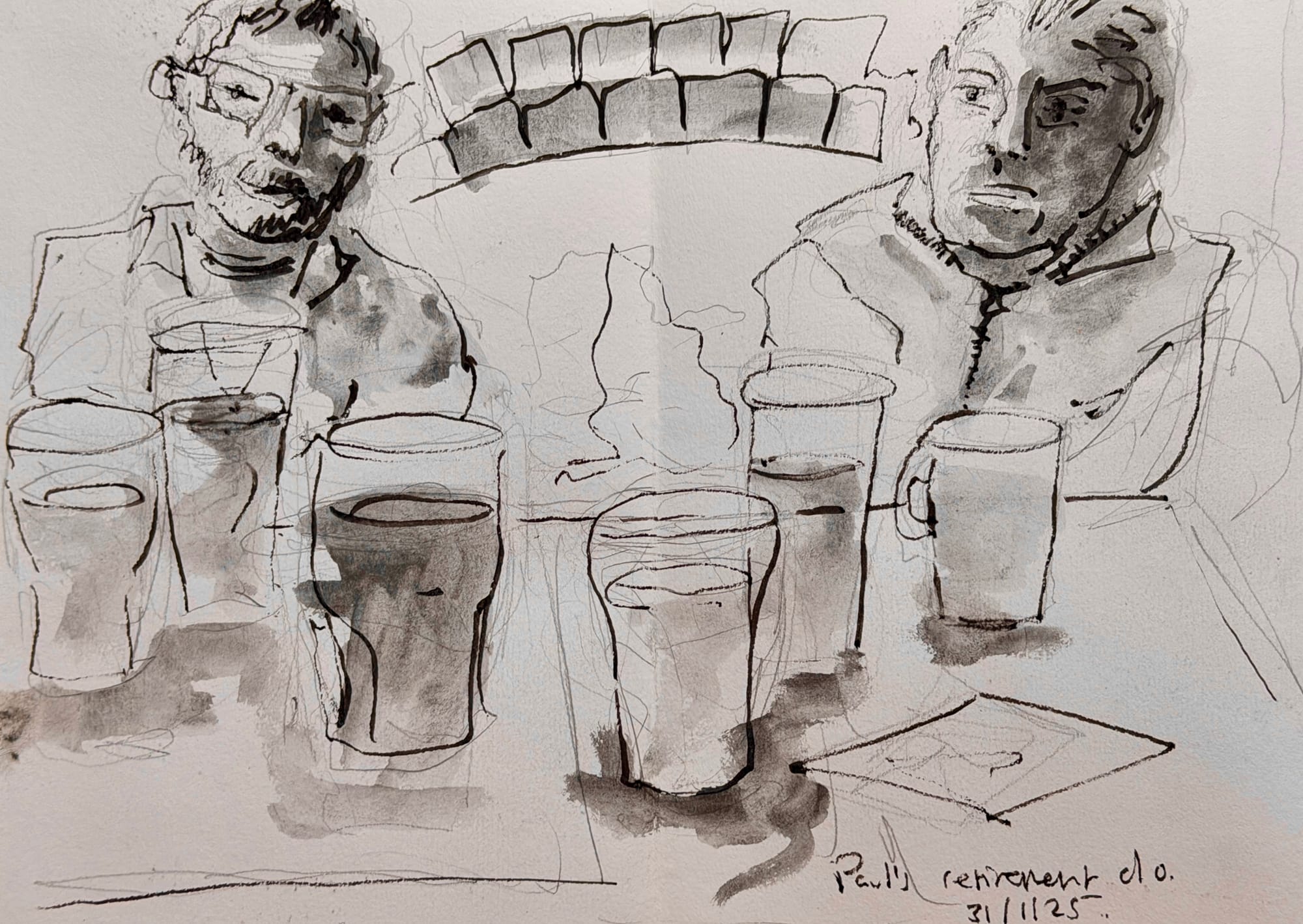
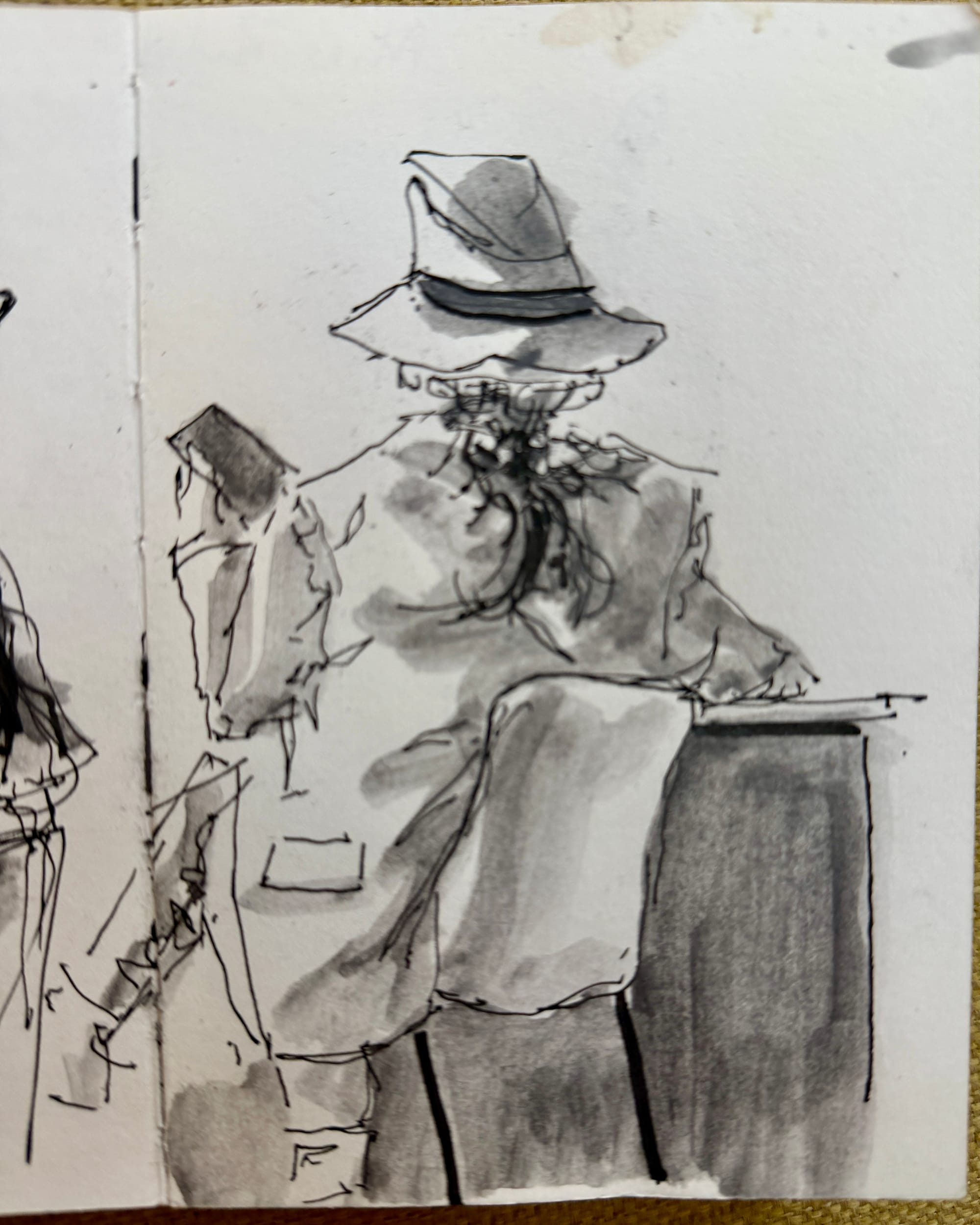
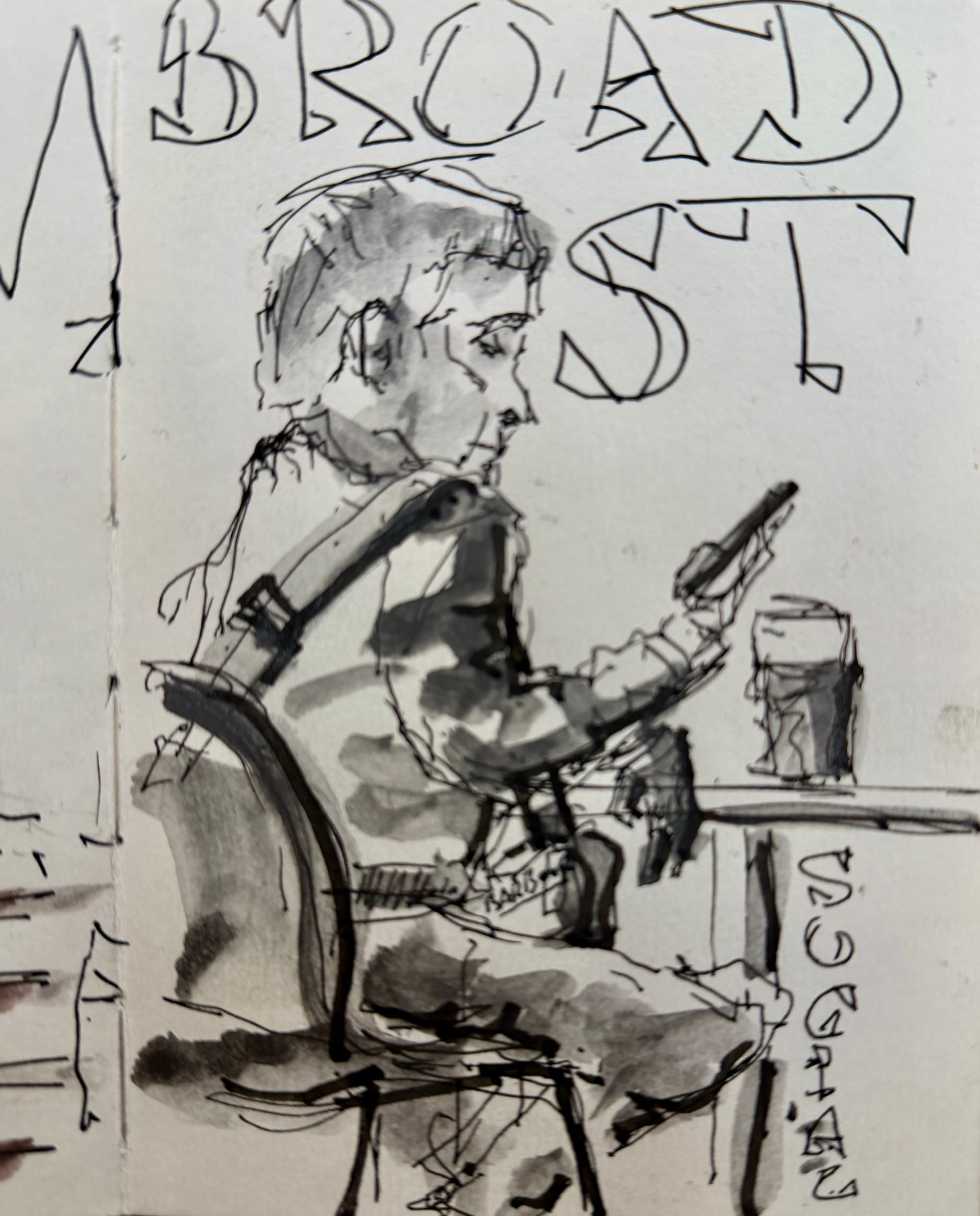
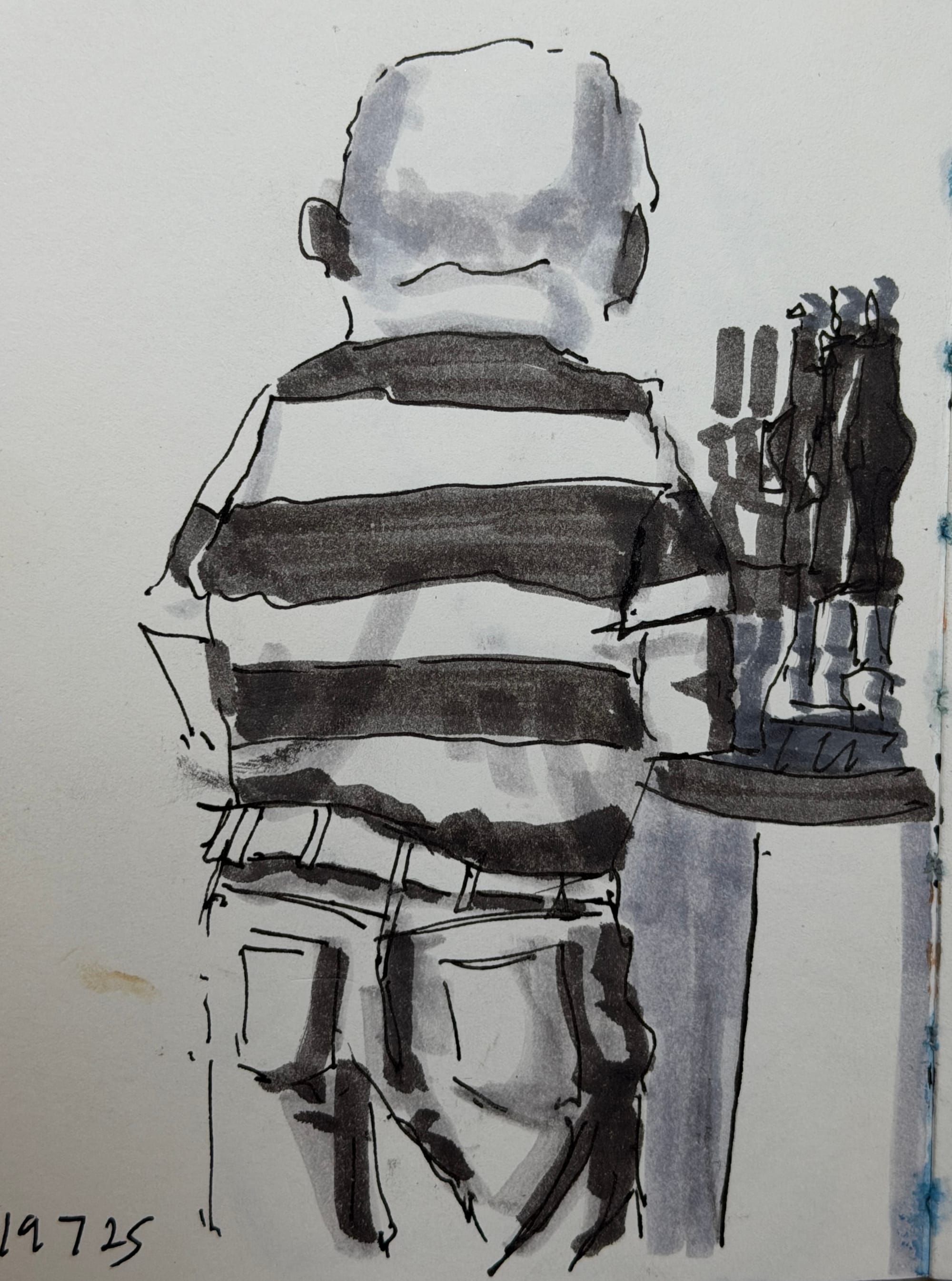
English Inns by Thomas Burke 1934
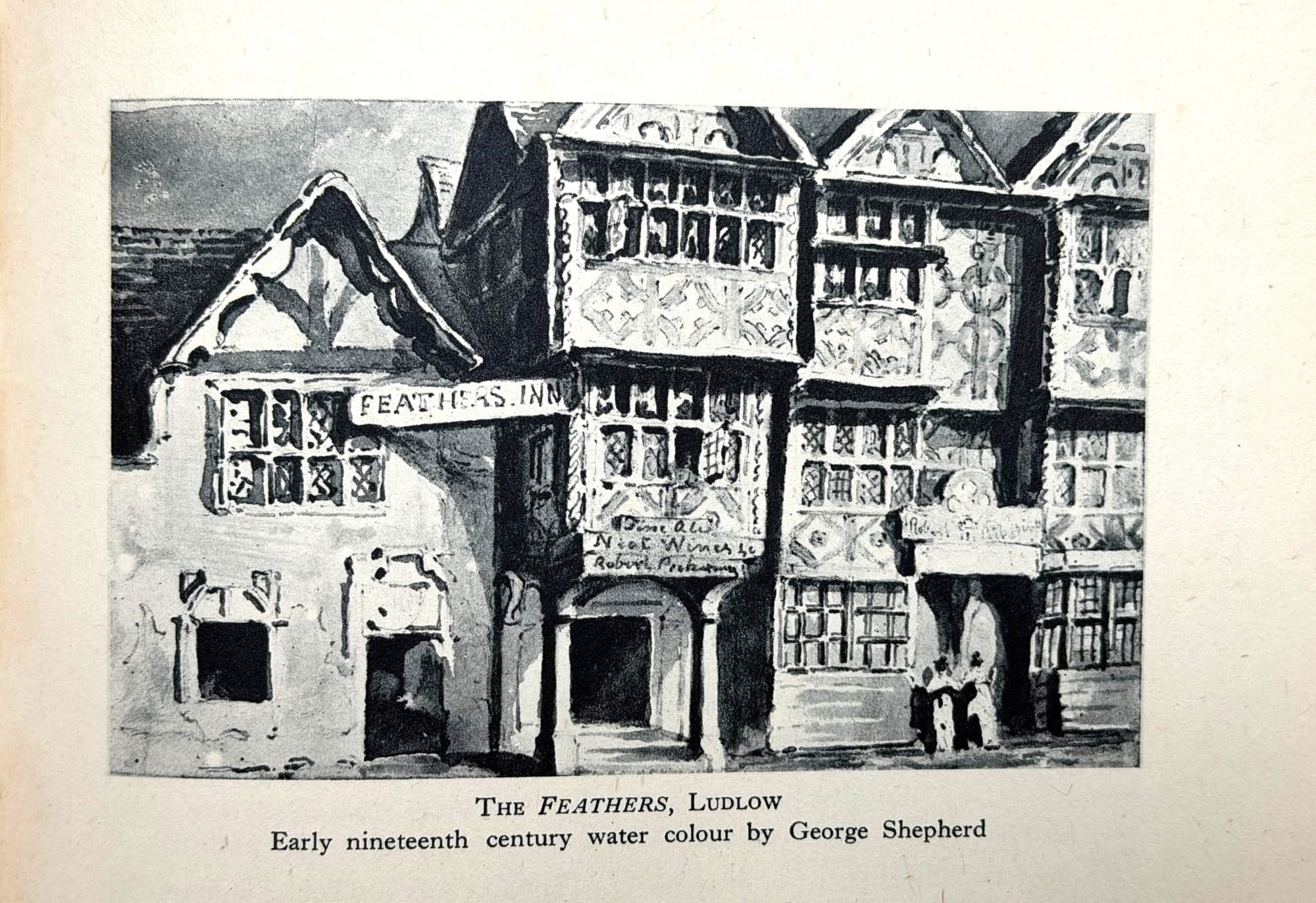
Britstop Pubs
Britstops is a membership scheme that allows me to stay at designated car parks (mostly pubs🎉).
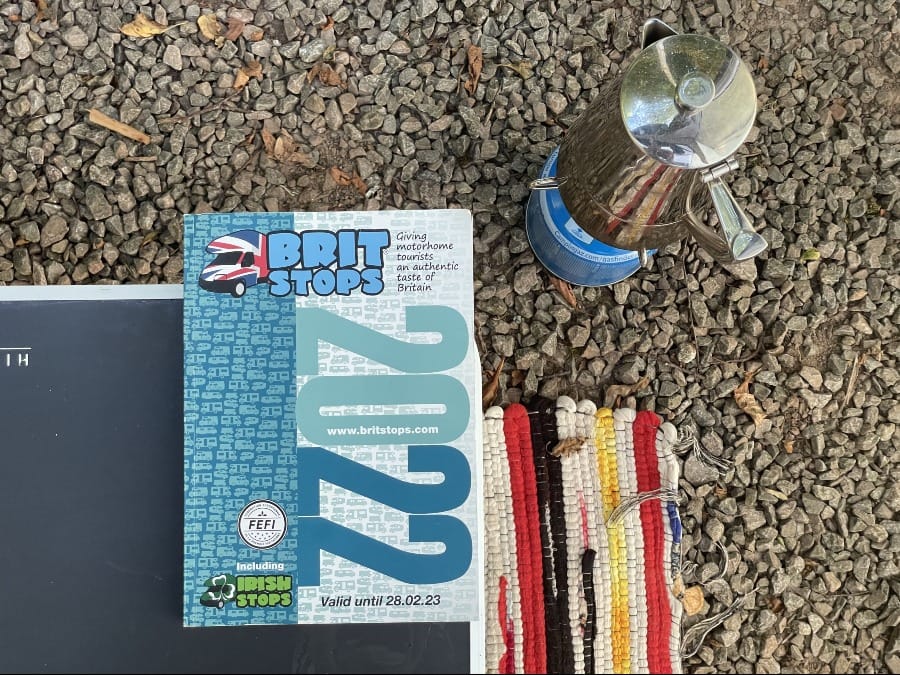
I head for a village near Marlborough in Wiltshire called Wilton. There's a little pub there that might have enough room for the VW. I call them up and they tell me to park at the shrub end of the car park. Staying over in pub car parks is fraught with danger. Firstly - temptation, secondly, closing time snoopers, and finally, narrow parking spaces.
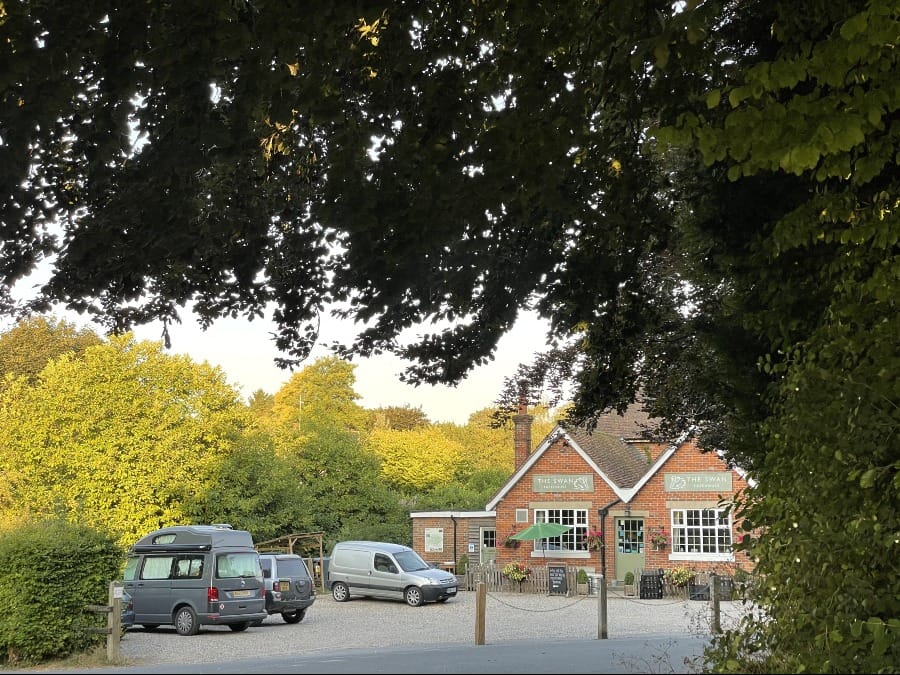
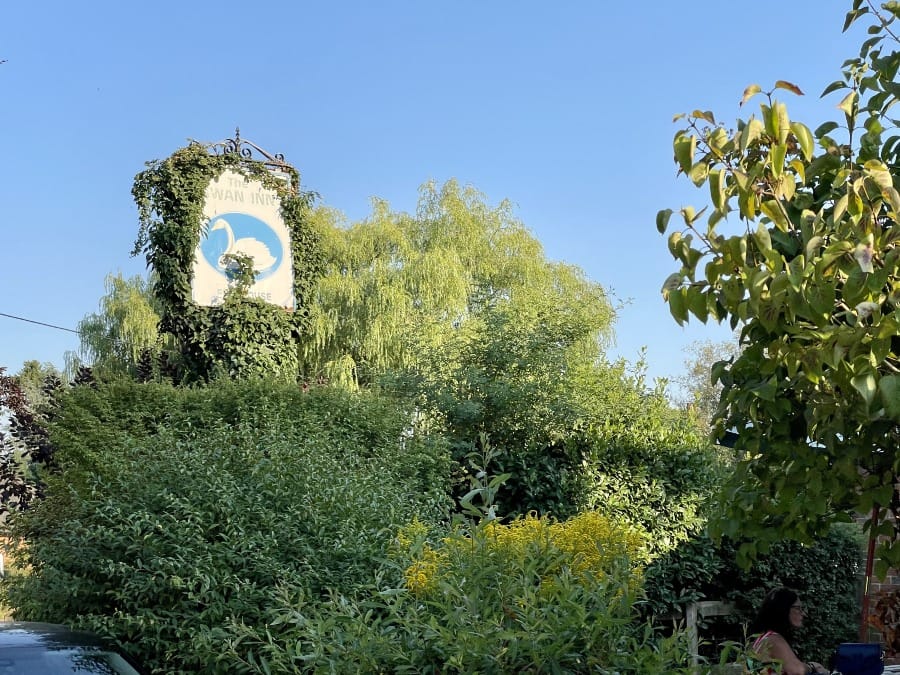
I needn't have worried - the staff at The Swan are extremely welcoming. The location is divine and I manage to get some rest and respite with the help of some friendly Emus in the adjacent field.One particular bird catches my attention - the perfect subject for a photo shoot.
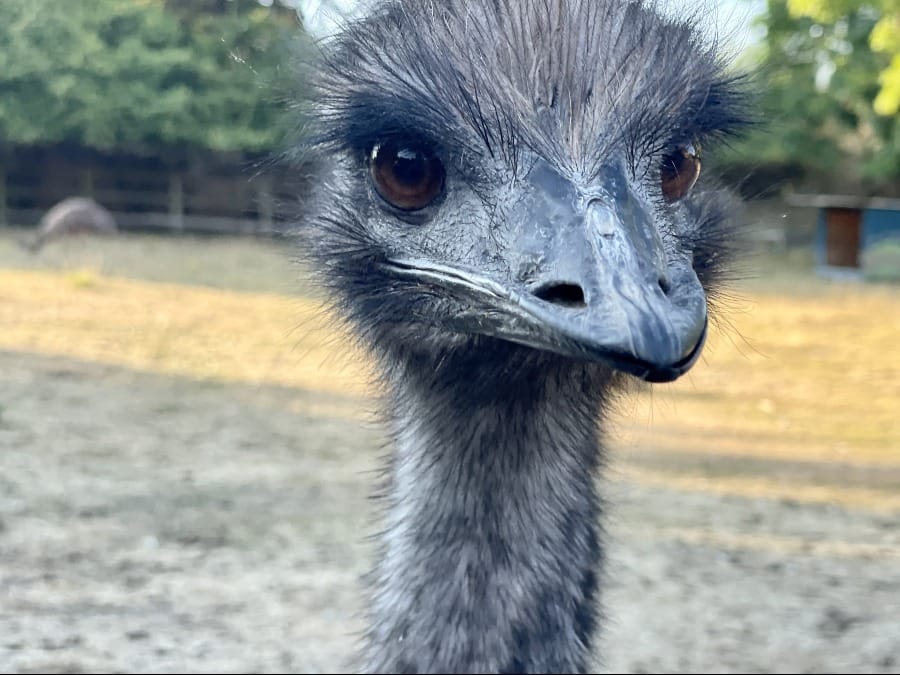
Others aren't interested at all...
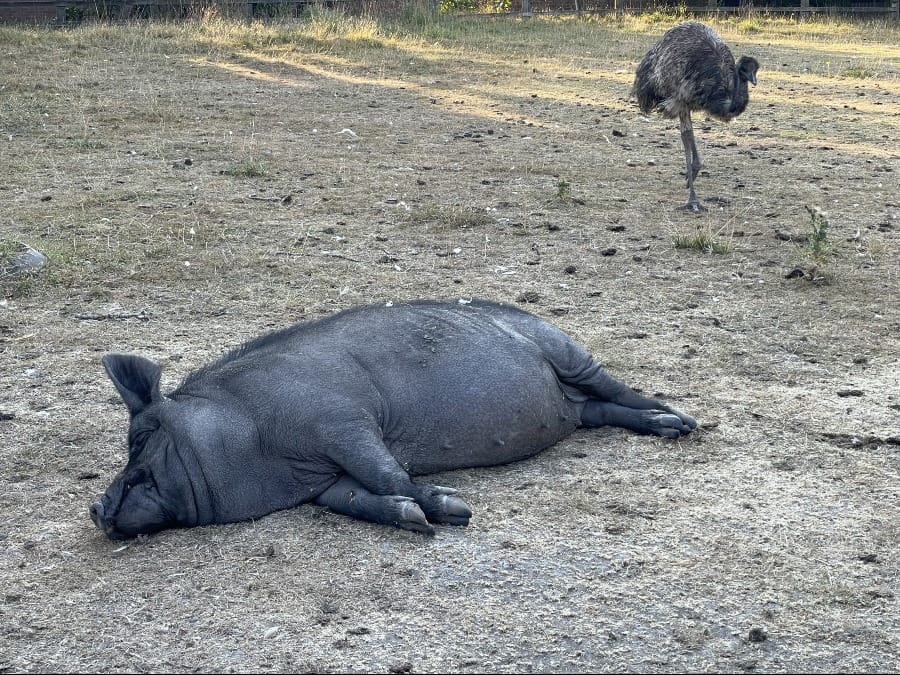
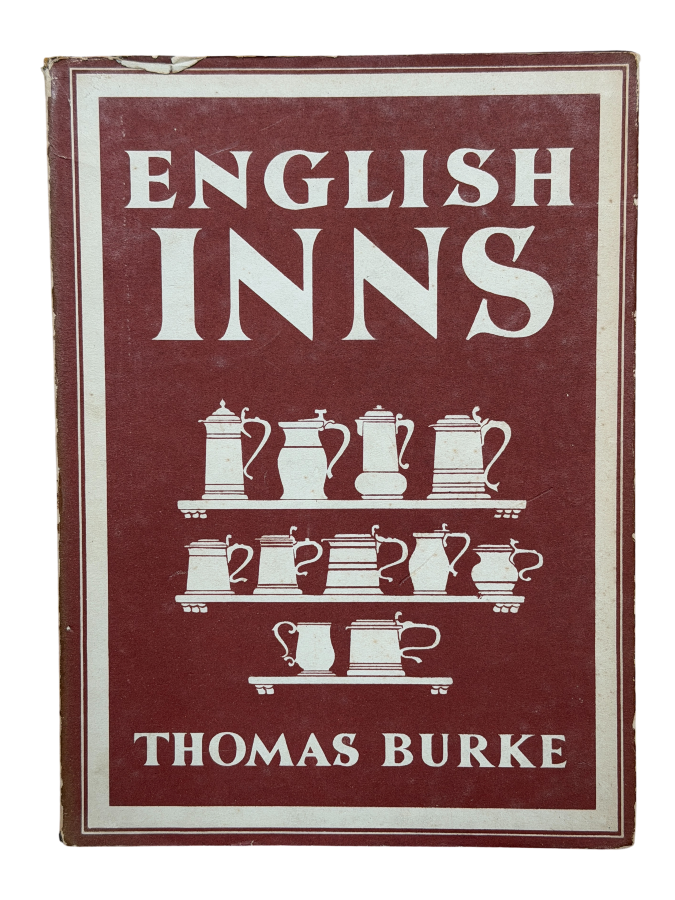
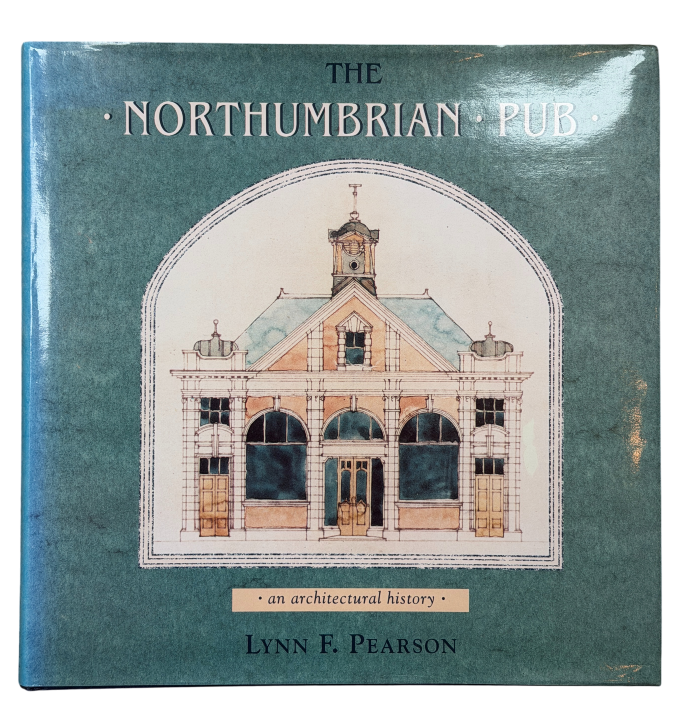
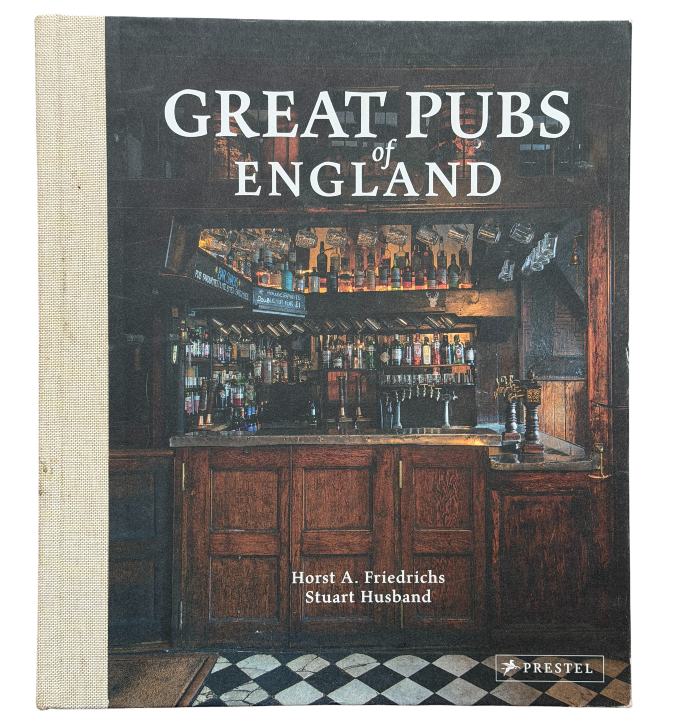
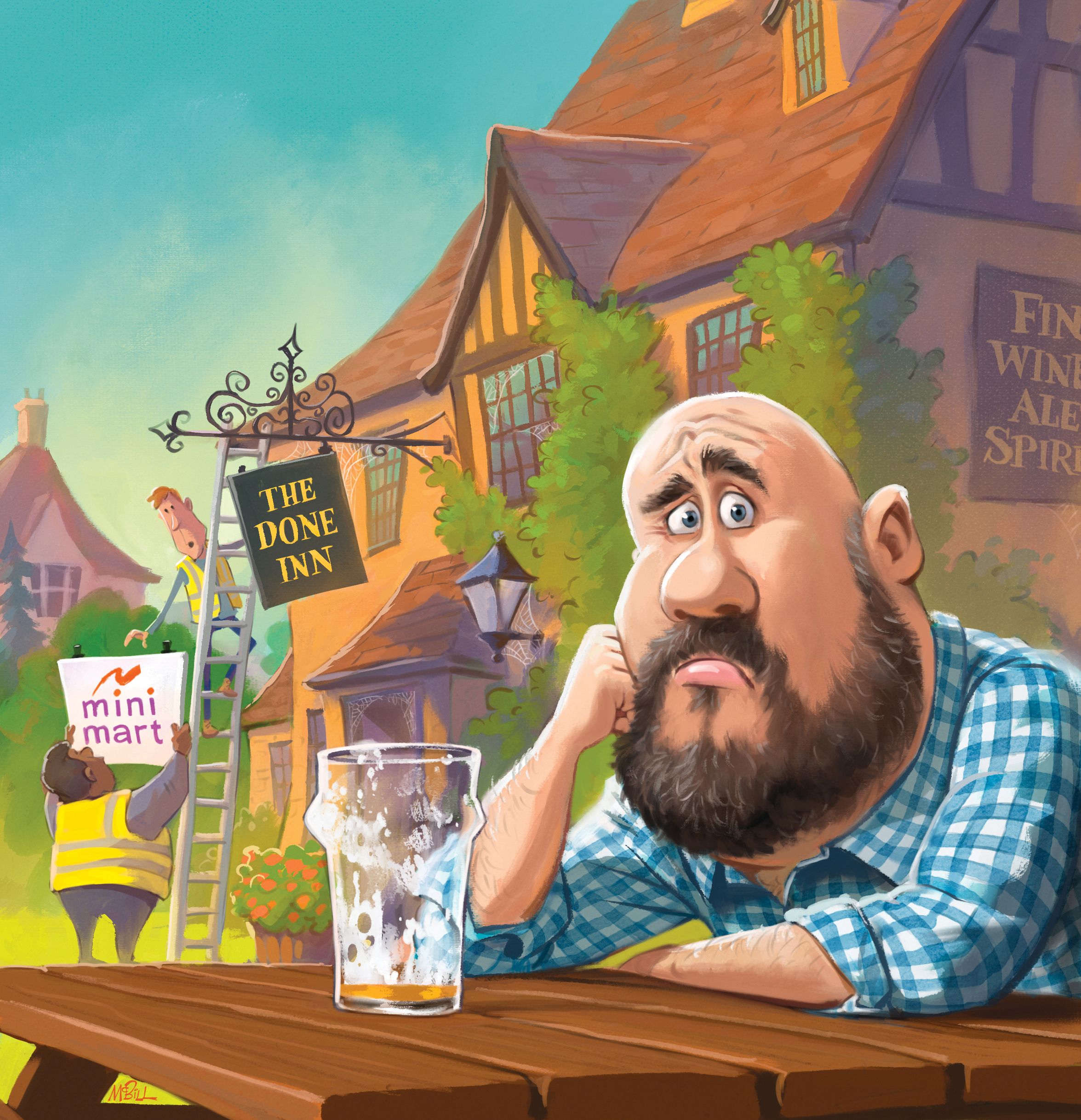
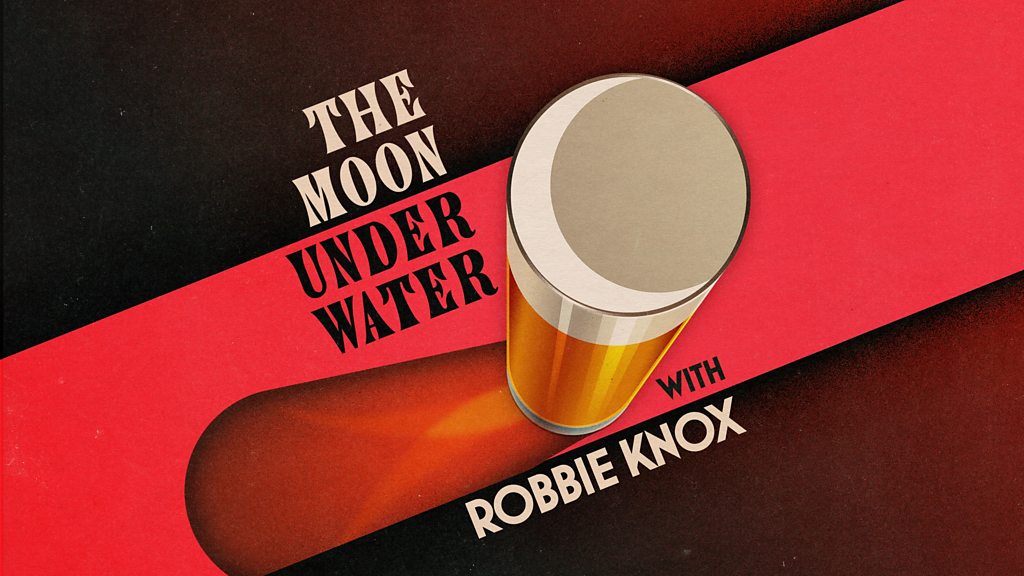
Salvation at The Nag's Head, Shrewsbury
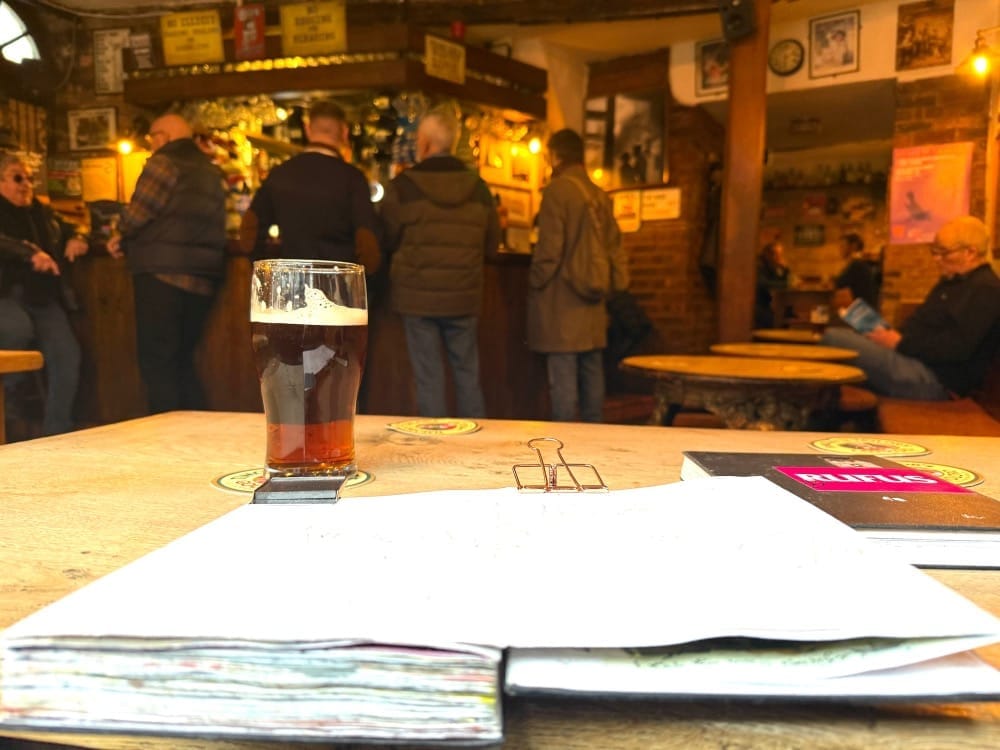
Like Birkin, I once believed that the cracks and fragments of my shattered self were shameful wounds. But now I see them for what they are – like my camera aperture – spaces for light.
Read on:
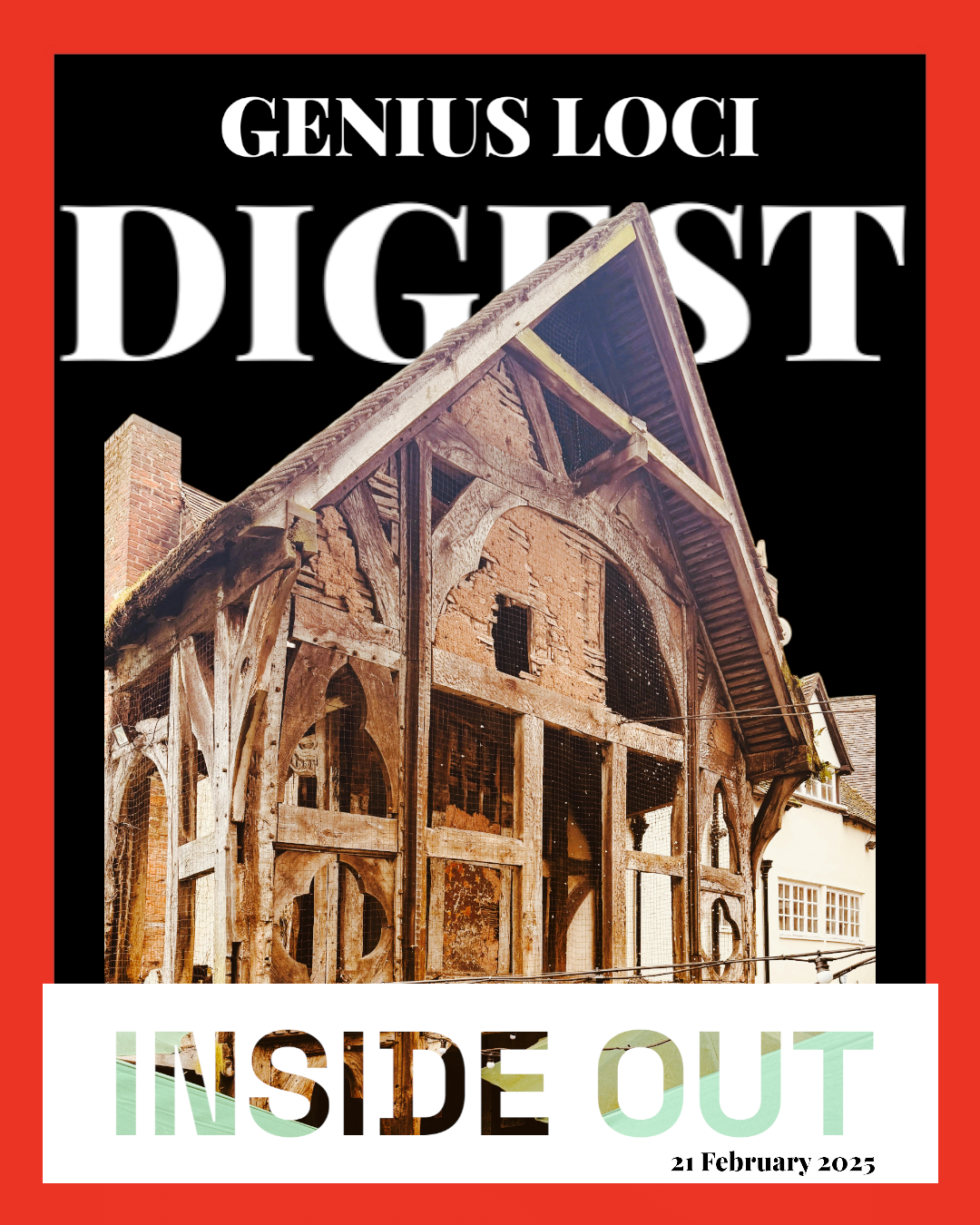
Finding solace in the winter months in (not a pub) but a bakery in Ashwell.
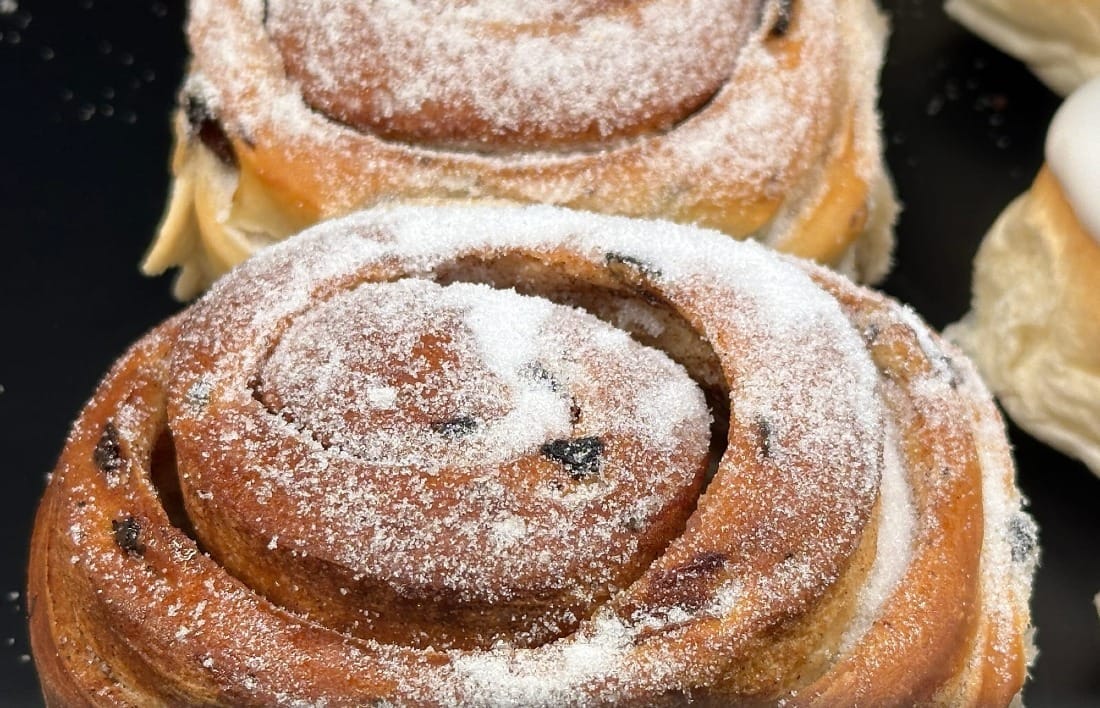
The bakery is more than the sum of its parts: the people, the building, the warmth, the baked goods and the craft. This building is as much a respite as it is a bakery, as much a mental space than physical. Pies and puddings sum up the warm spirit of this place as well as its contents.
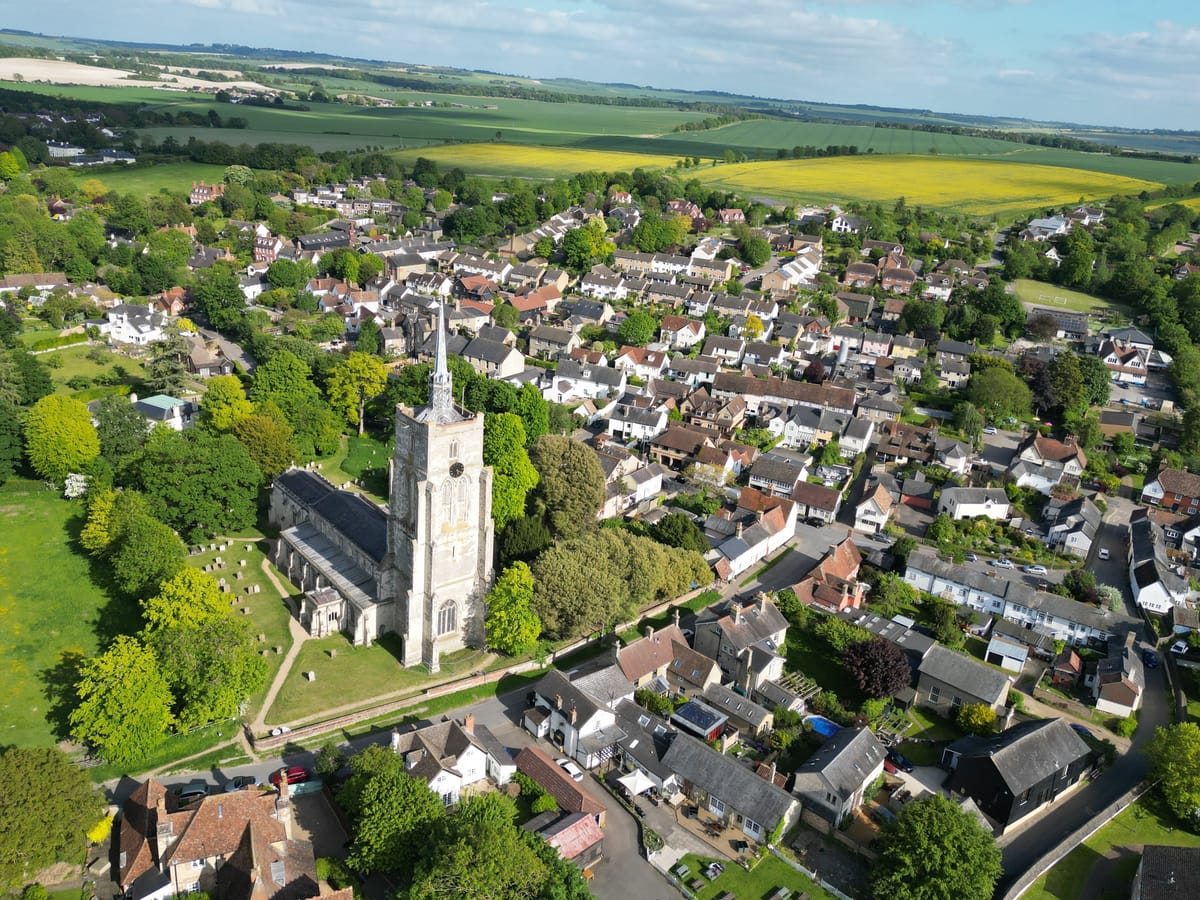
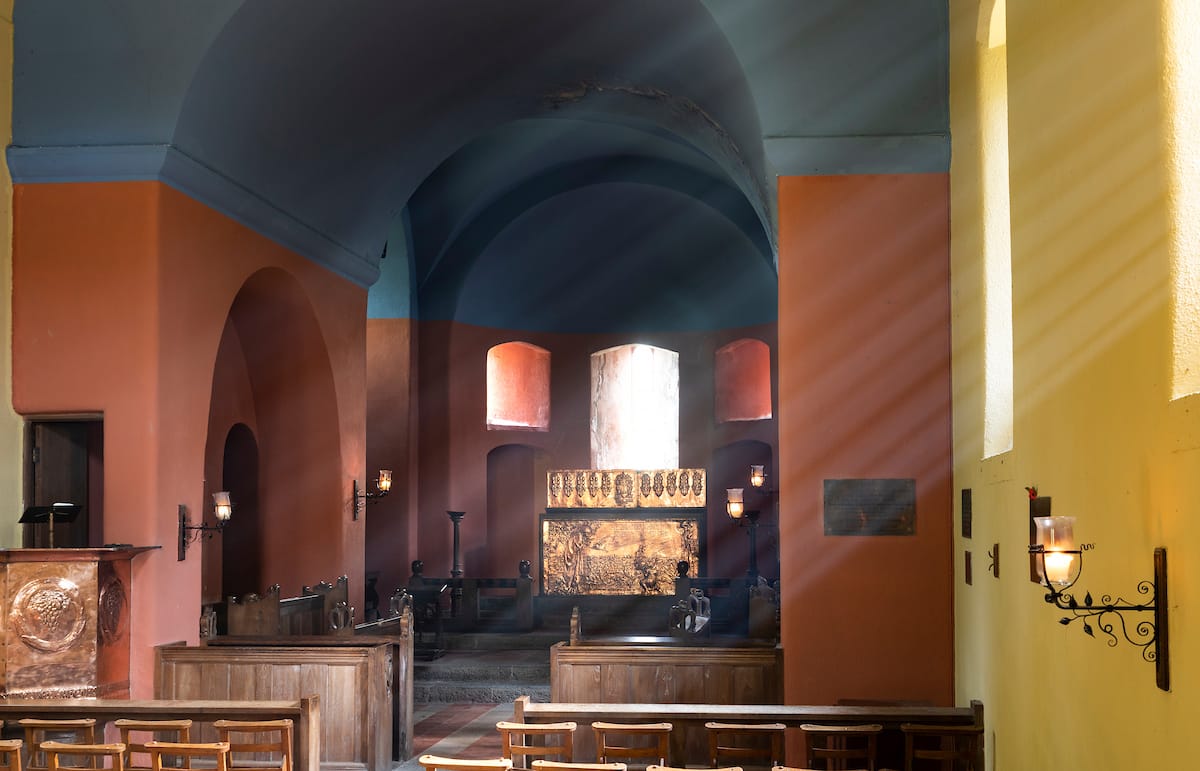
For Members Only - The Million Petalled Flower: Repoussé
Three remarkable places burnished with golden light.
Click to ViewMore Members' Supplements here:
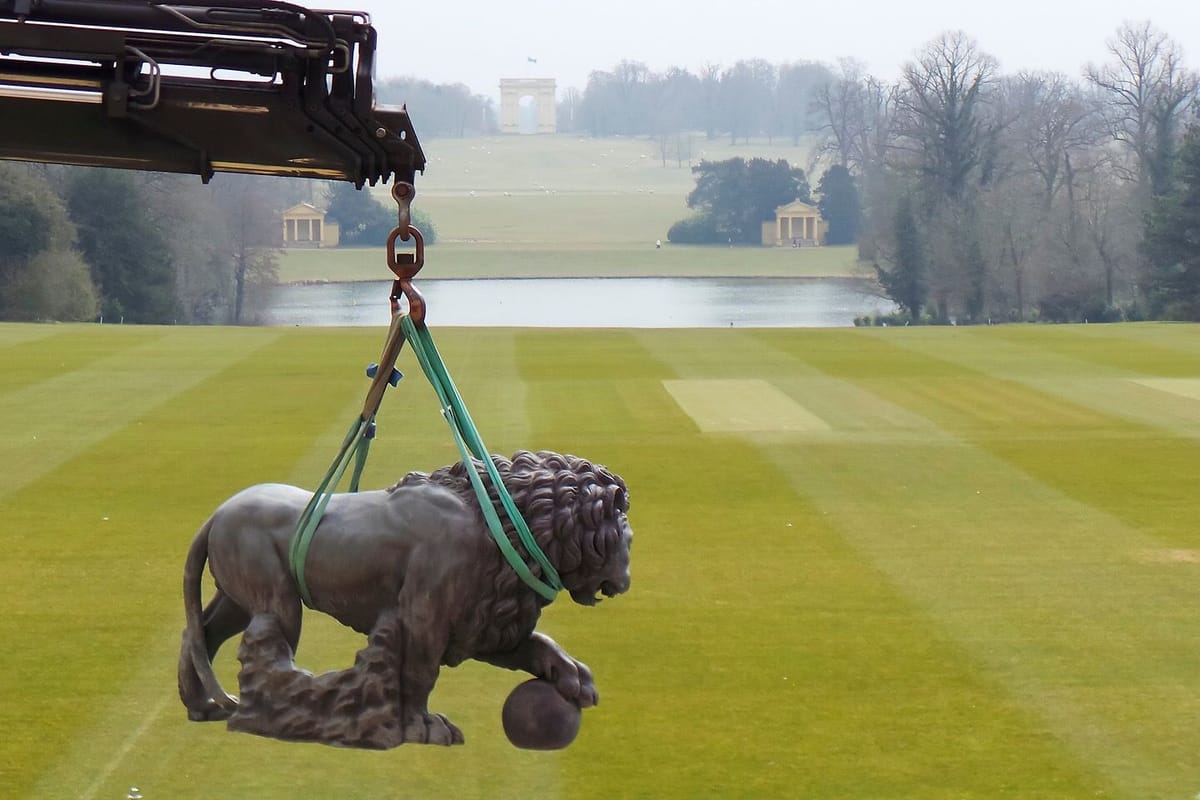
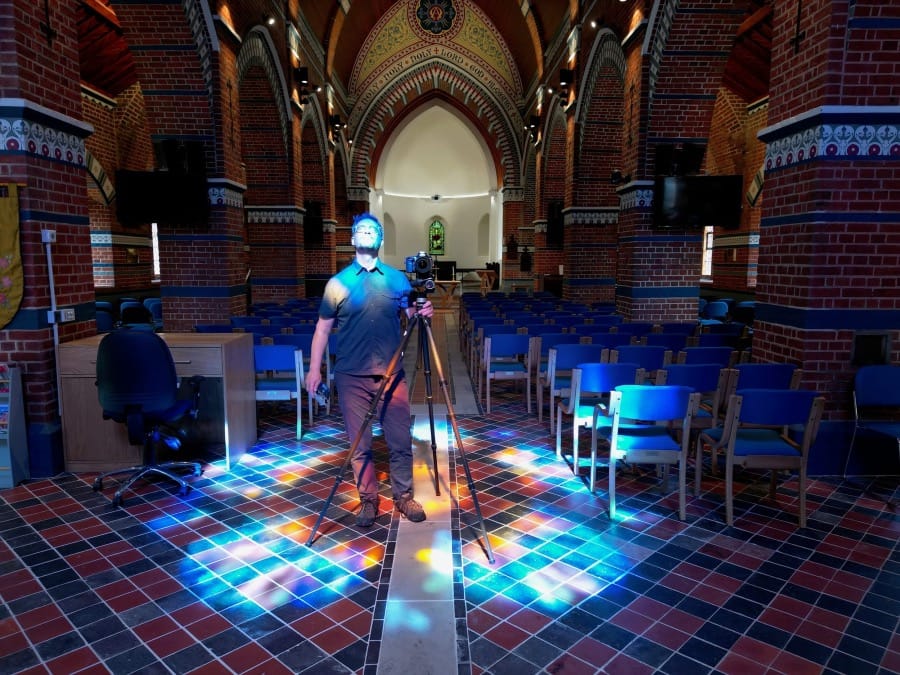
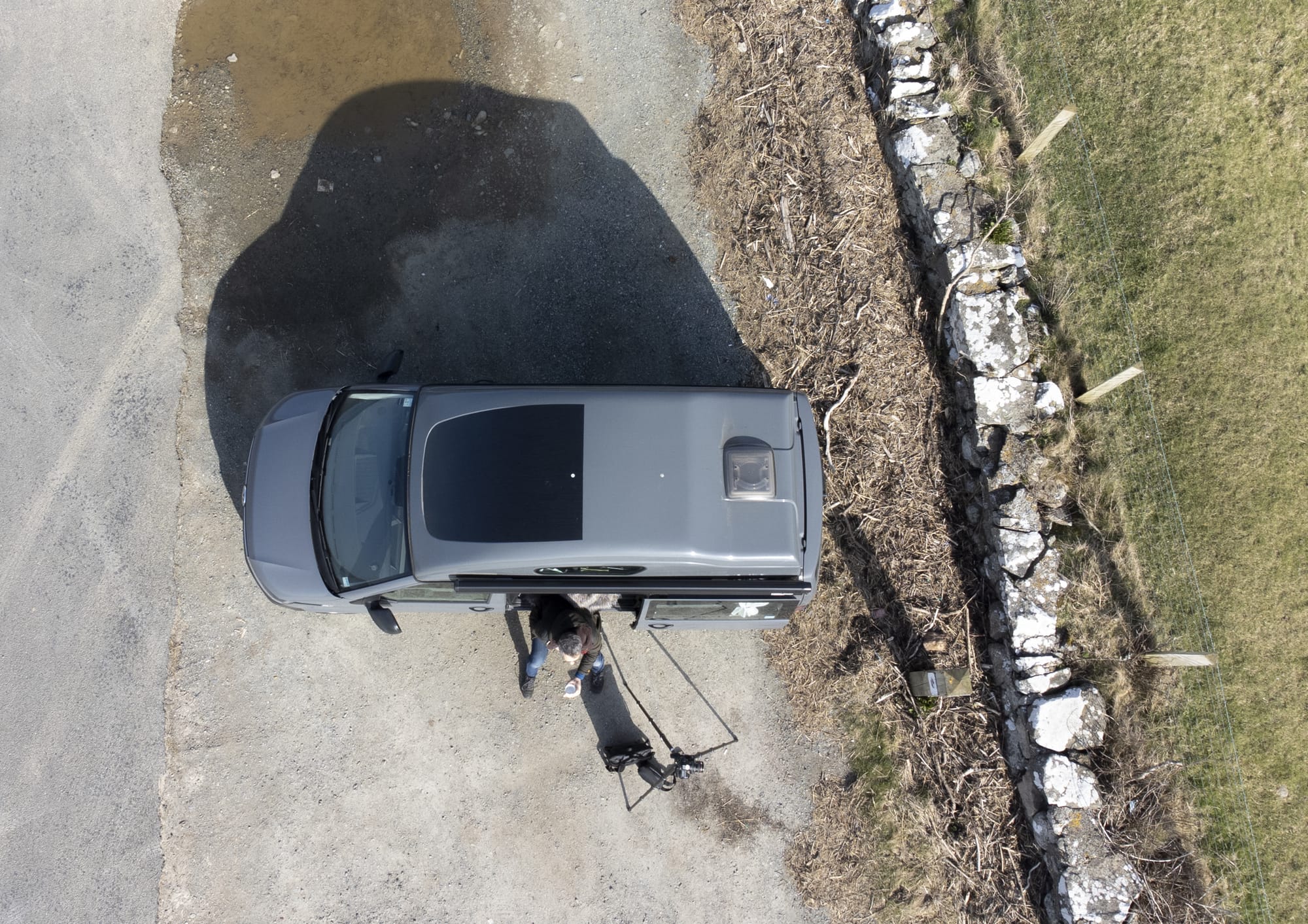
Kind words from a subscriber:
Andy your work is becoming wonderful, remarkable. A so-called breakdown has been milled into its constituent parts, becoming profound construction: through perception, architecture, the lens and the pen. In your Repton crypt essay a deep description of our social anxiety - and our reason to be....
Recent Digest Sponsors:
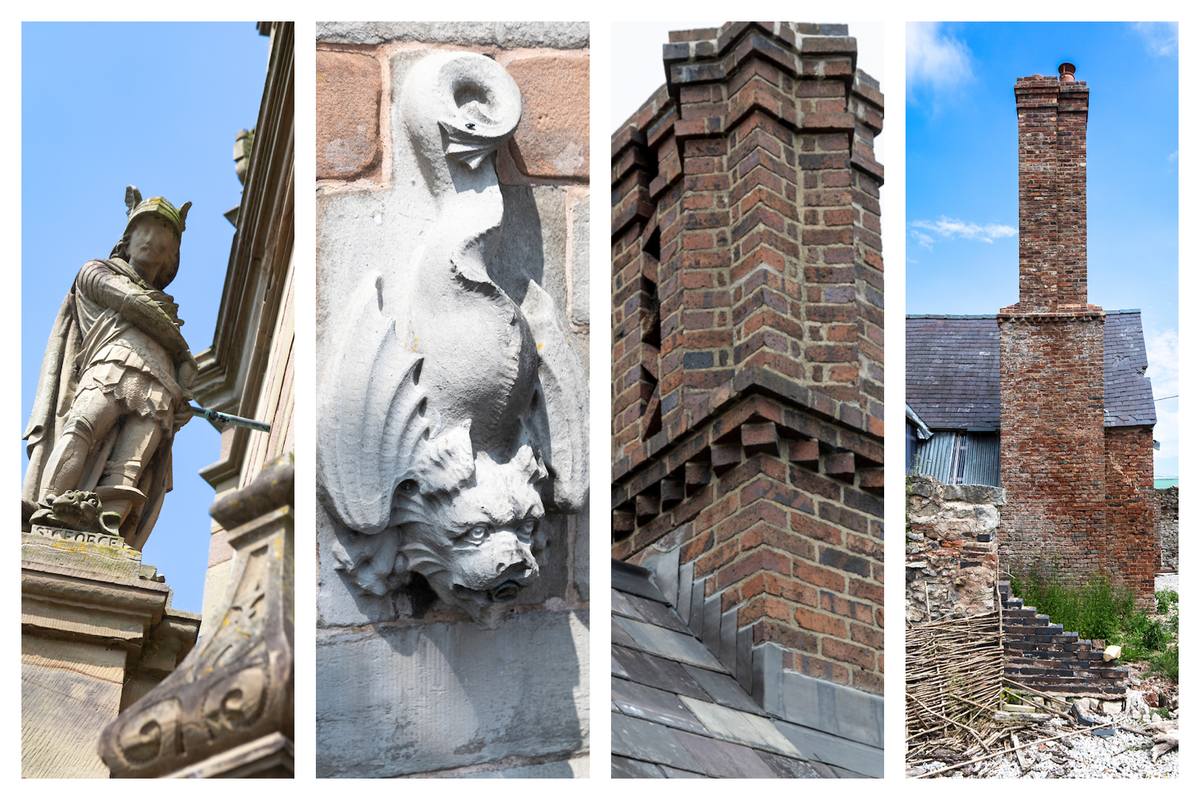
Congratulations!🥂
🥳 Congrats to new members Becca and Debbie - I'll be sending out the Temple Church book and Interstellar Illustration today.


Thank You!
Photographs and words by Andy Marshall (unless otherwise stated). Most photographs are taken with Iphone 16 Pro and DJI Mini 3 Pro.
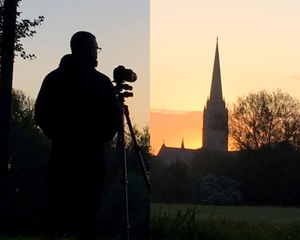
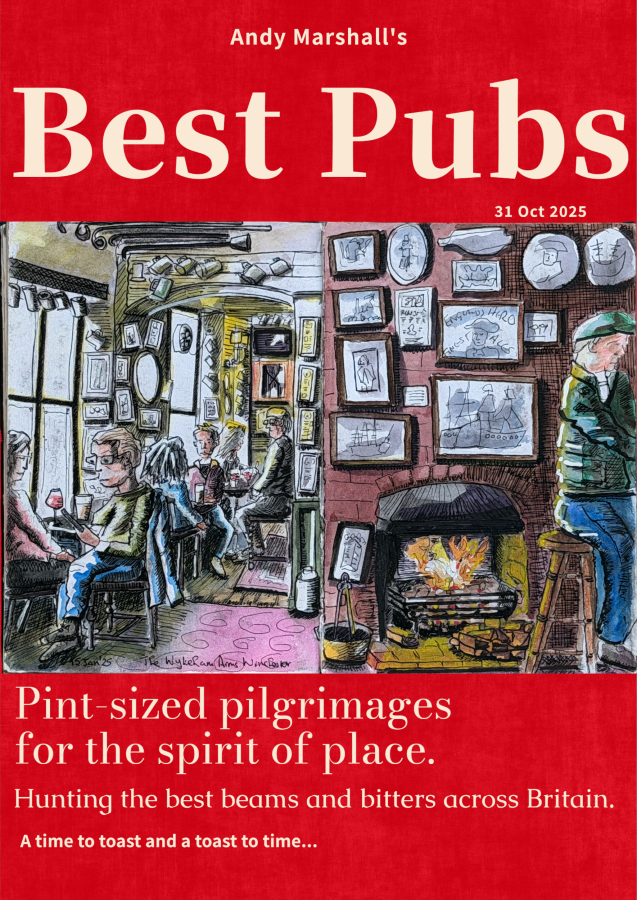
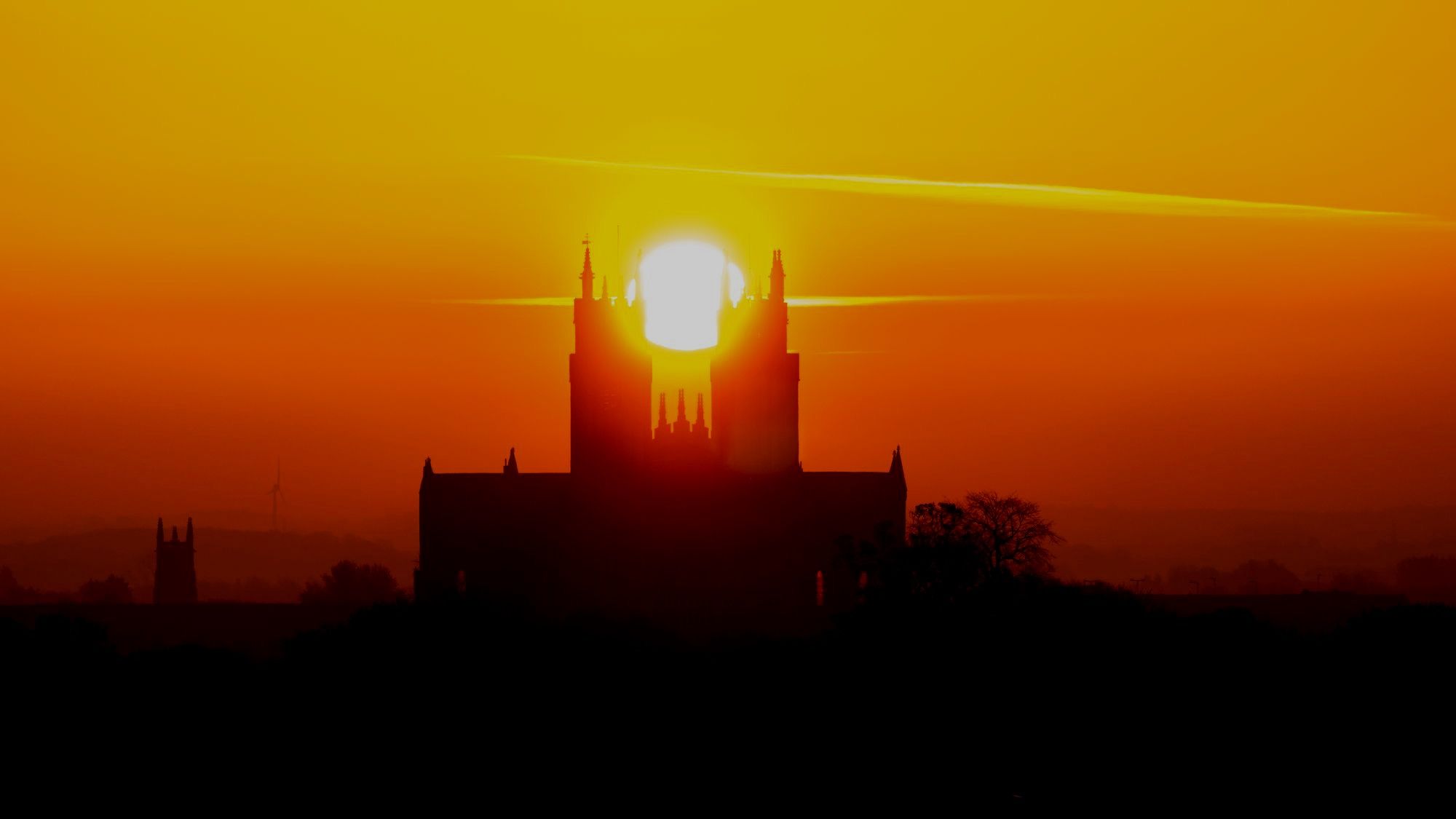
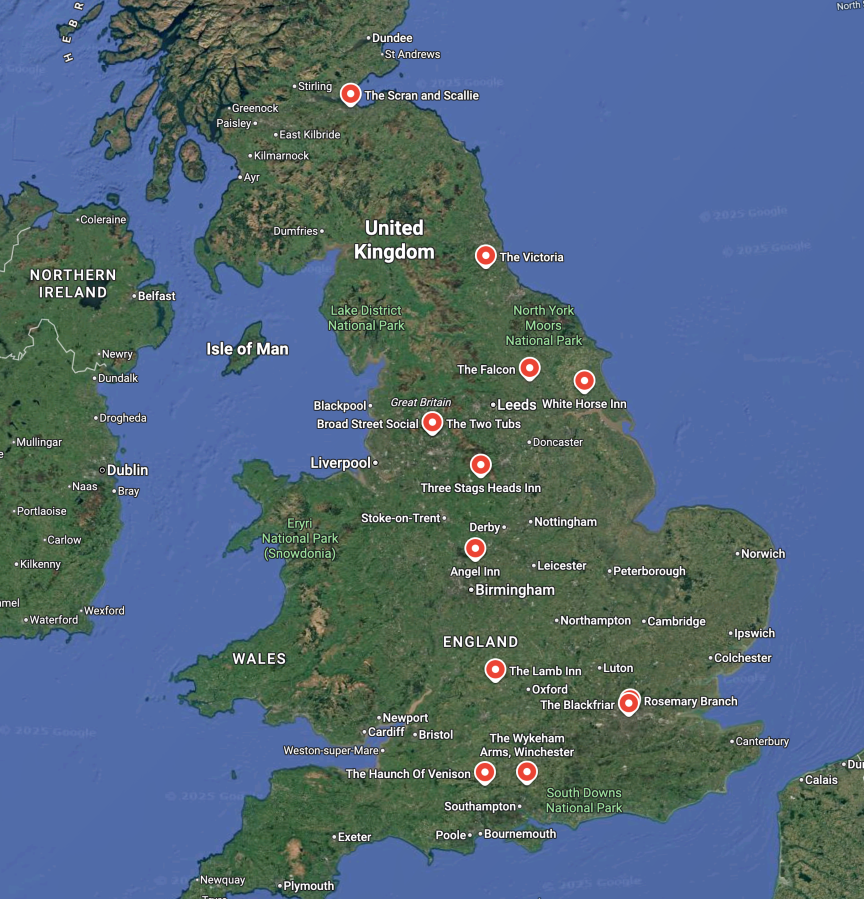


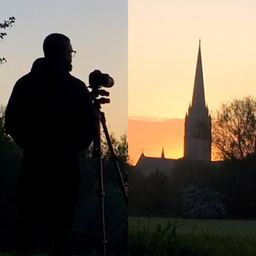
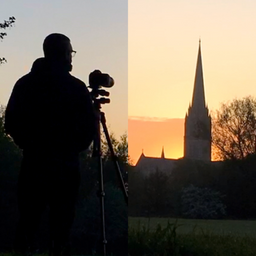
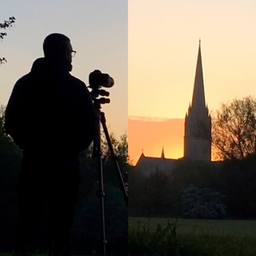
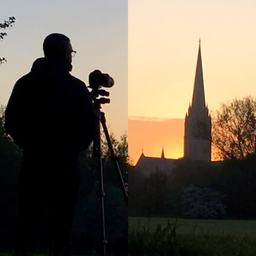
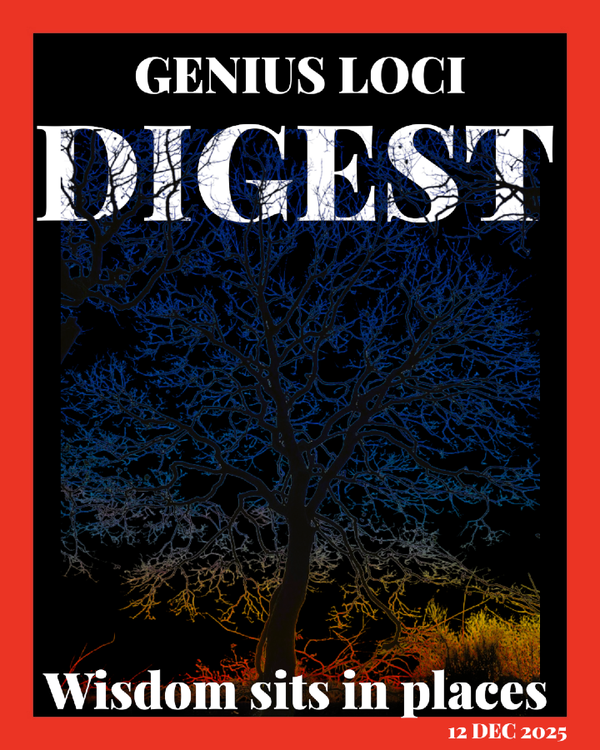
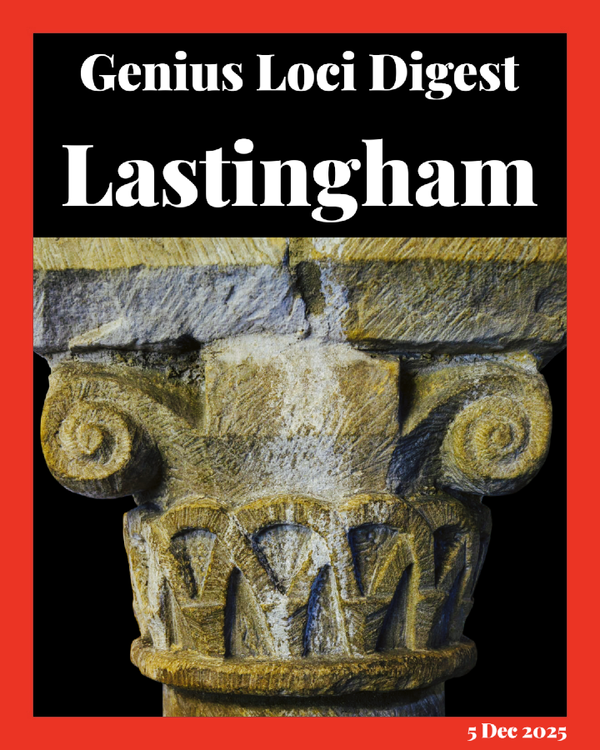
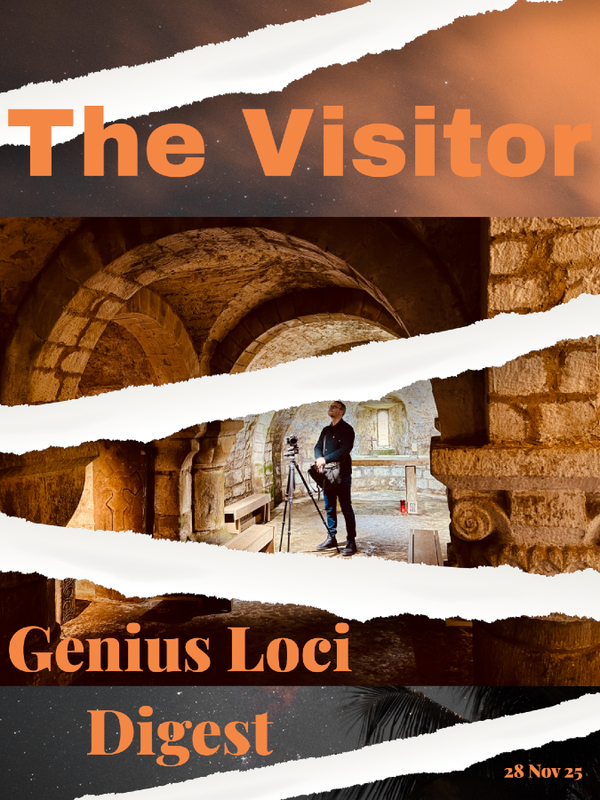


Member discussion